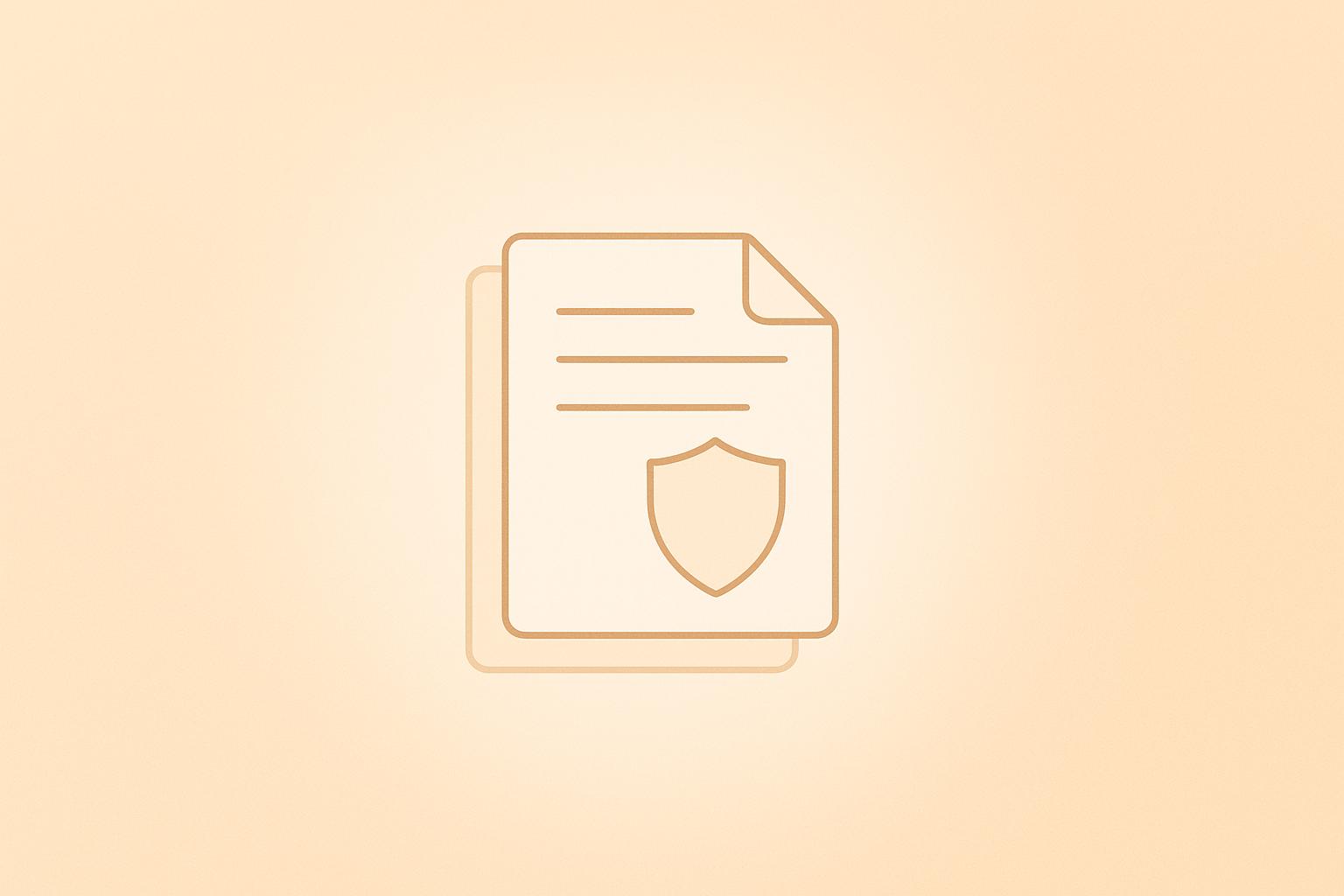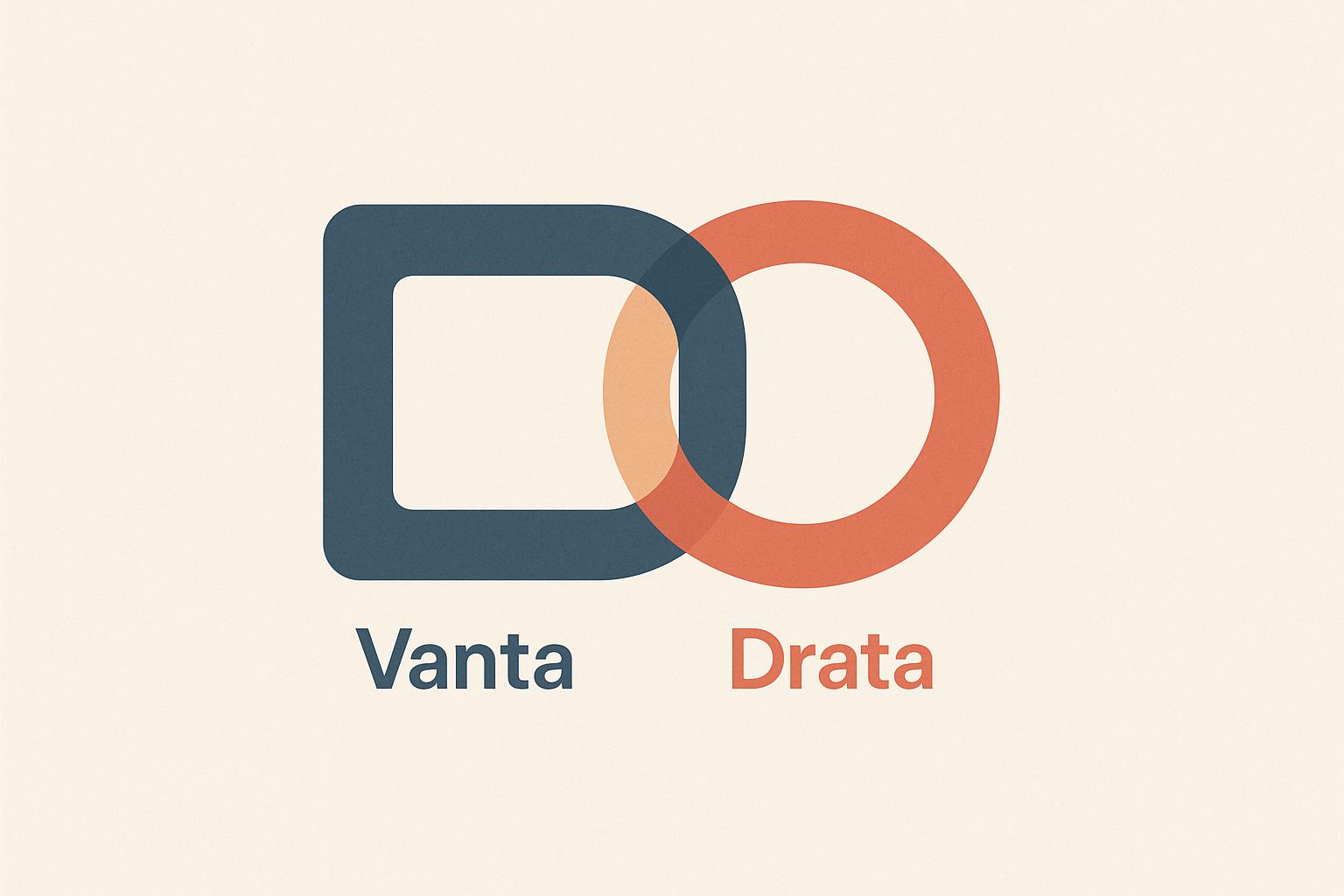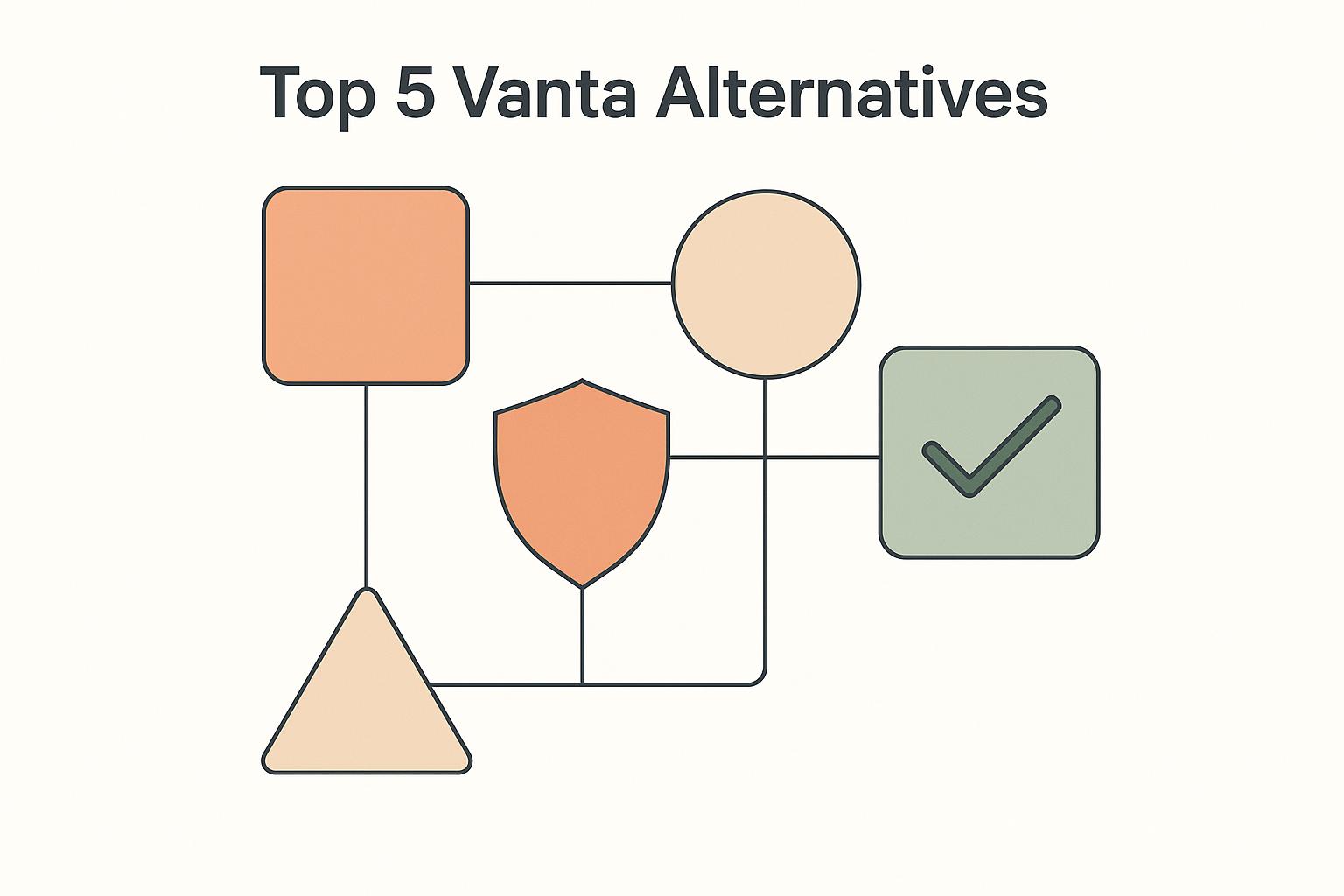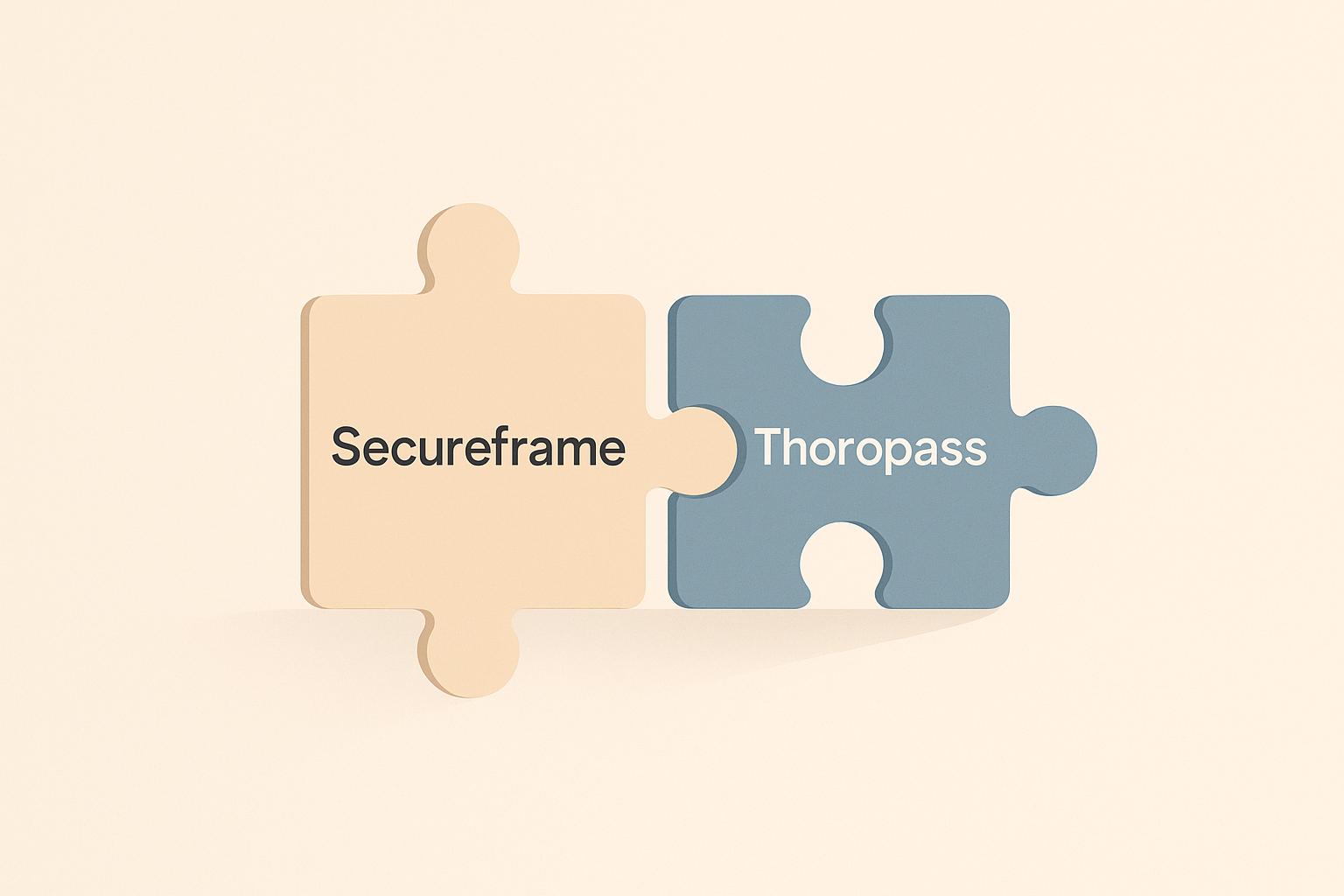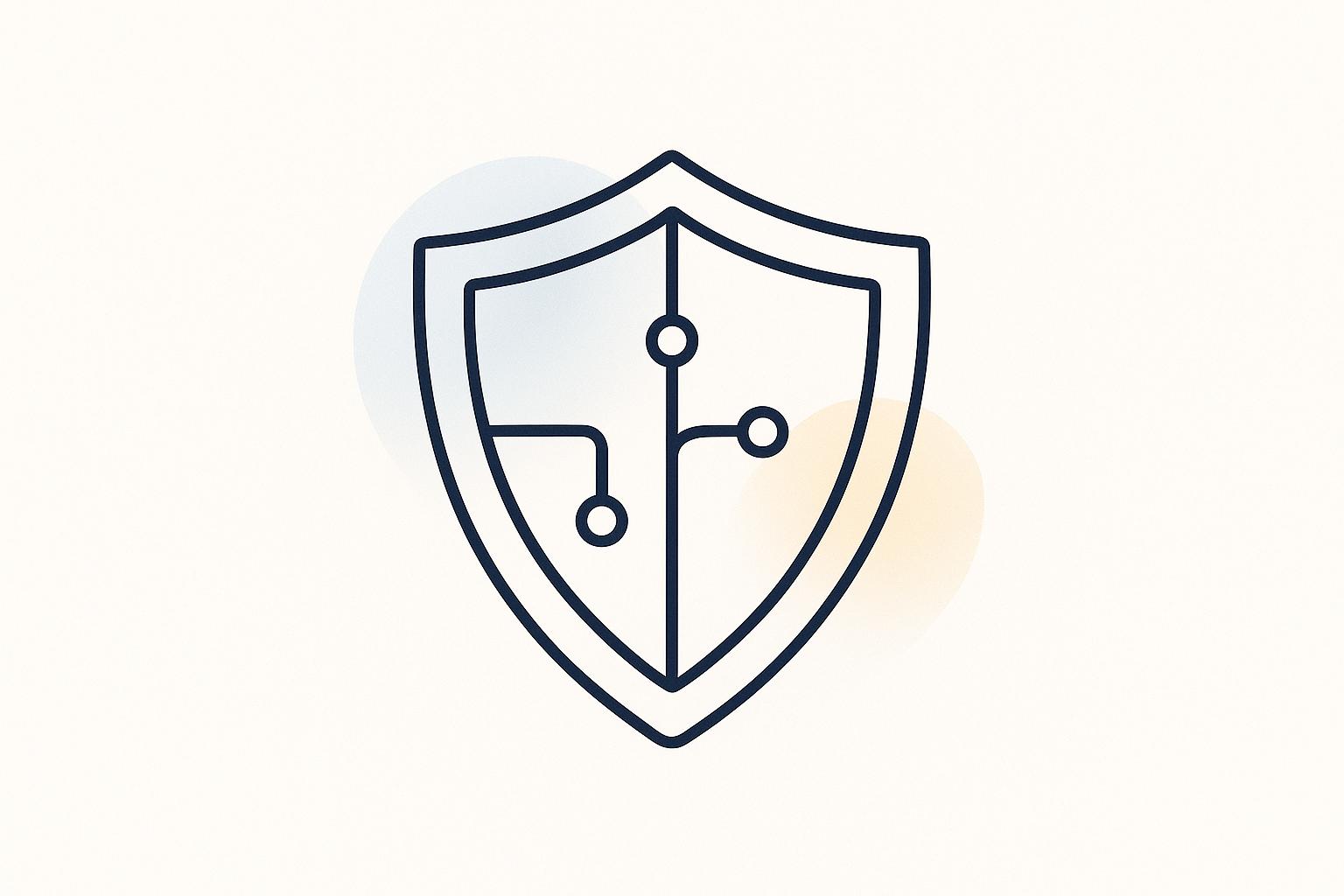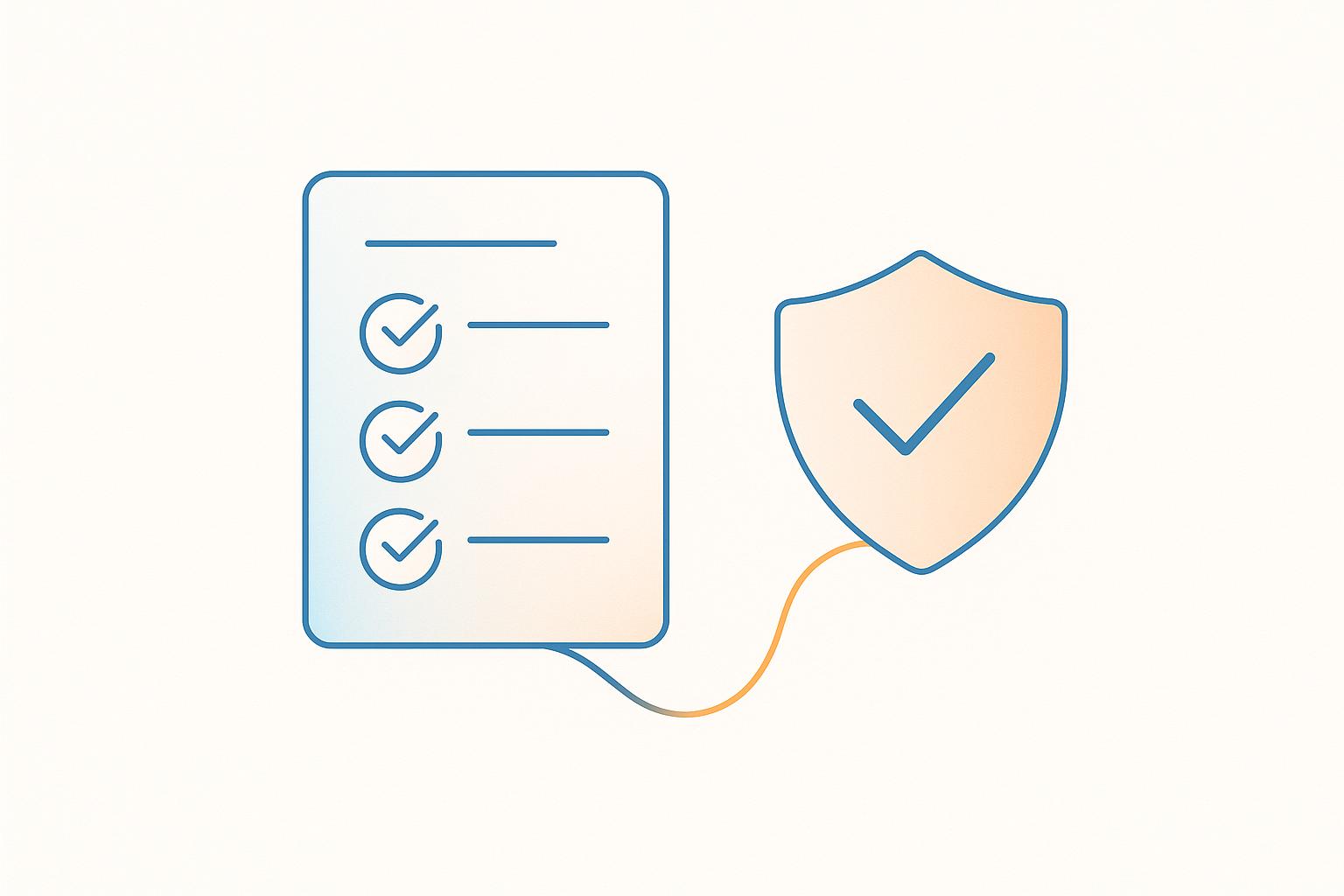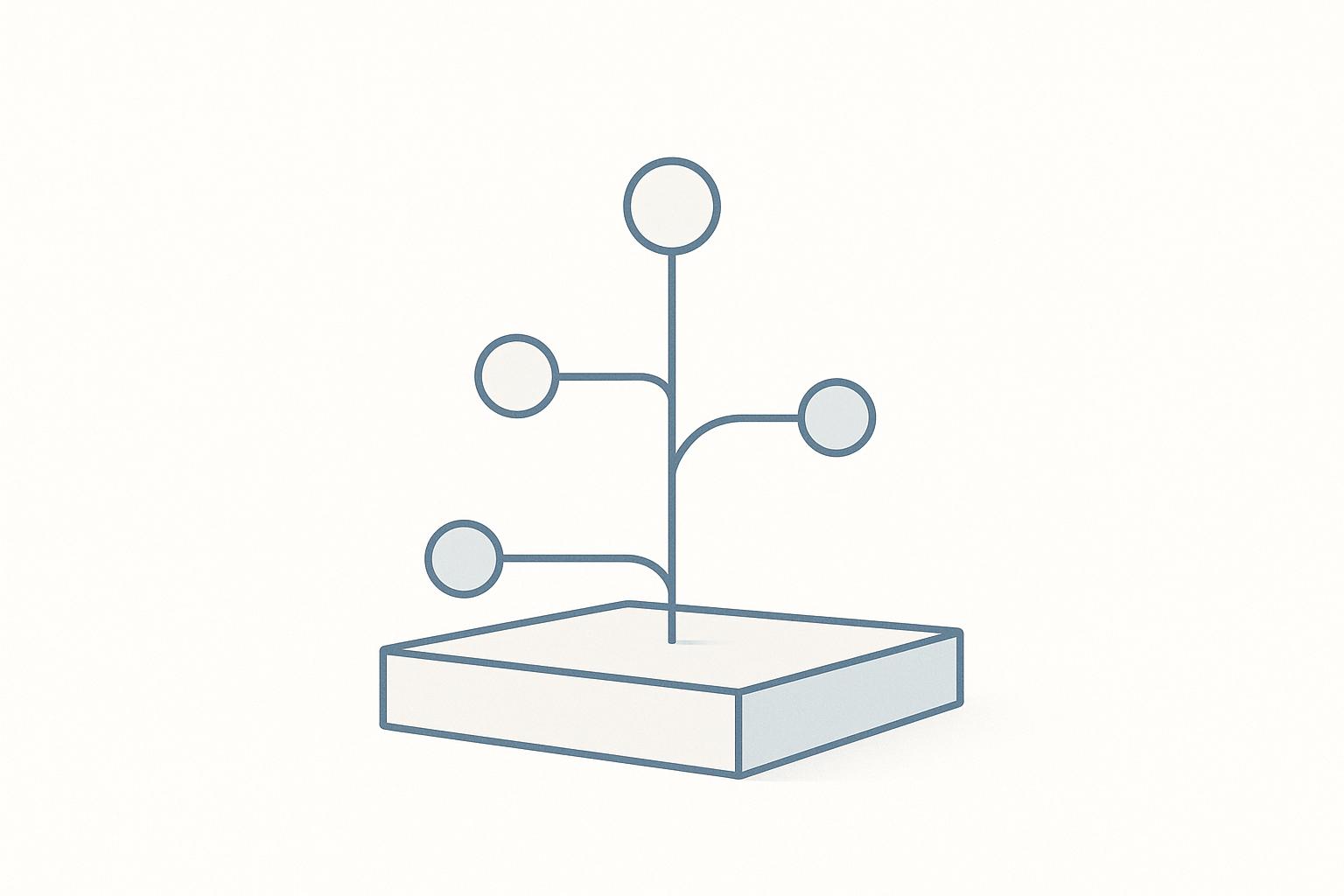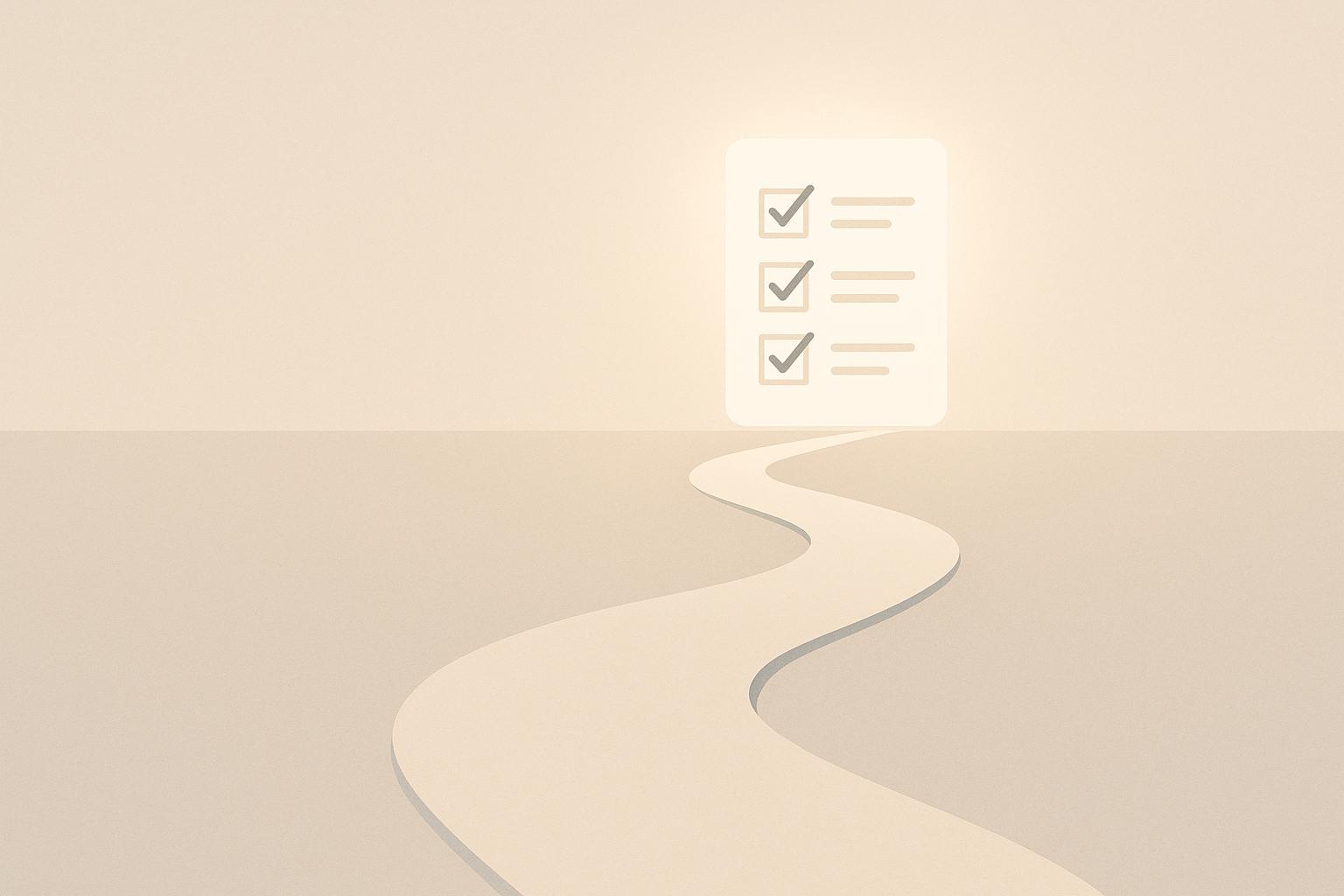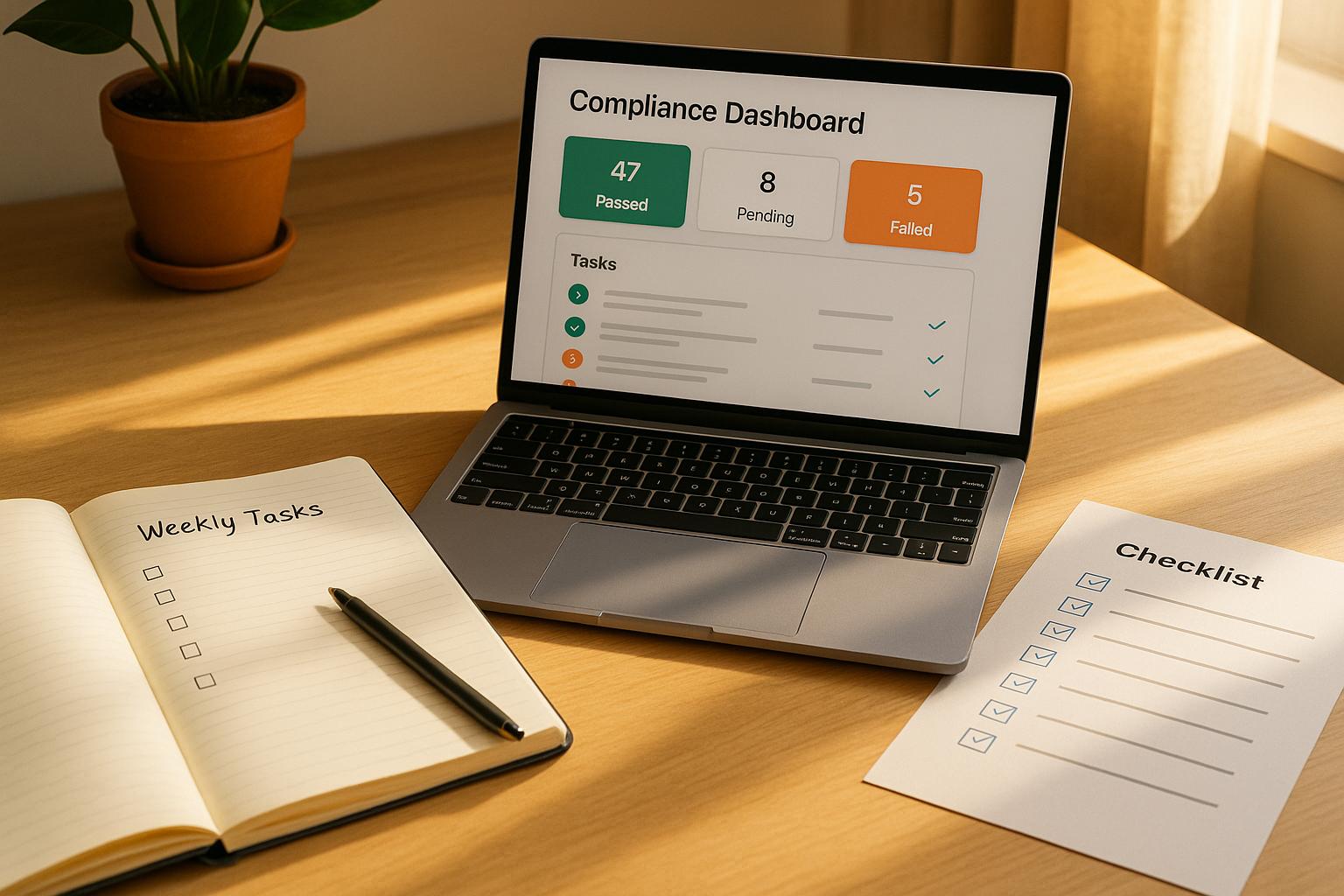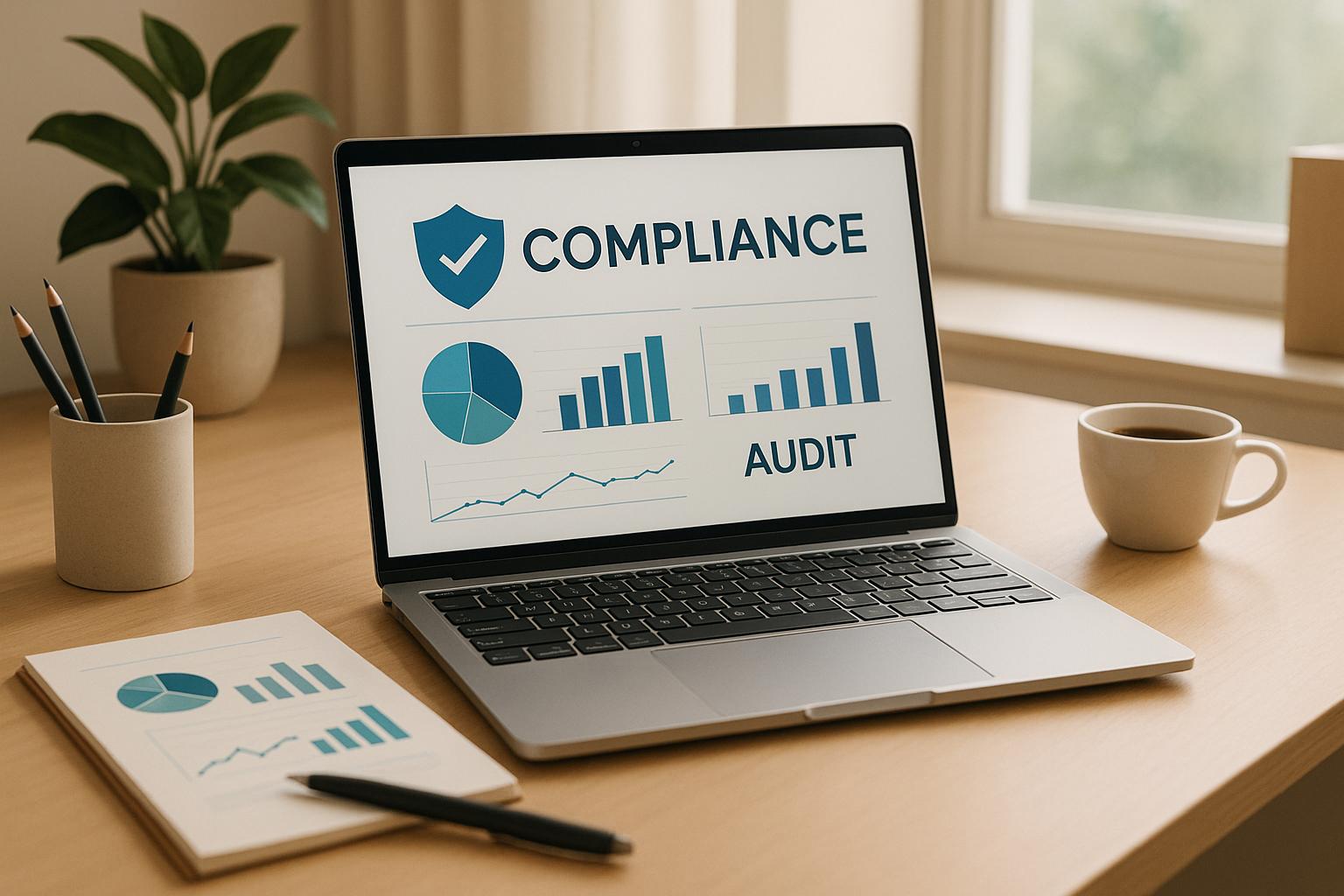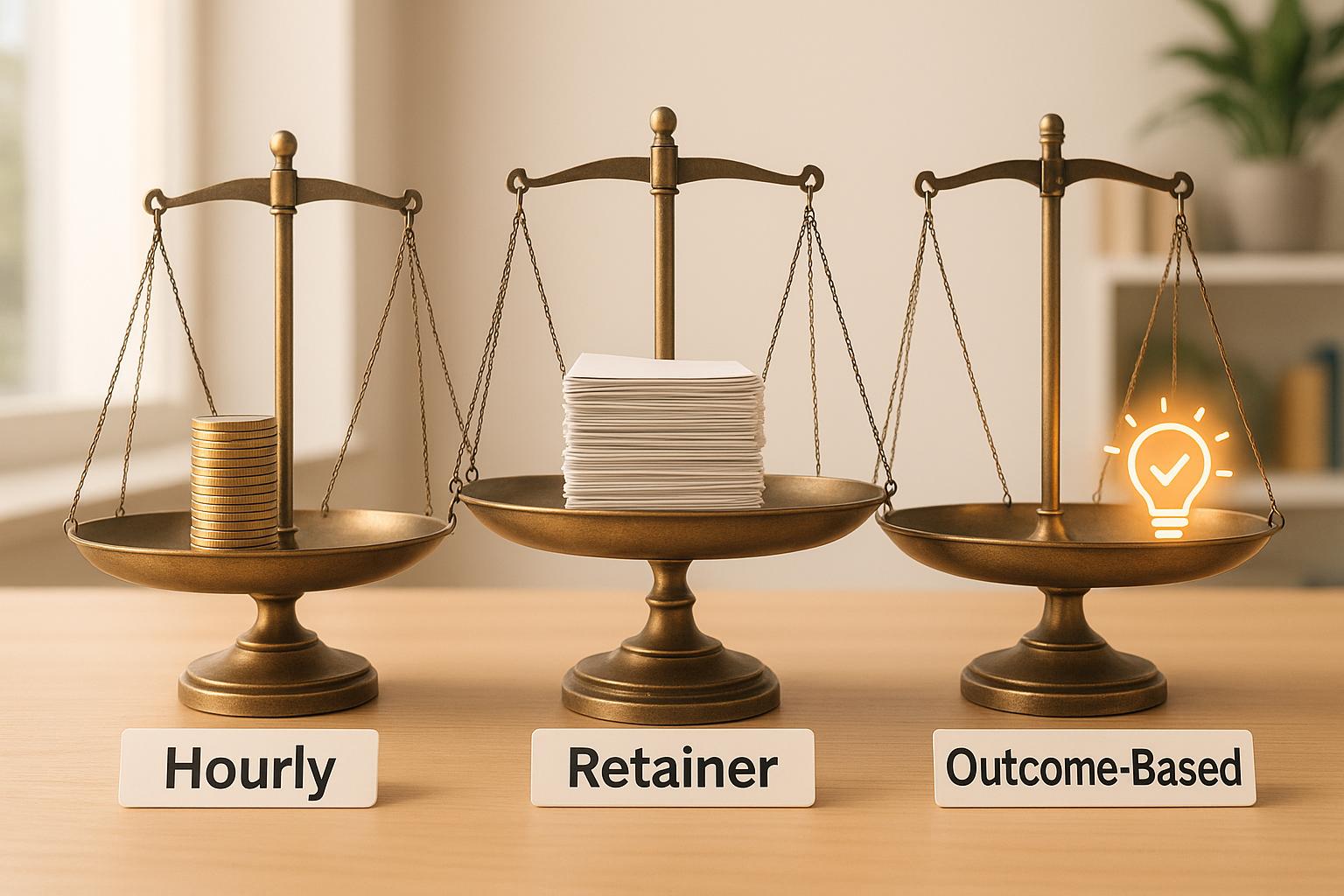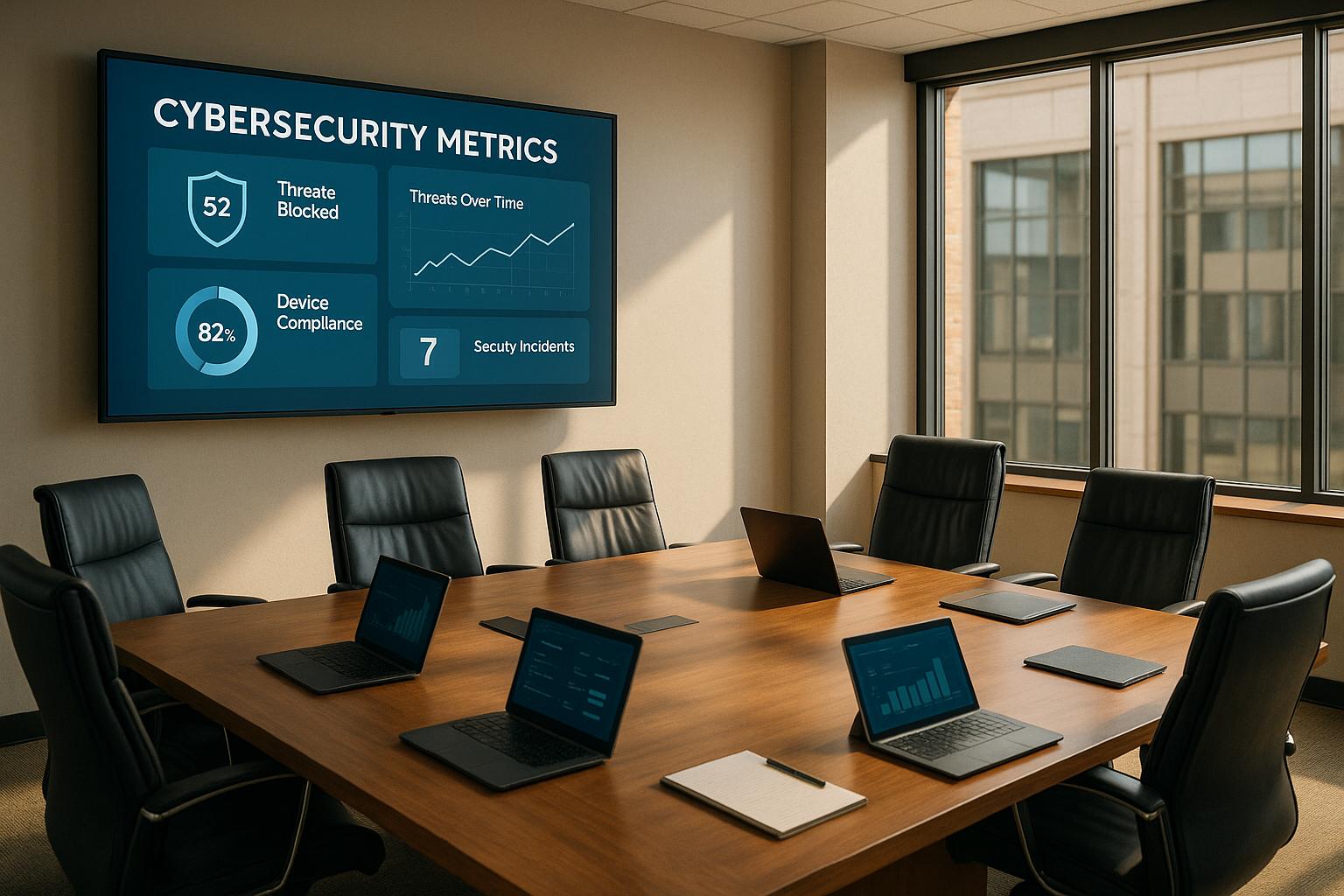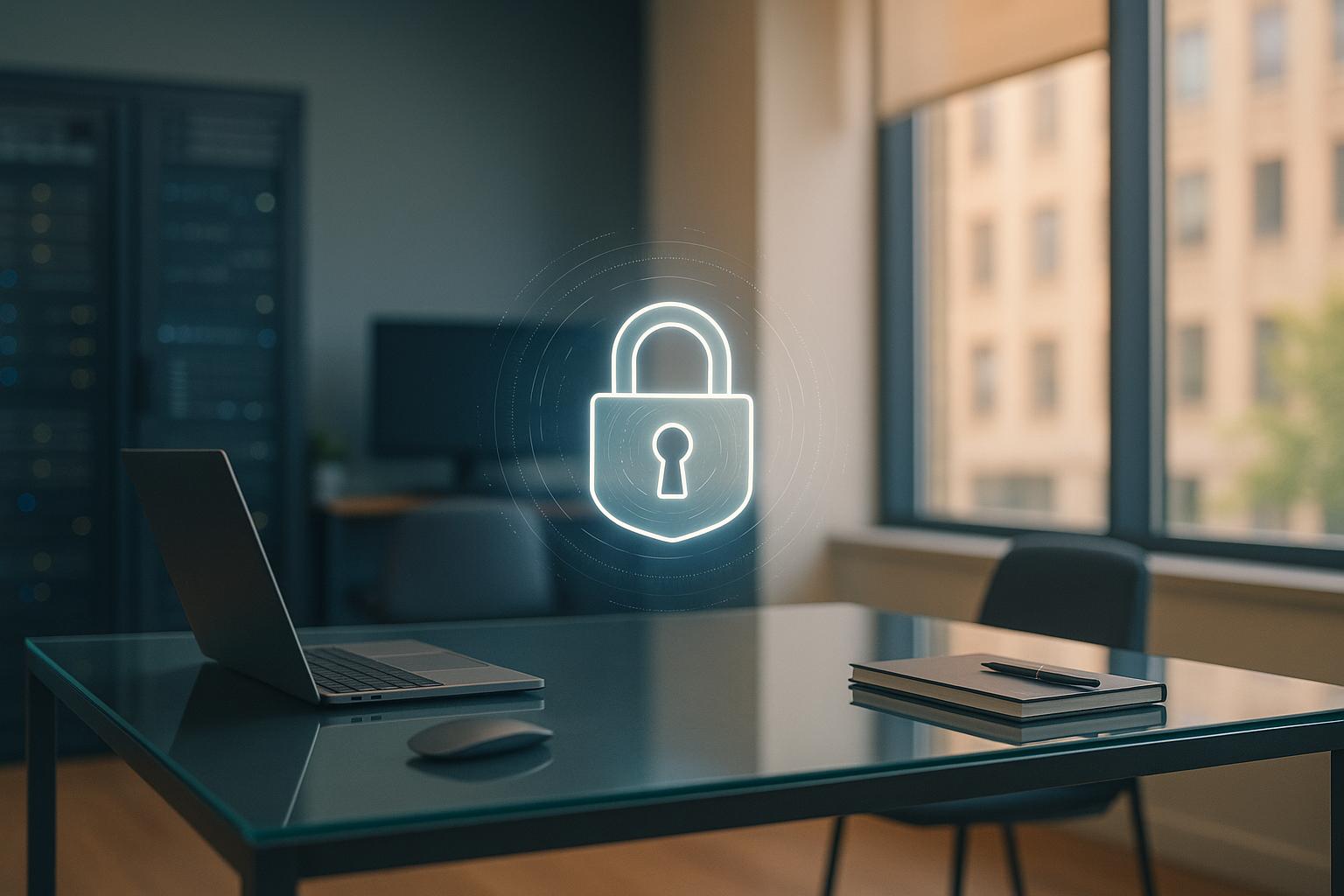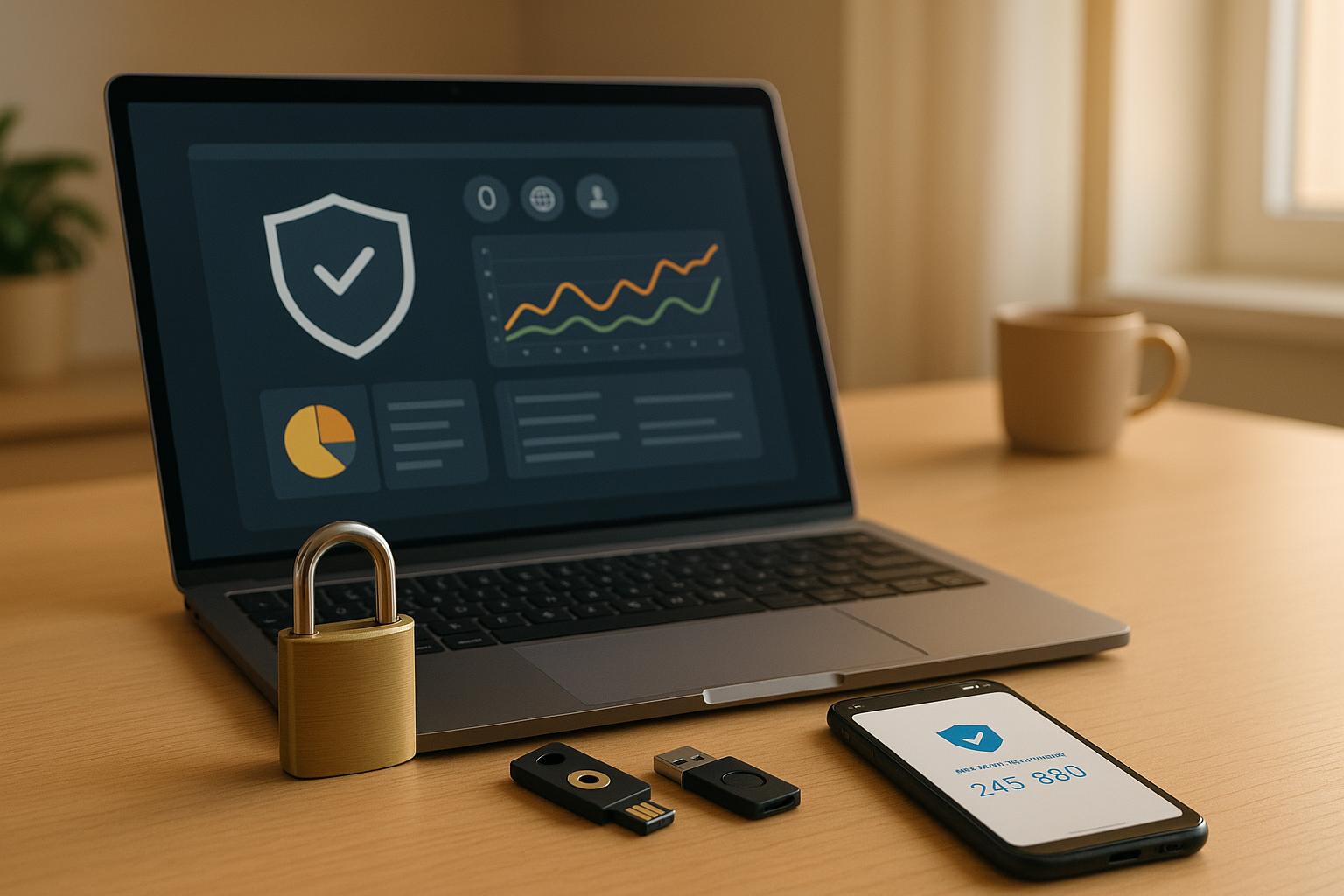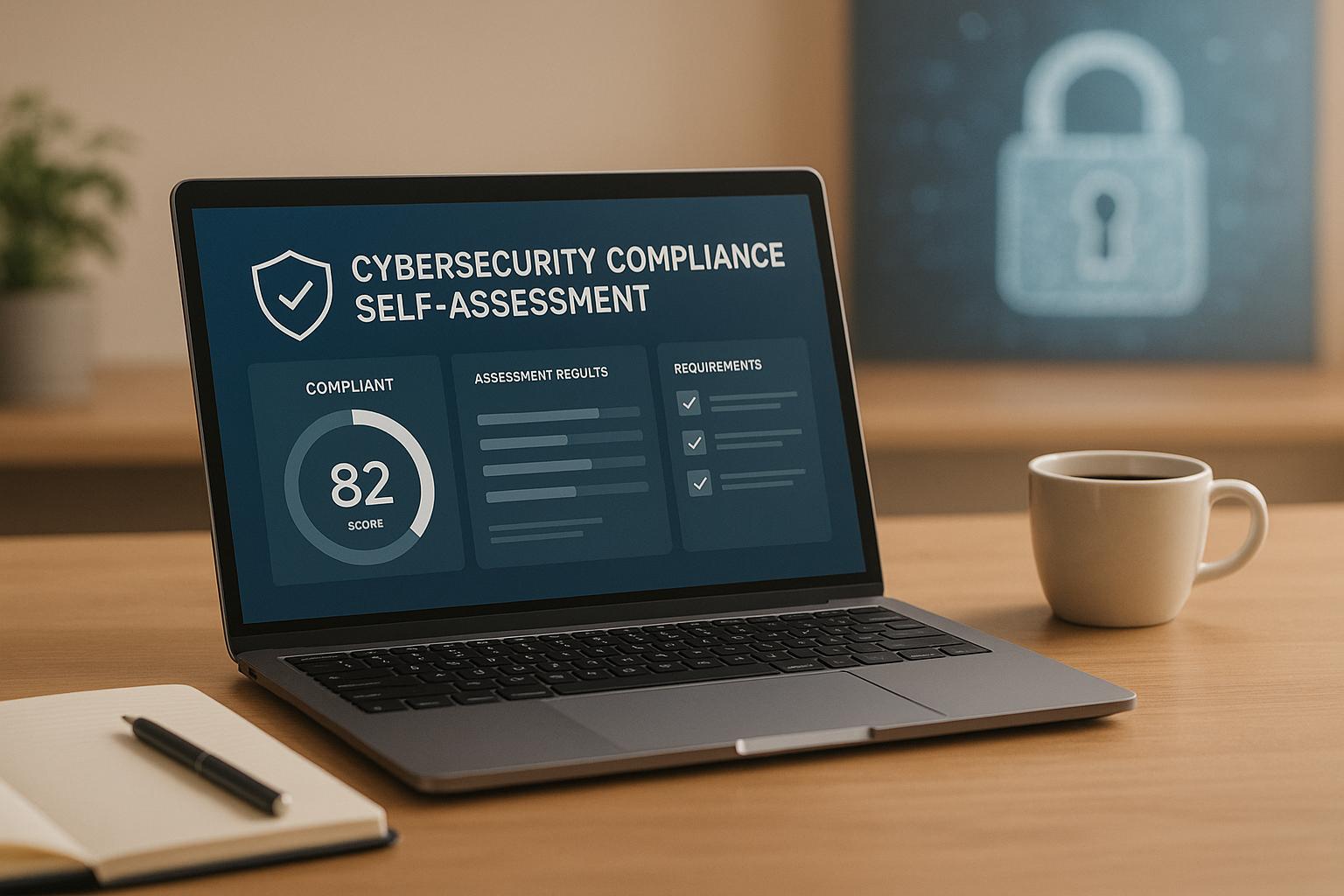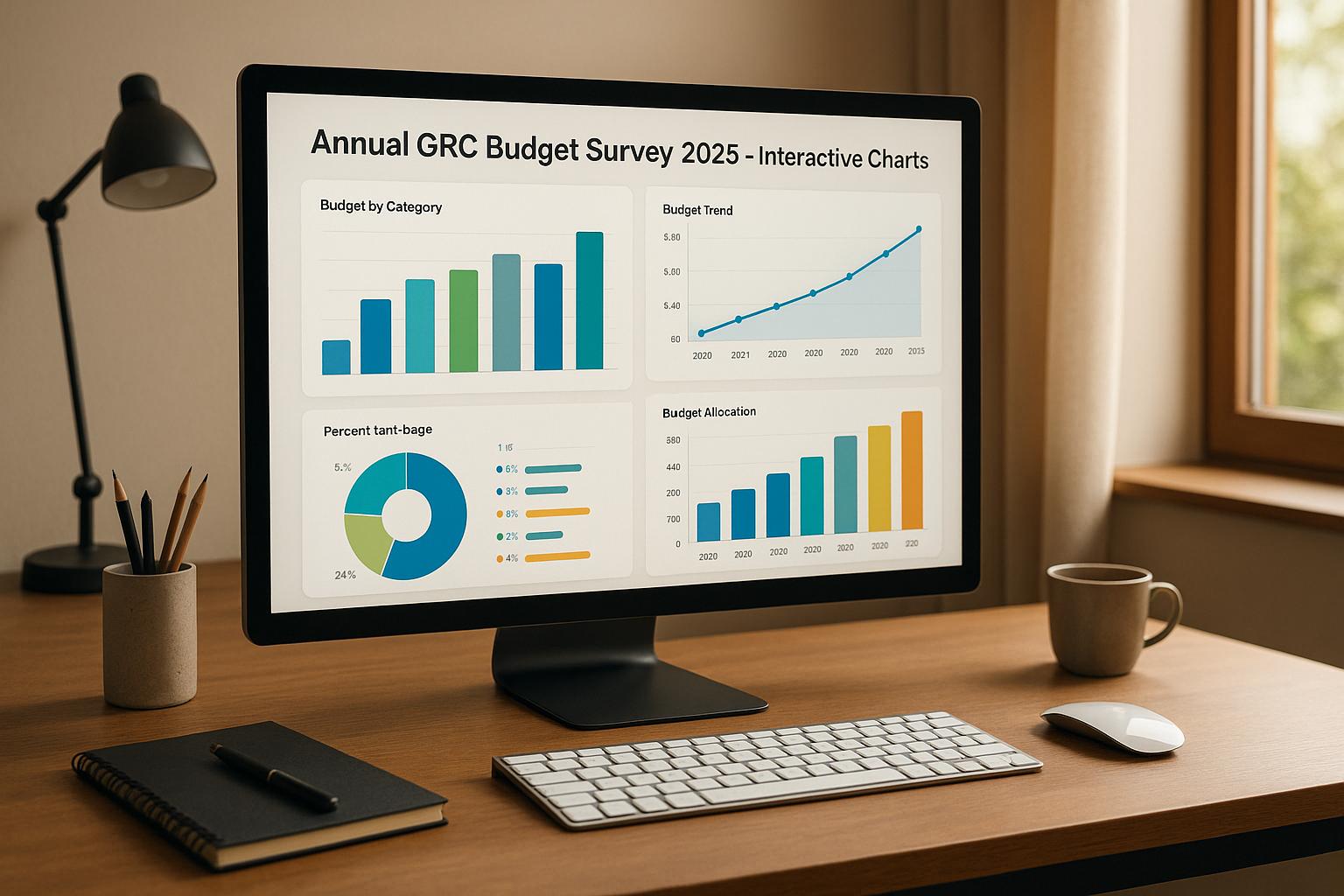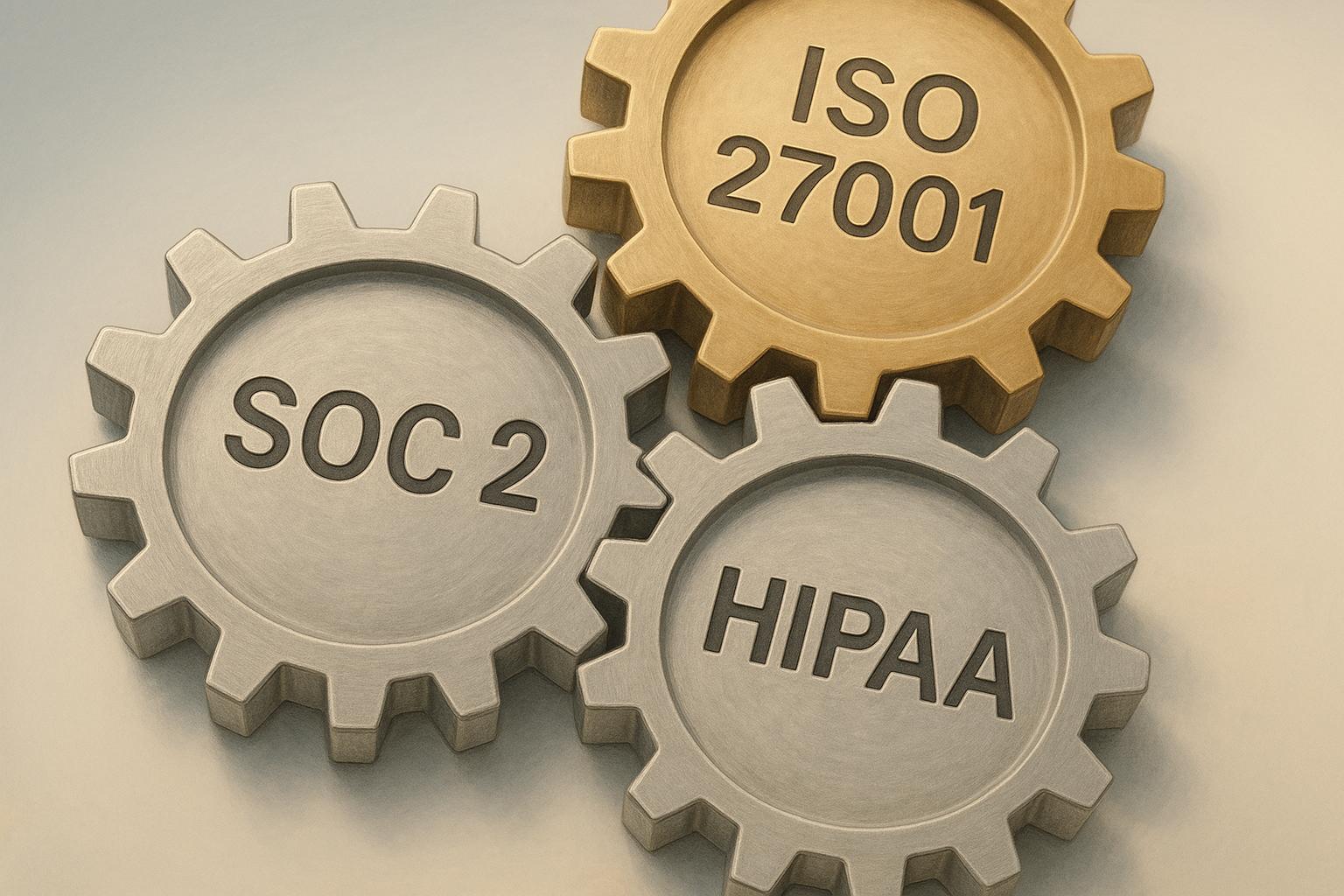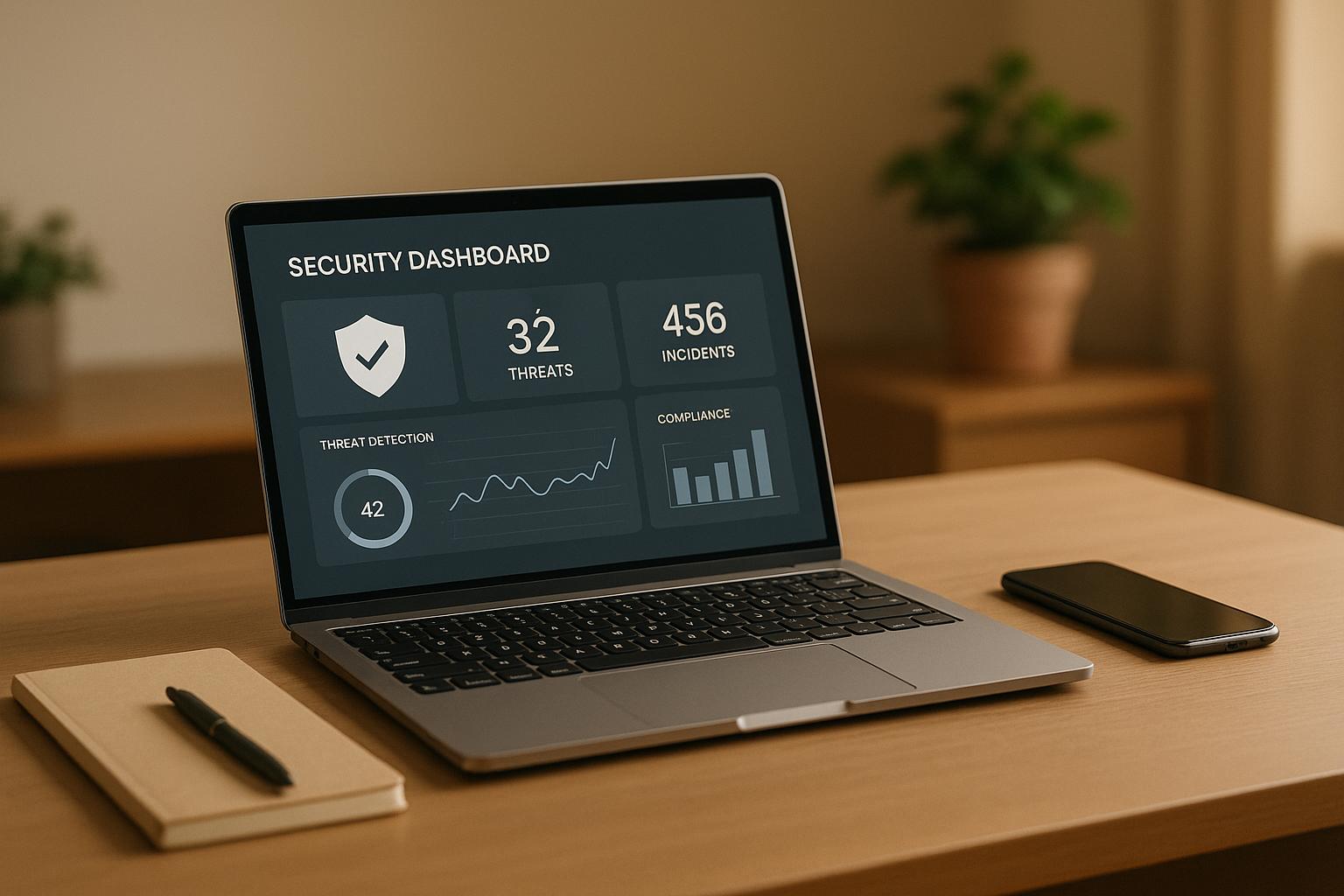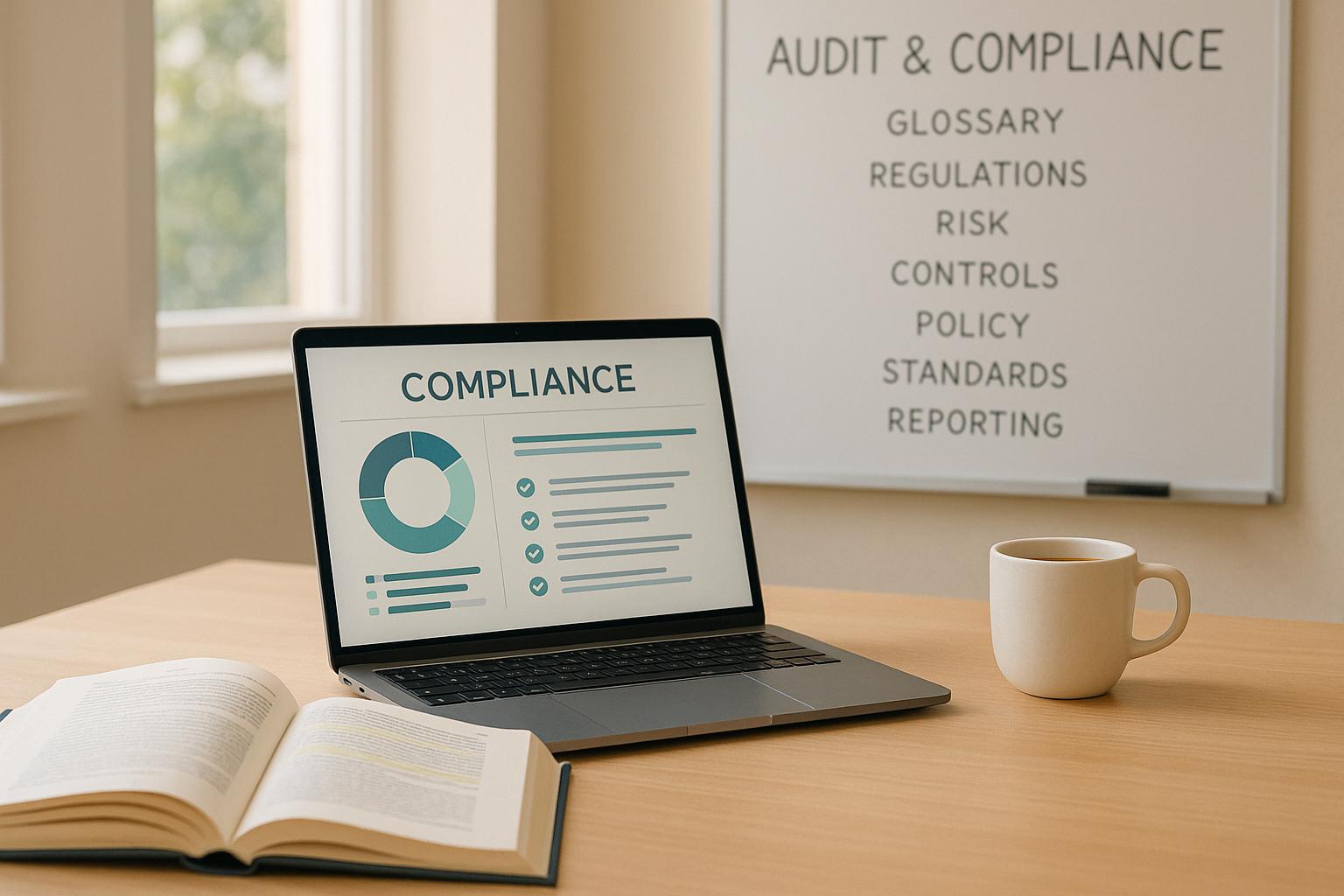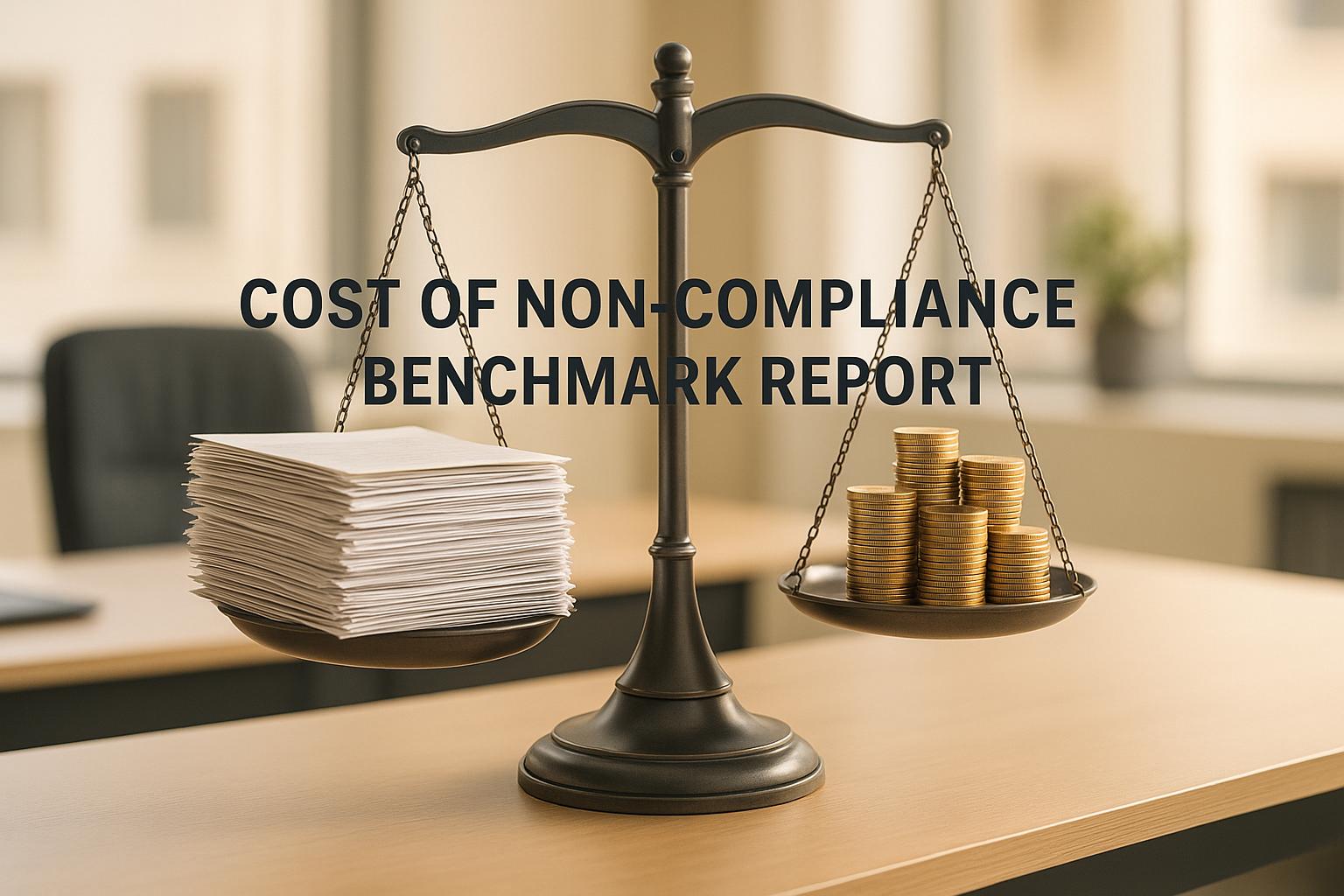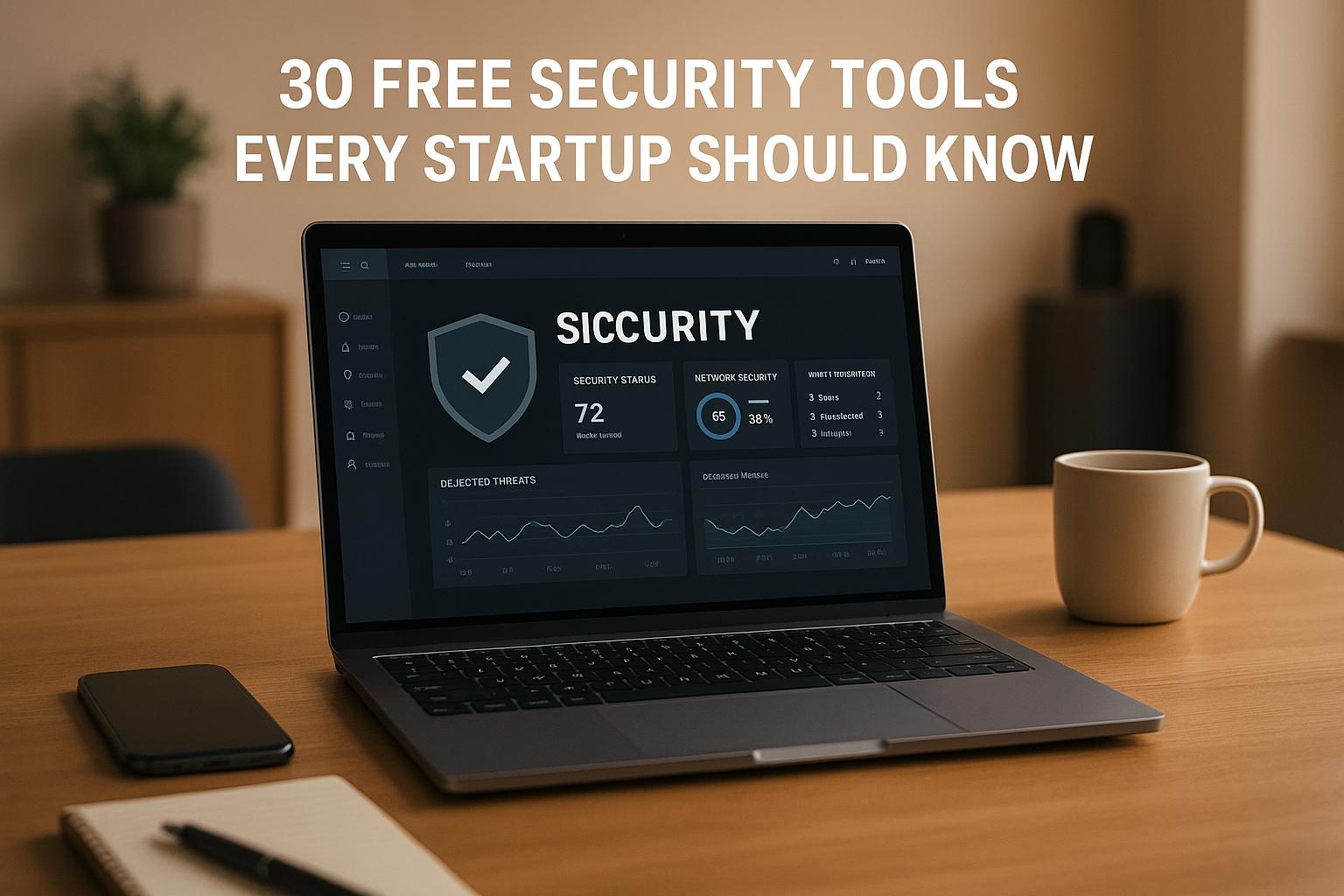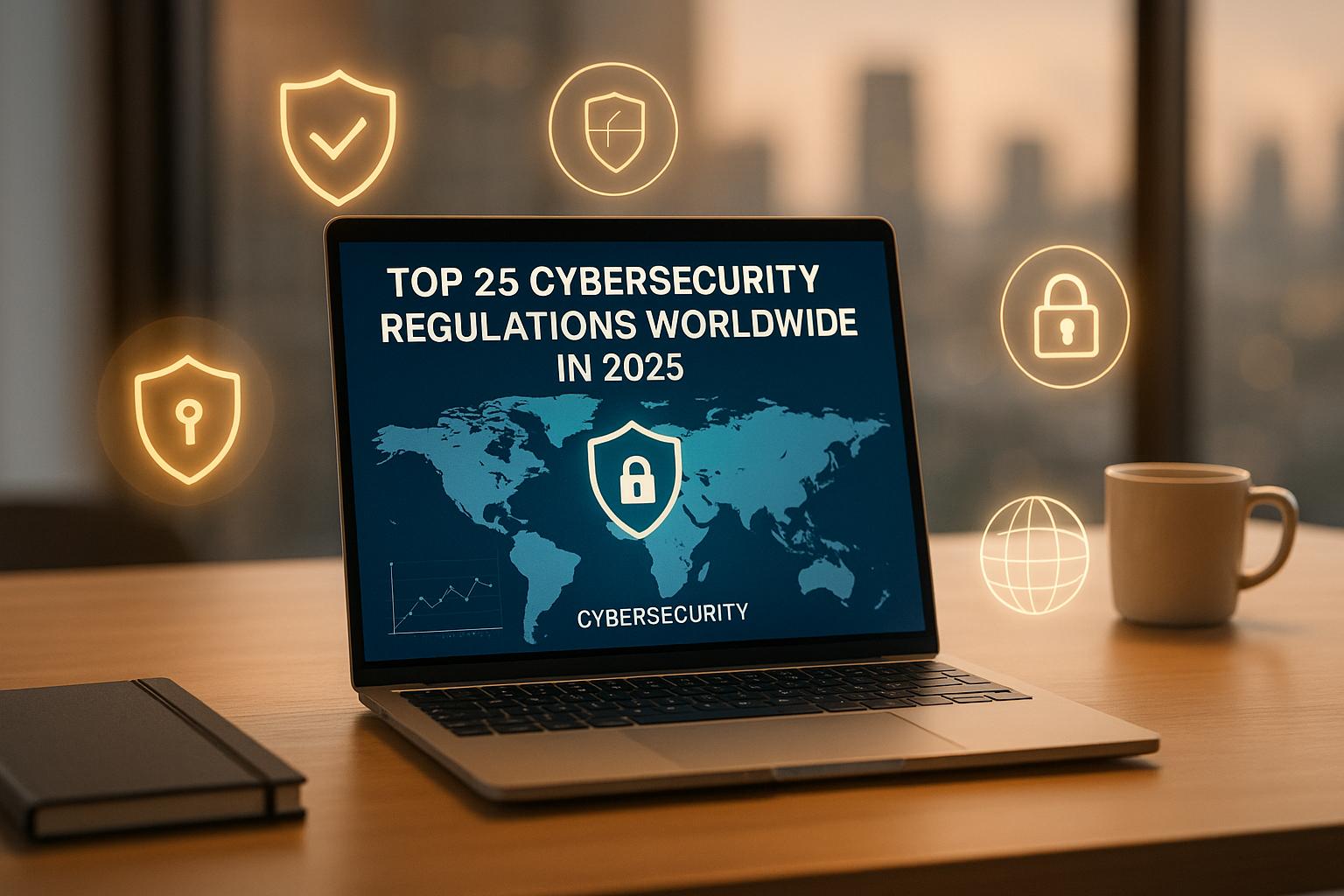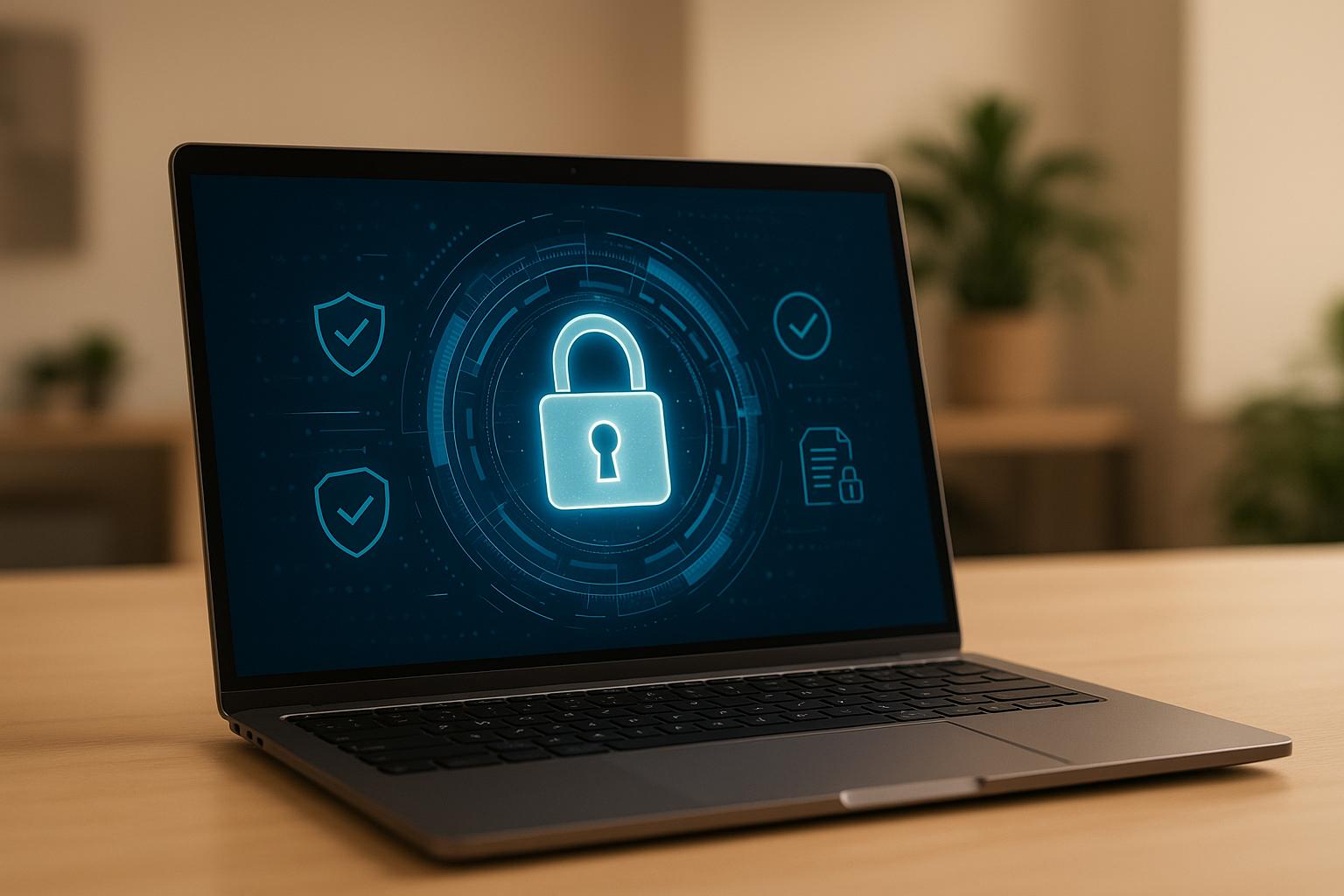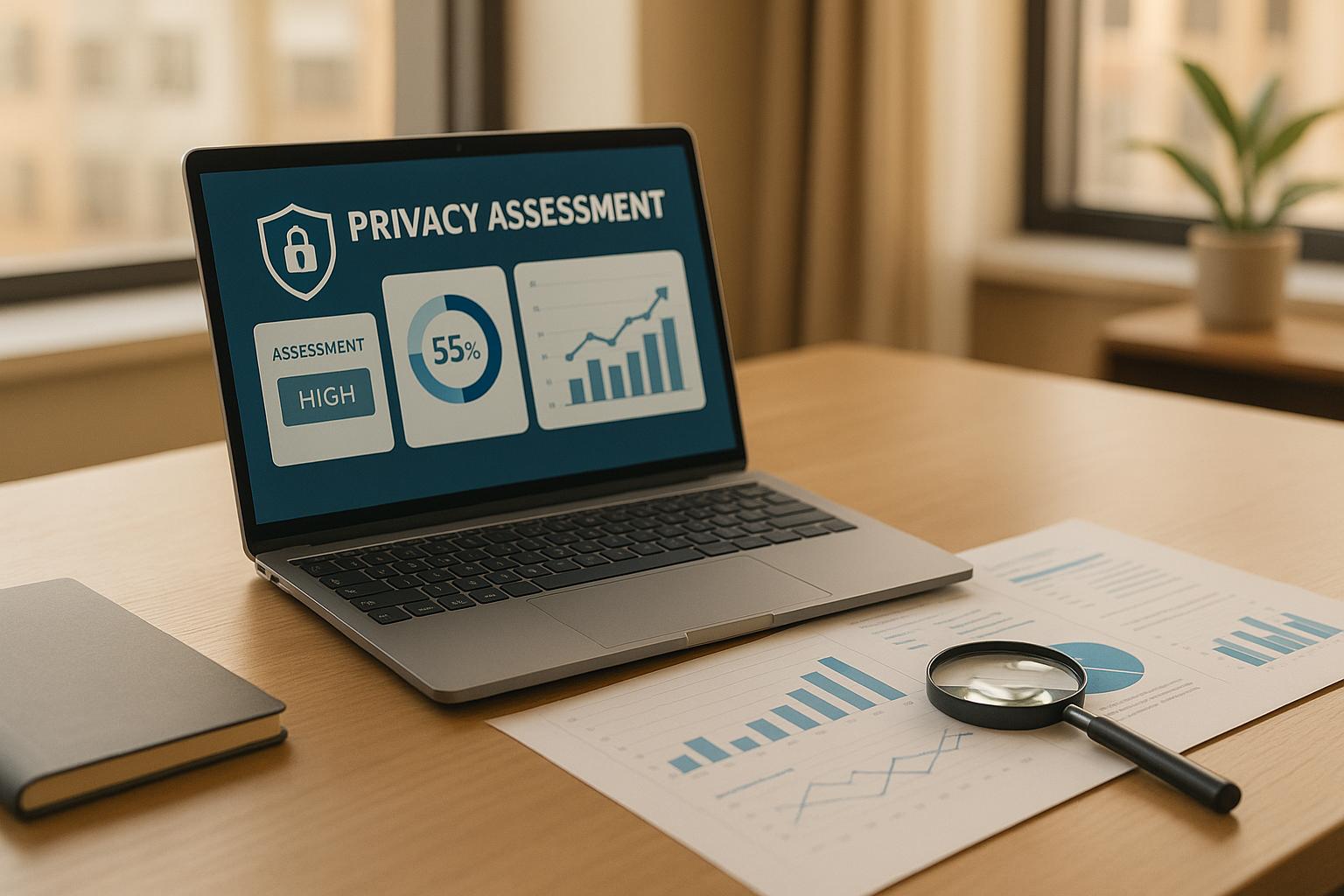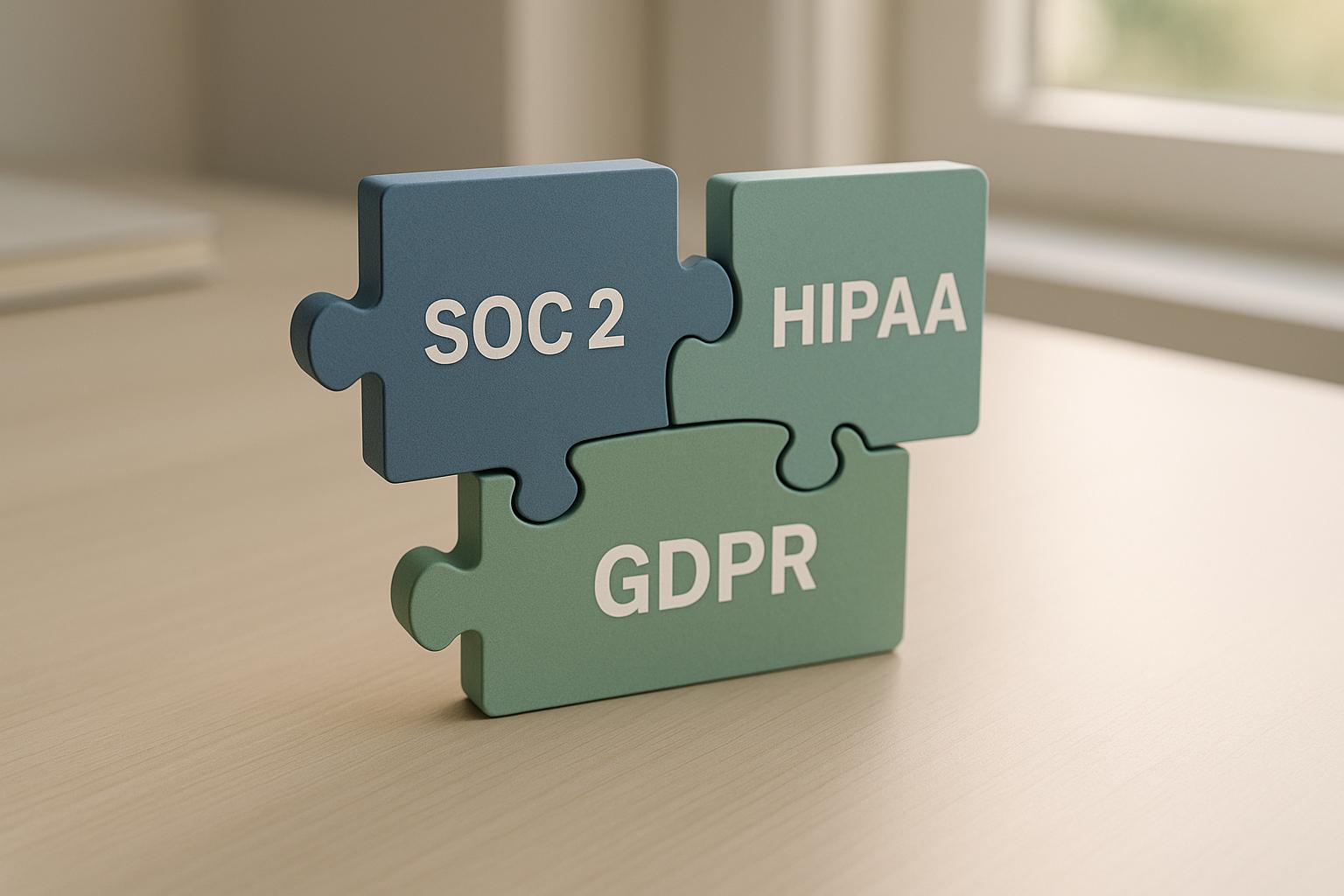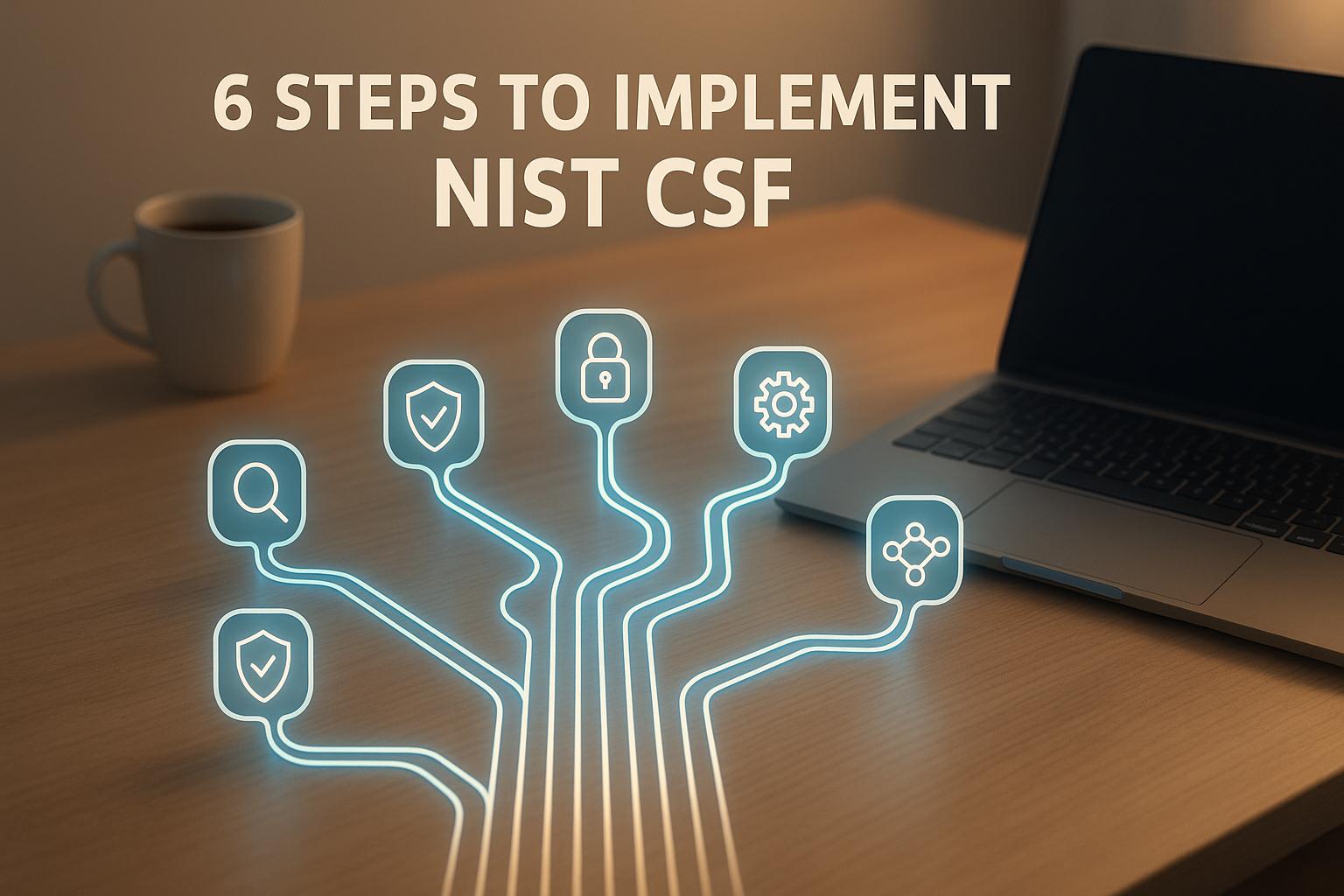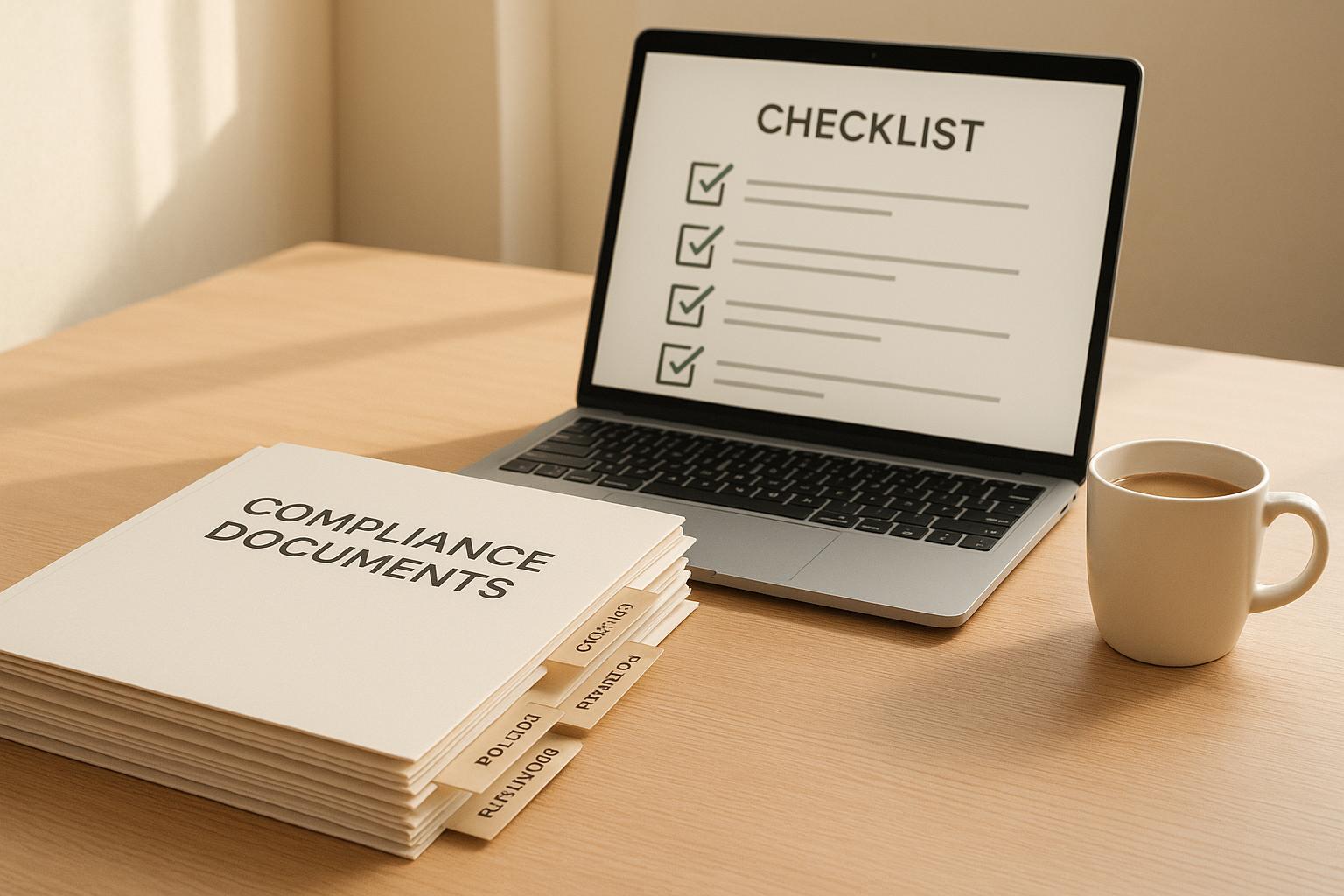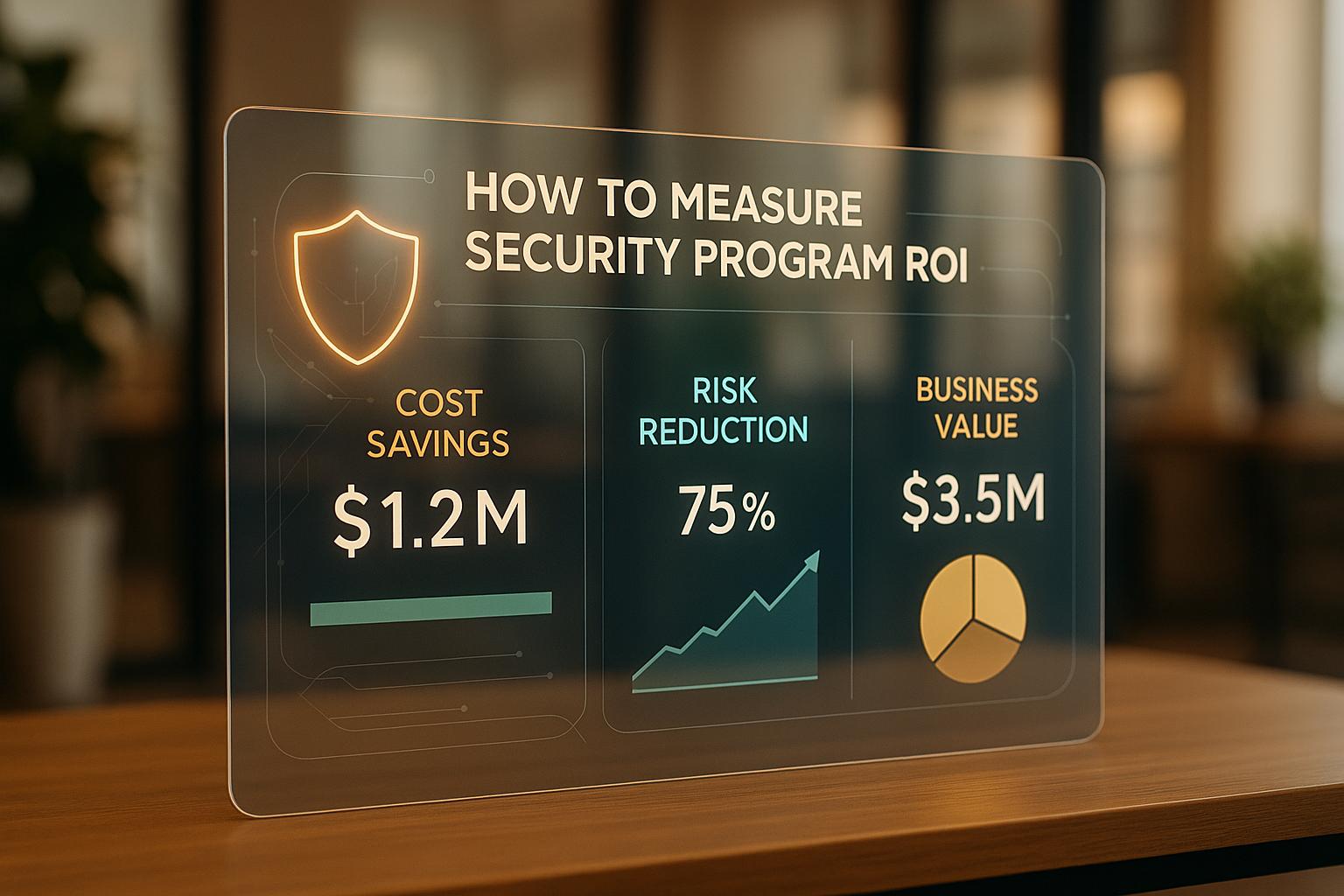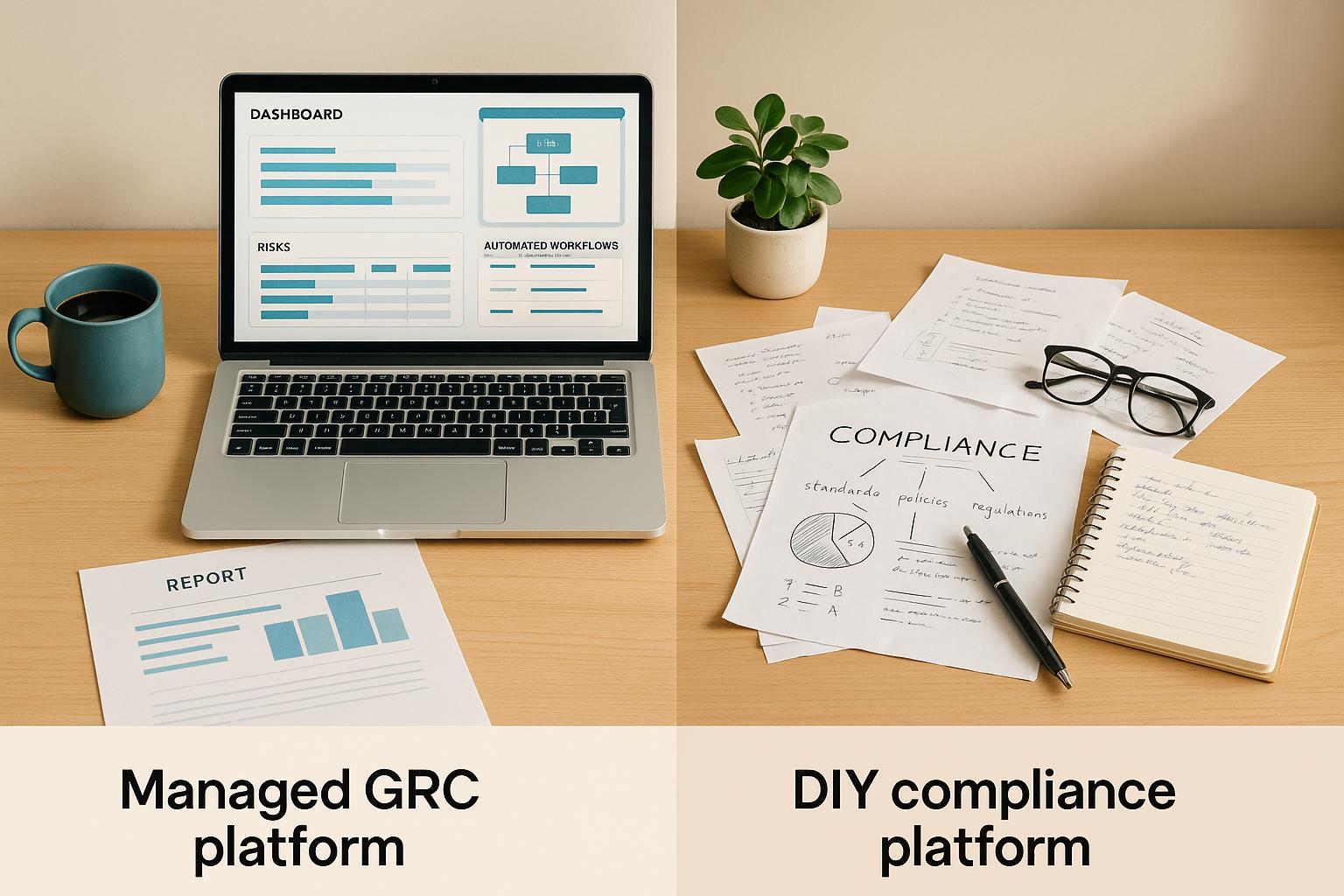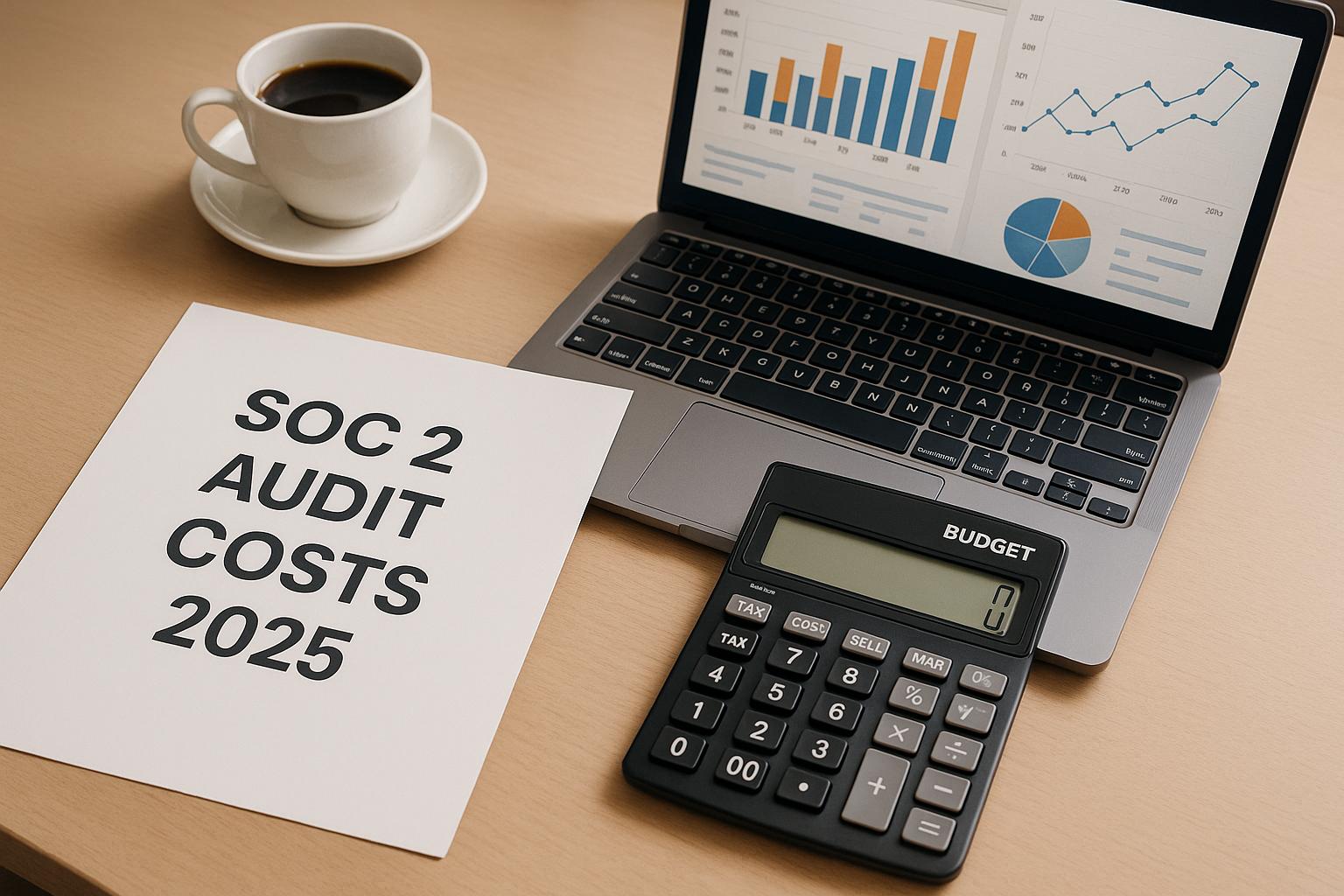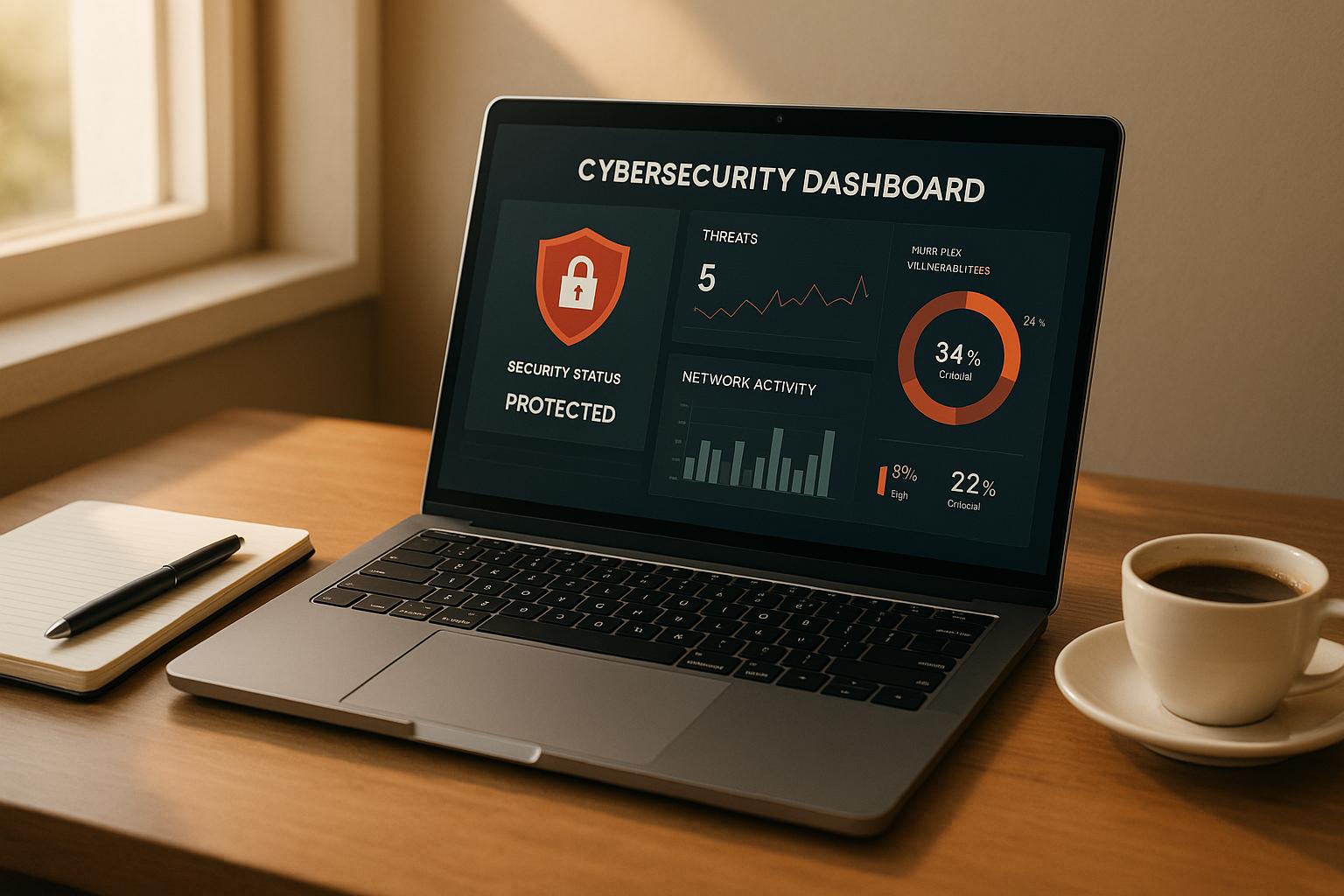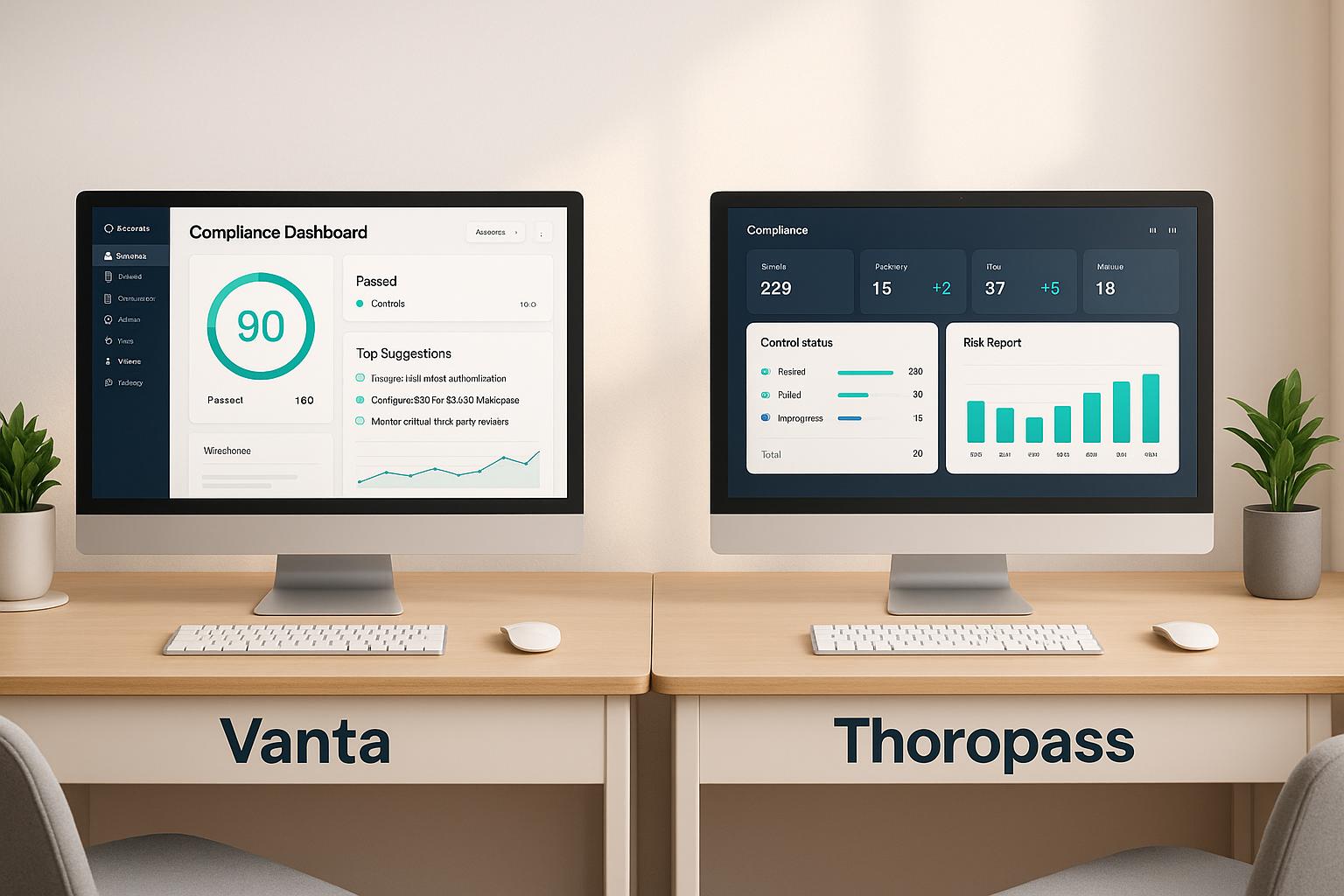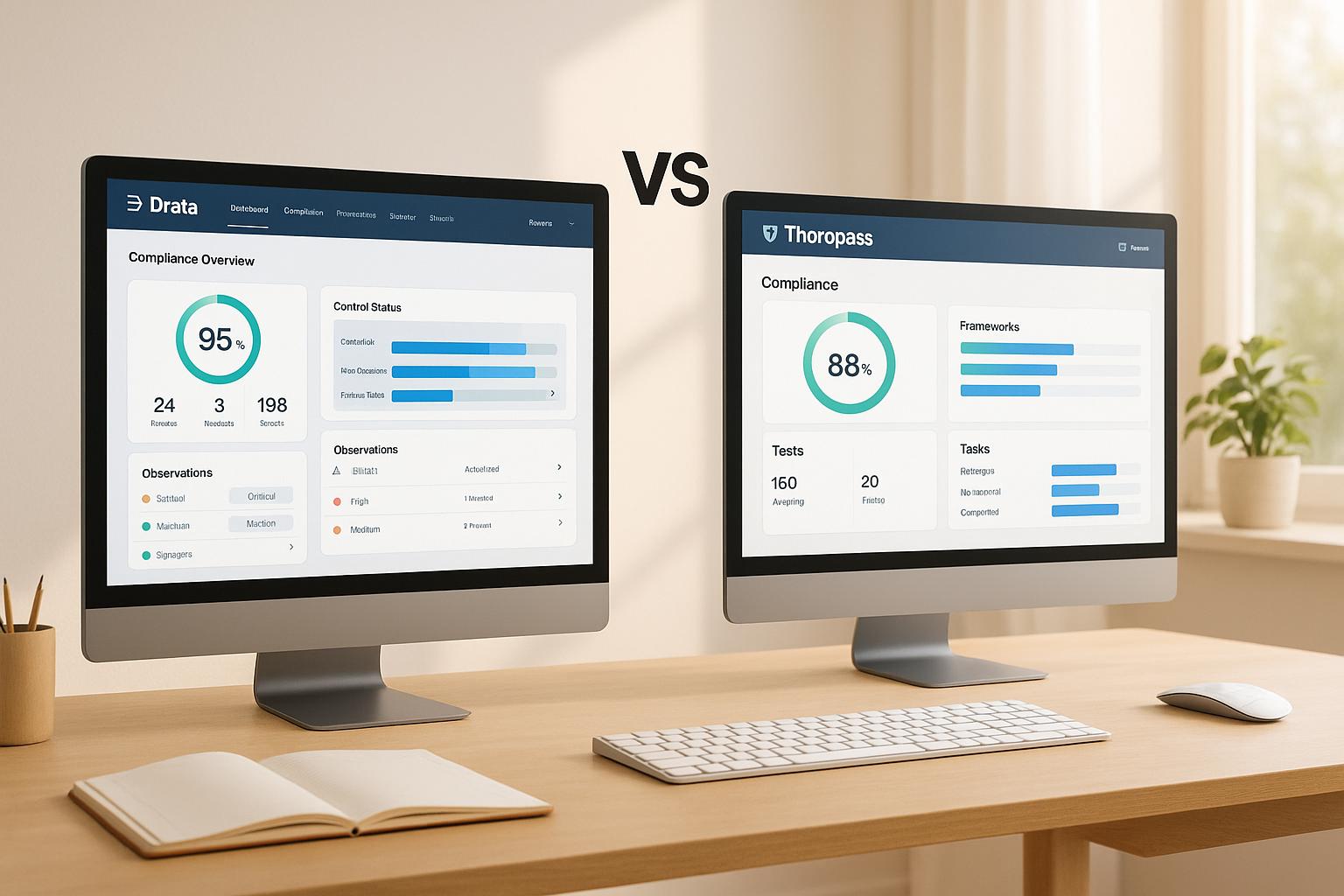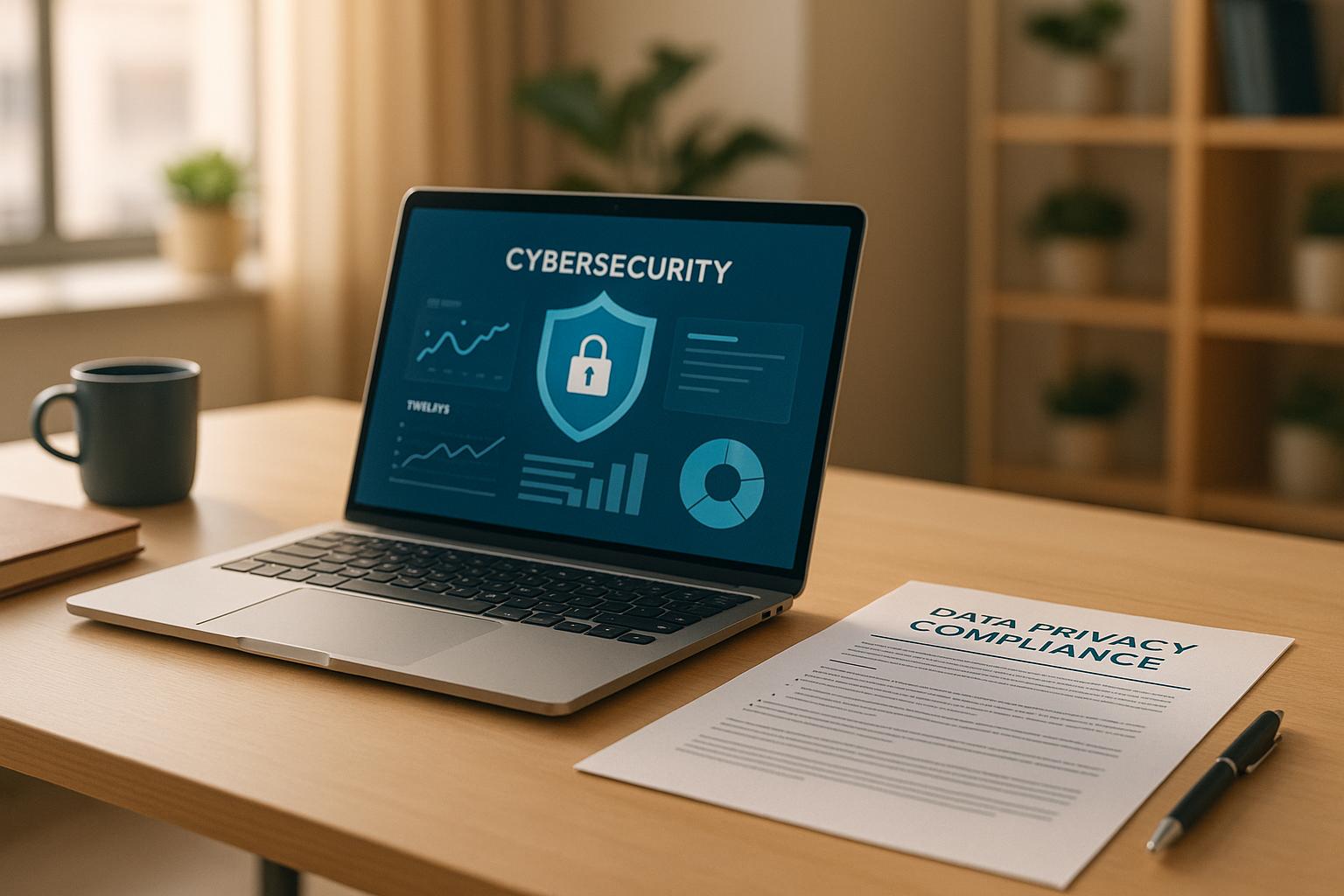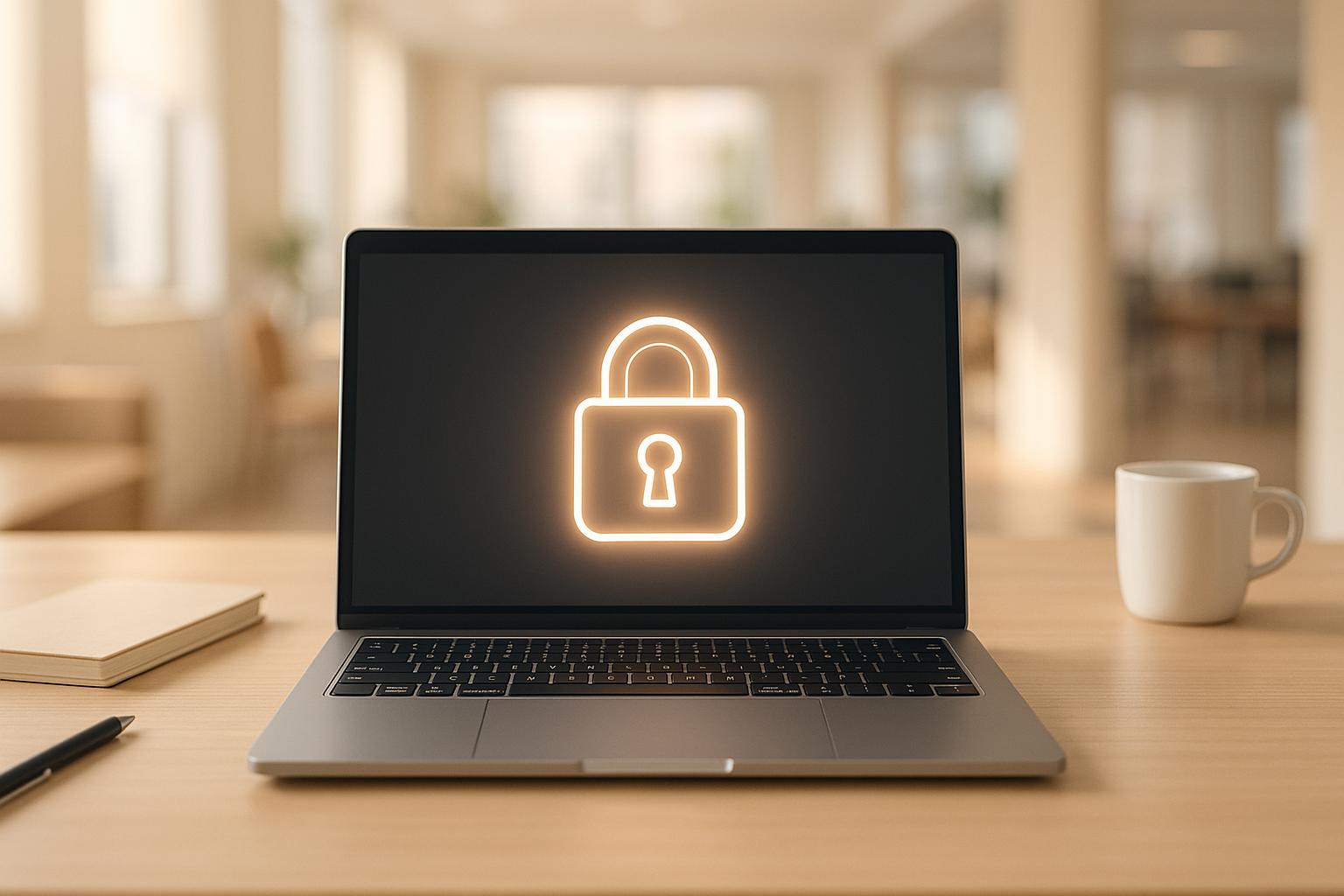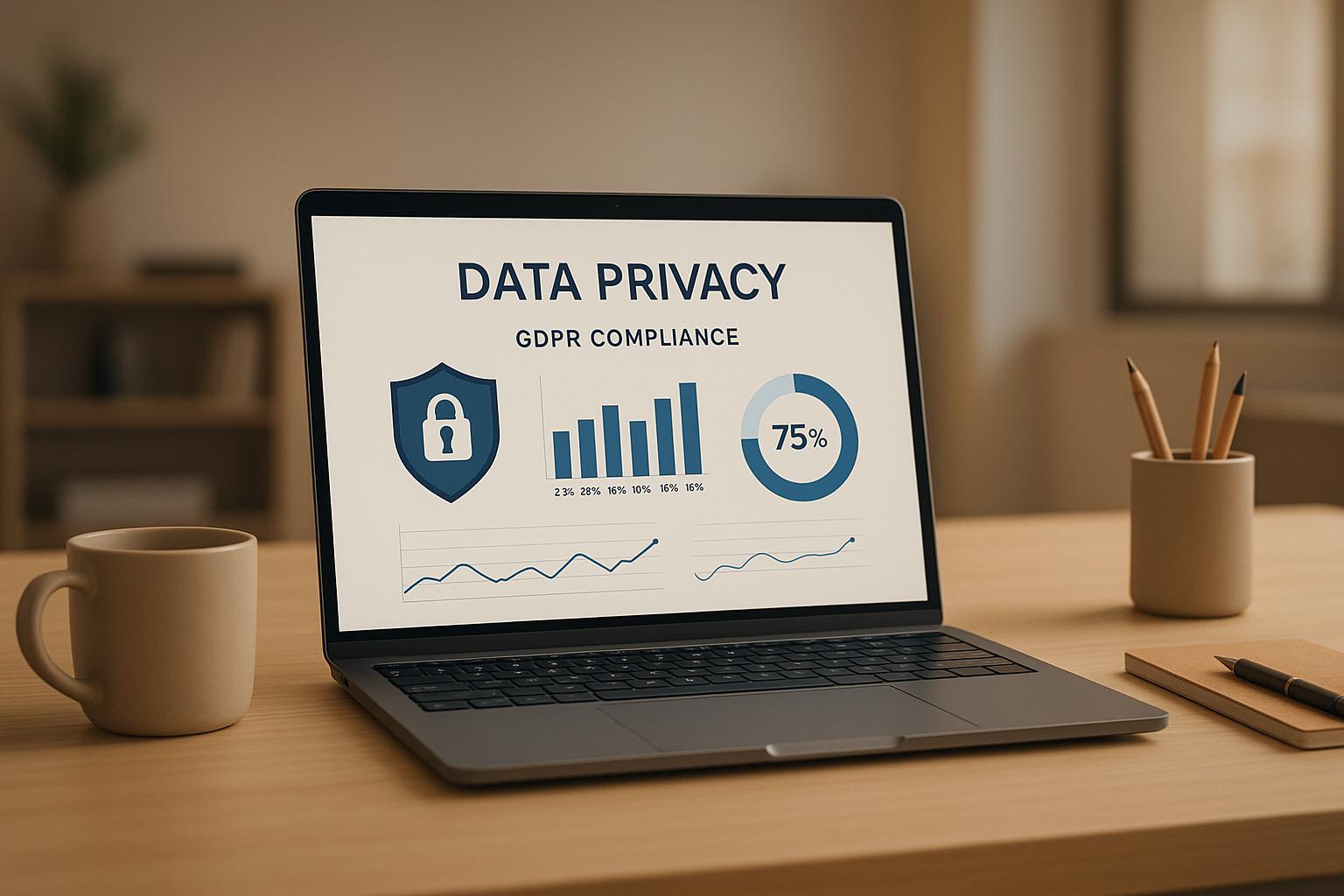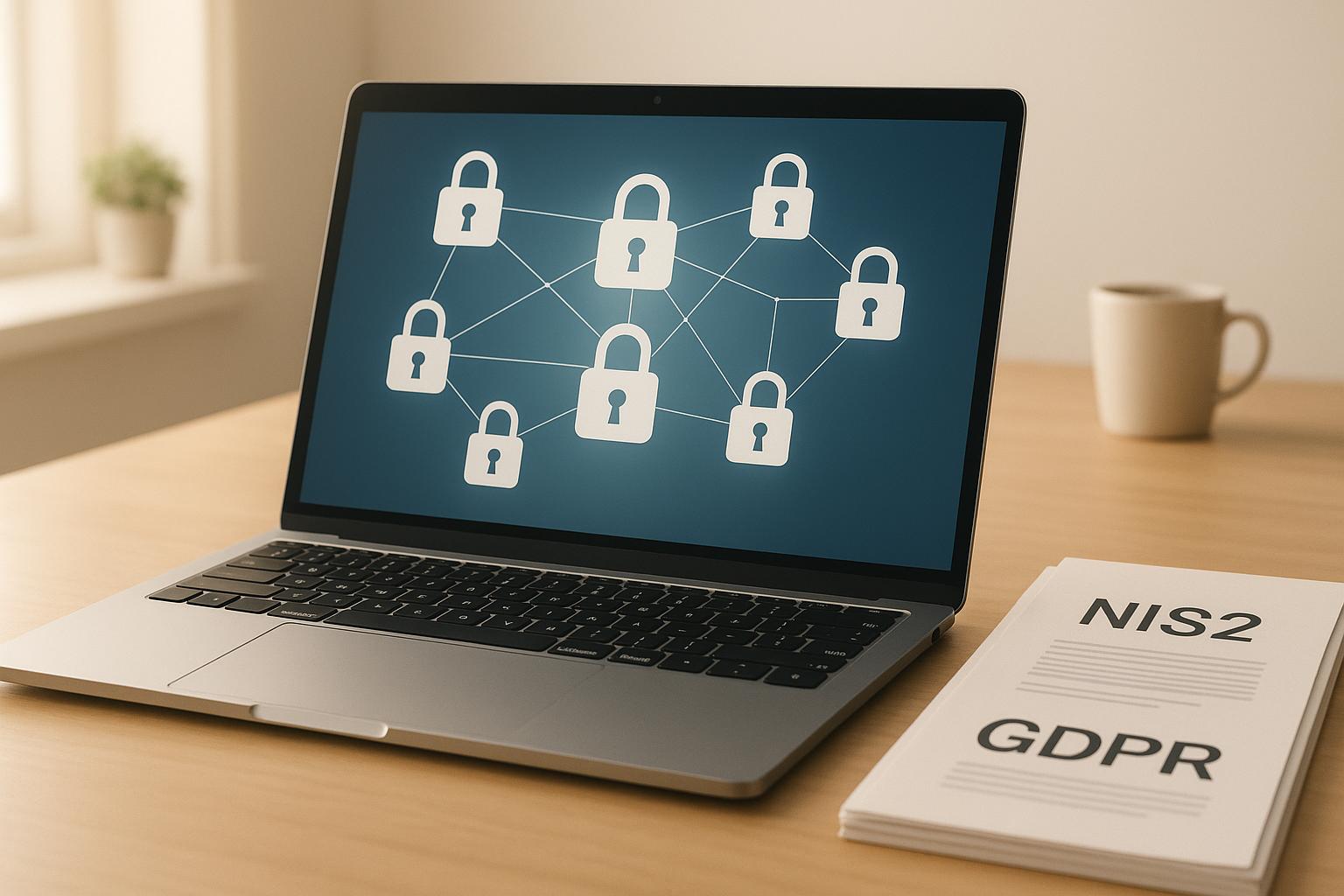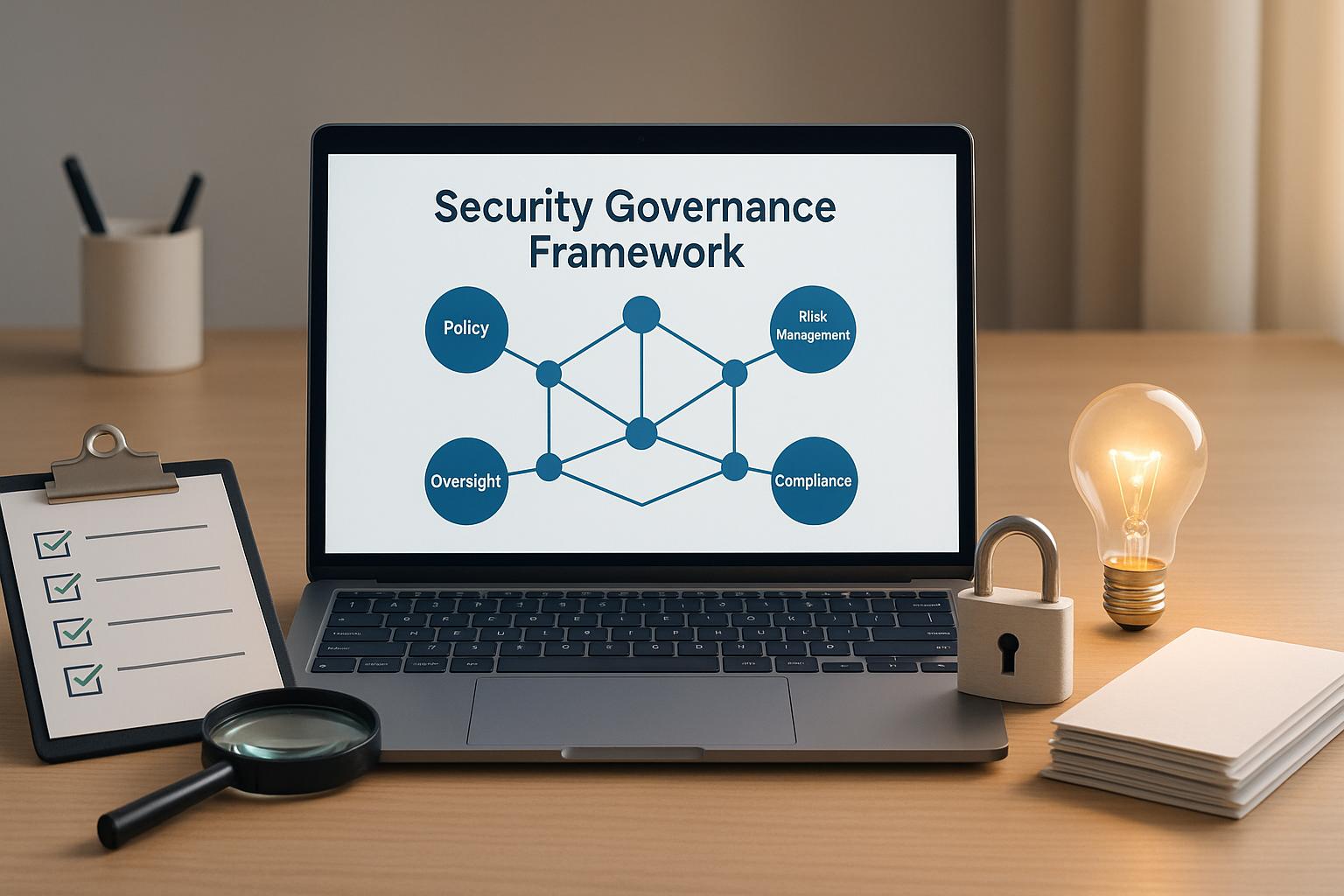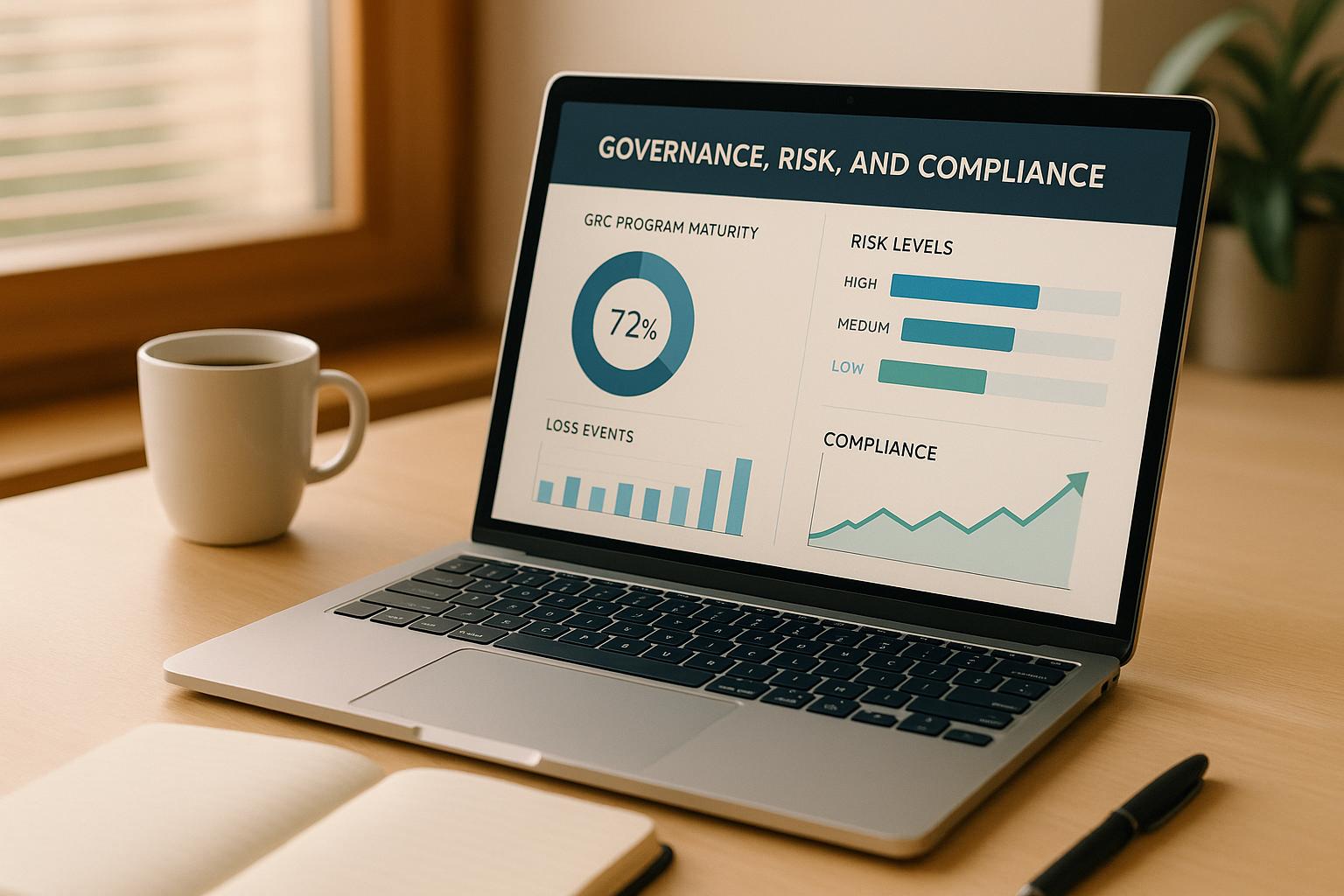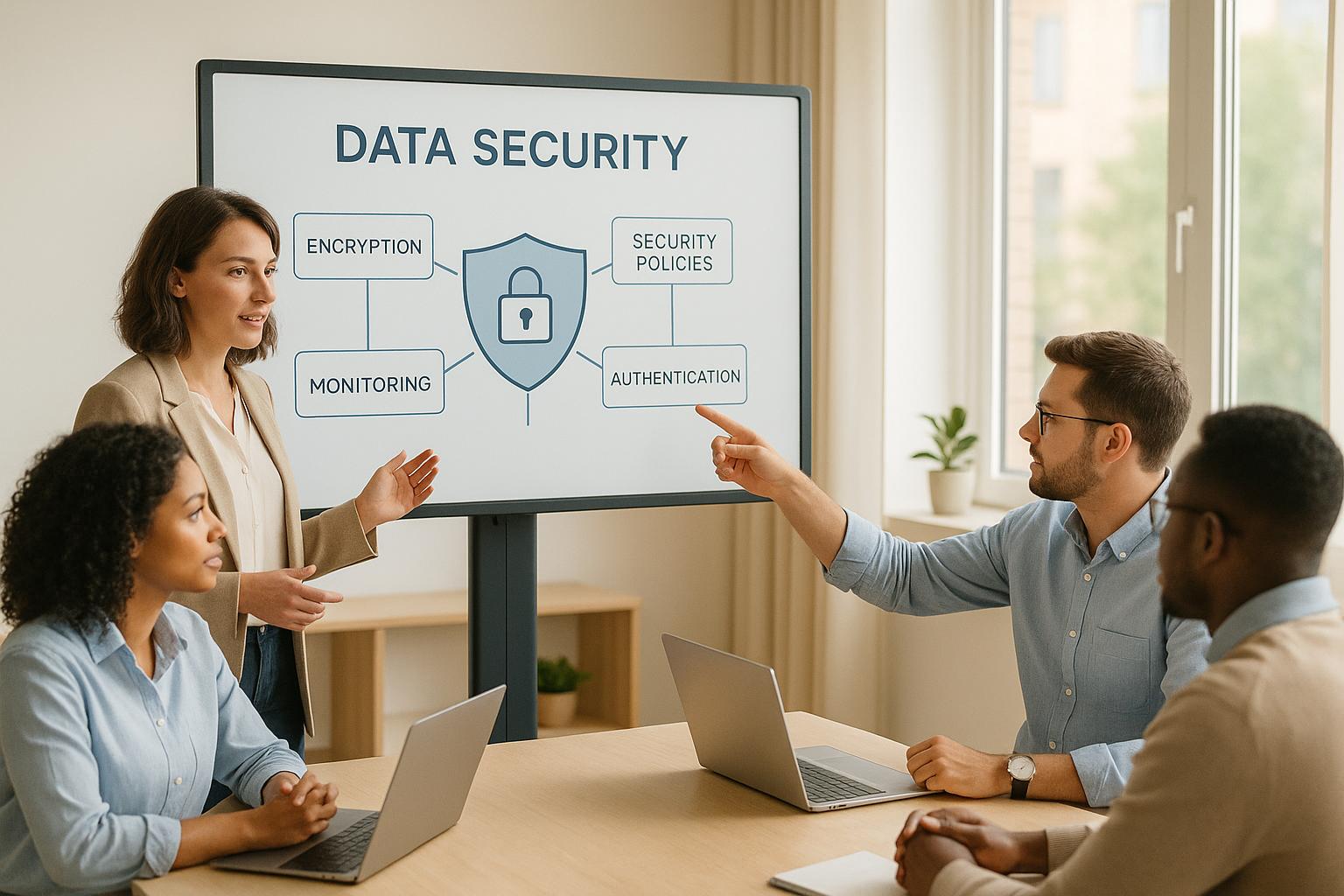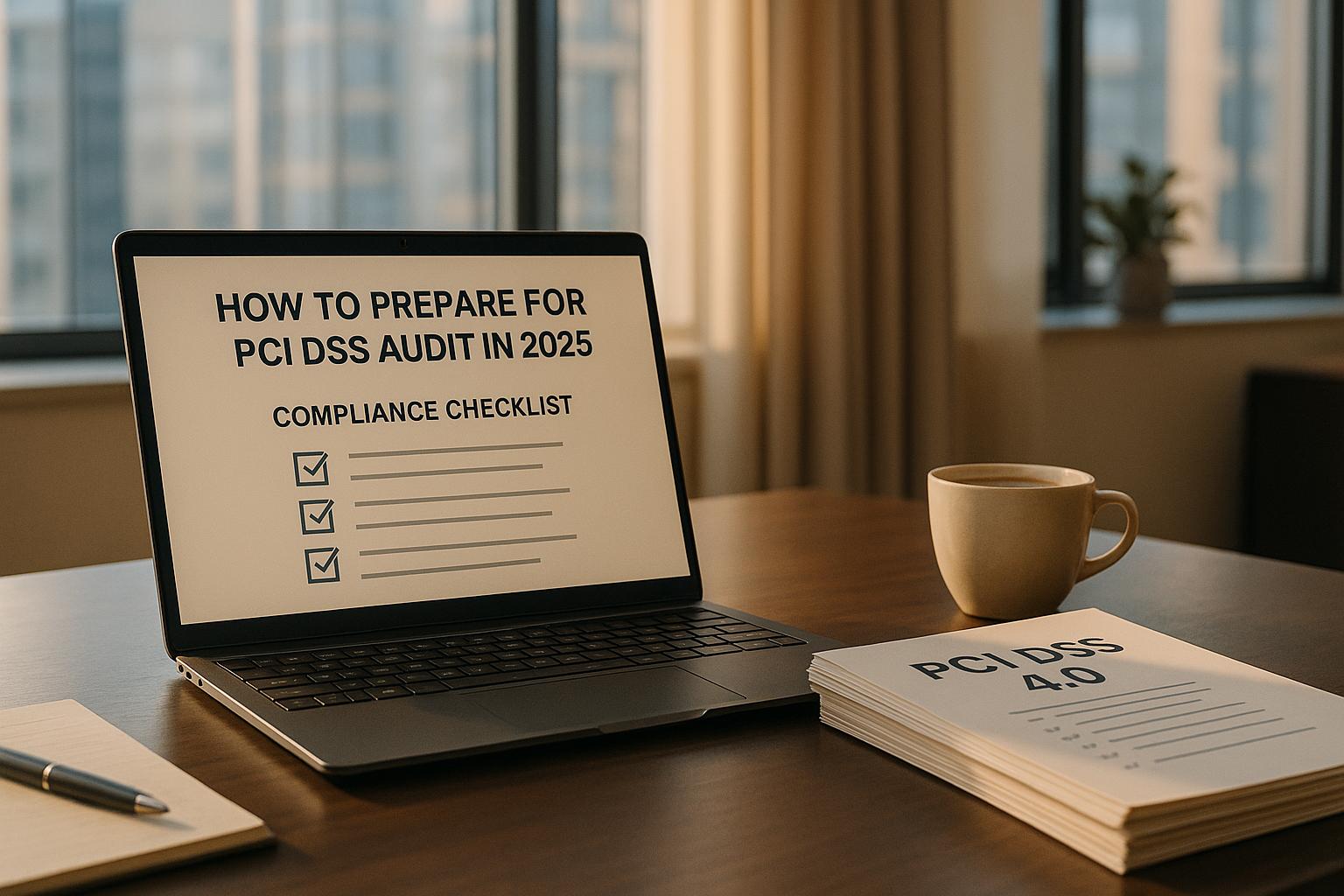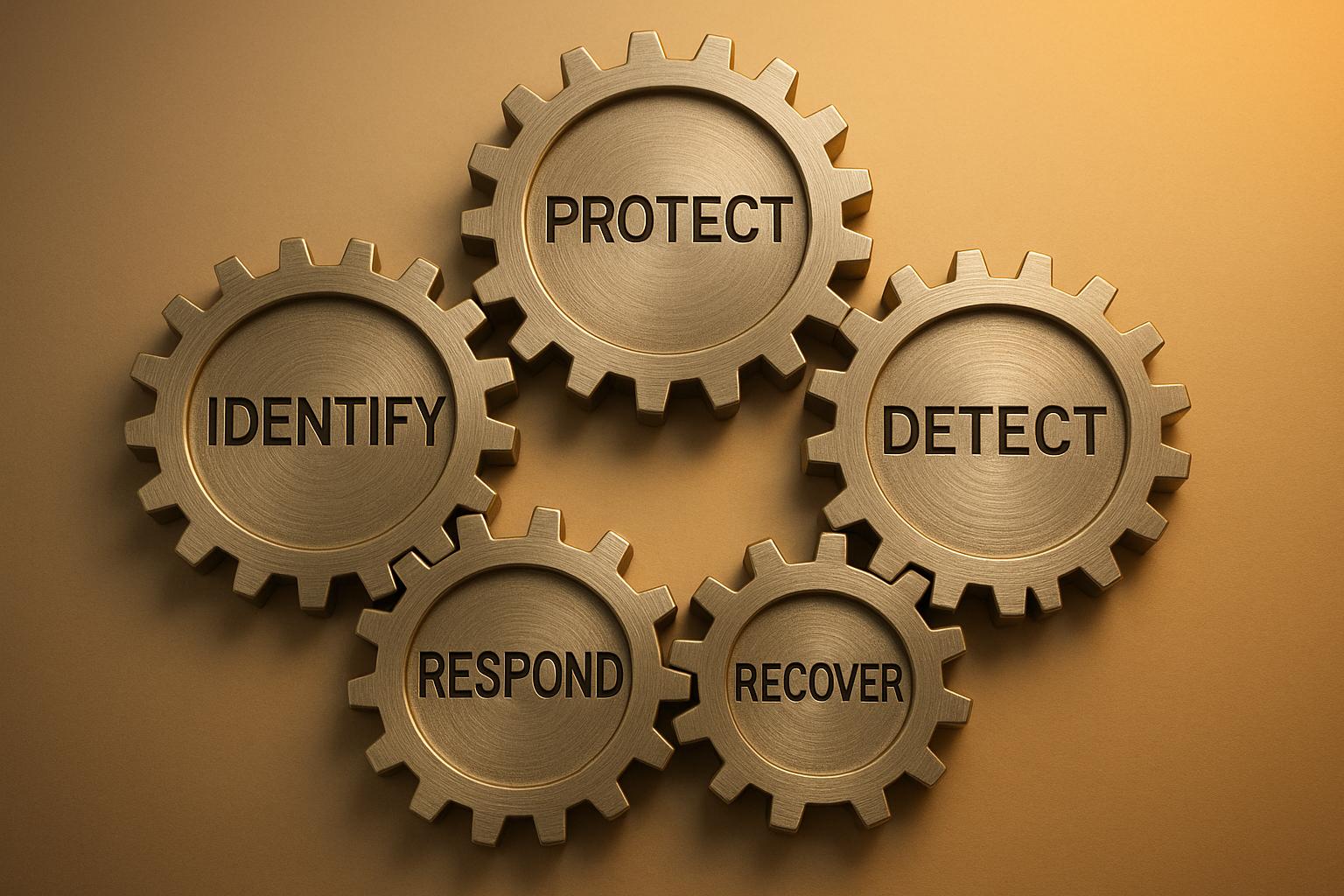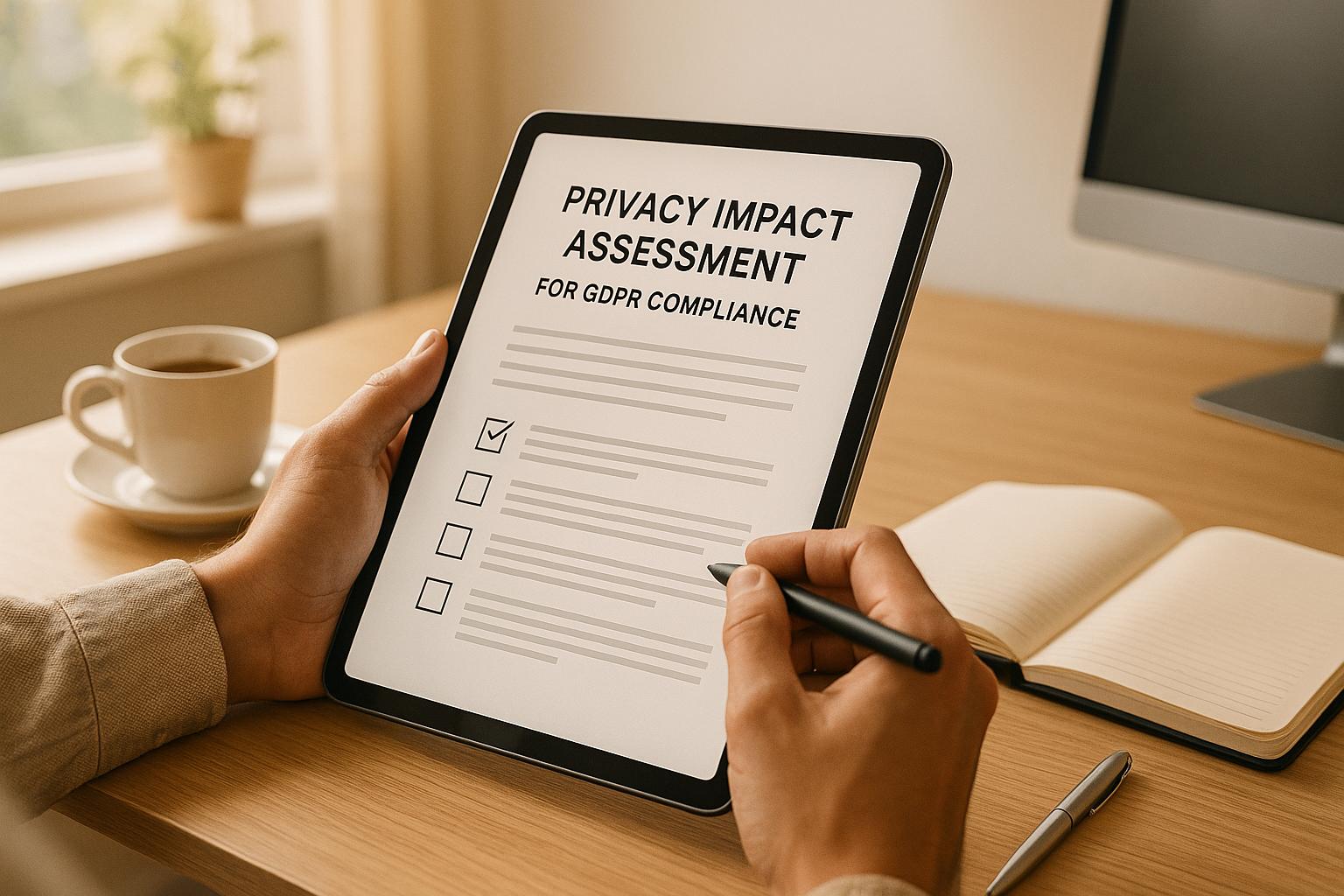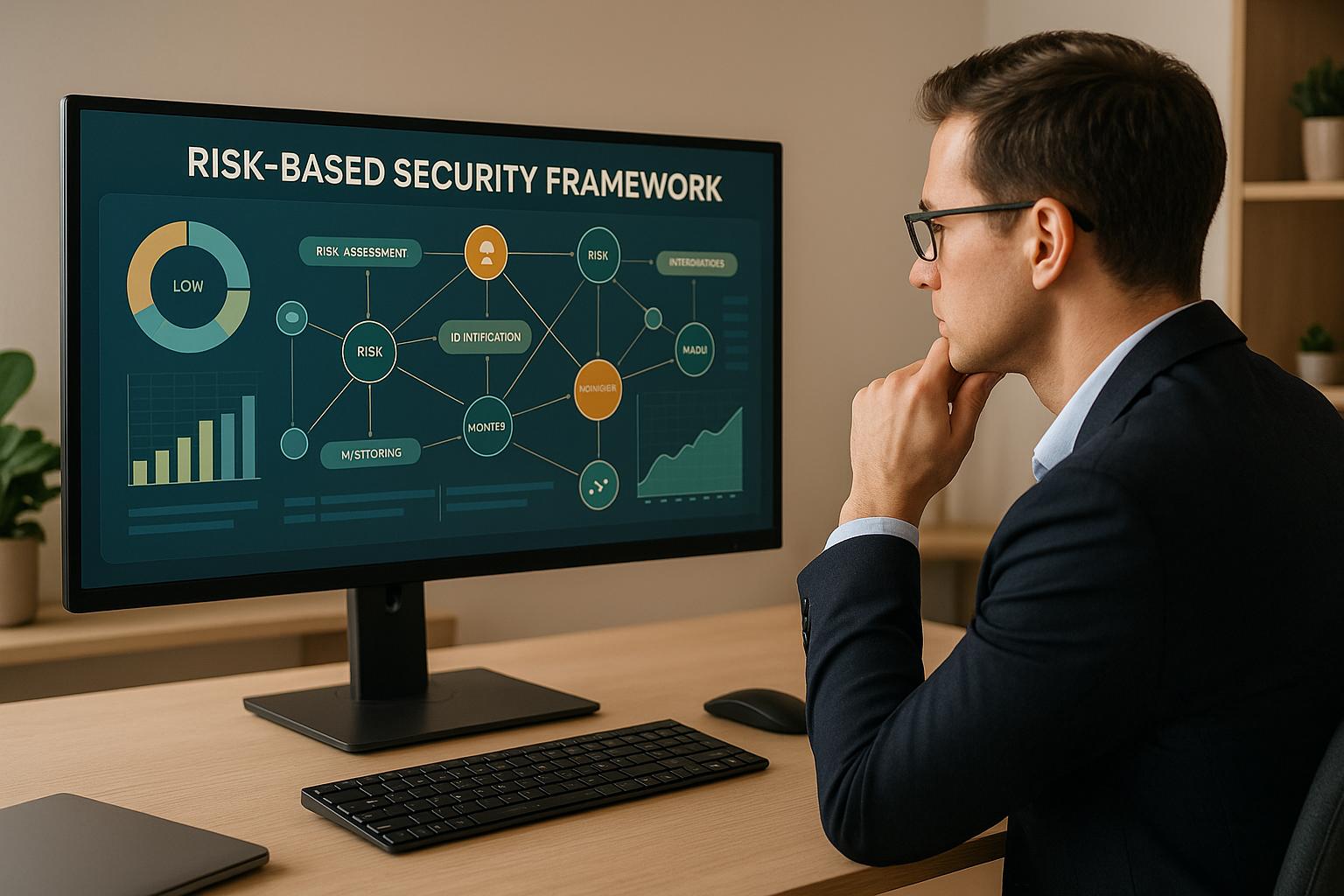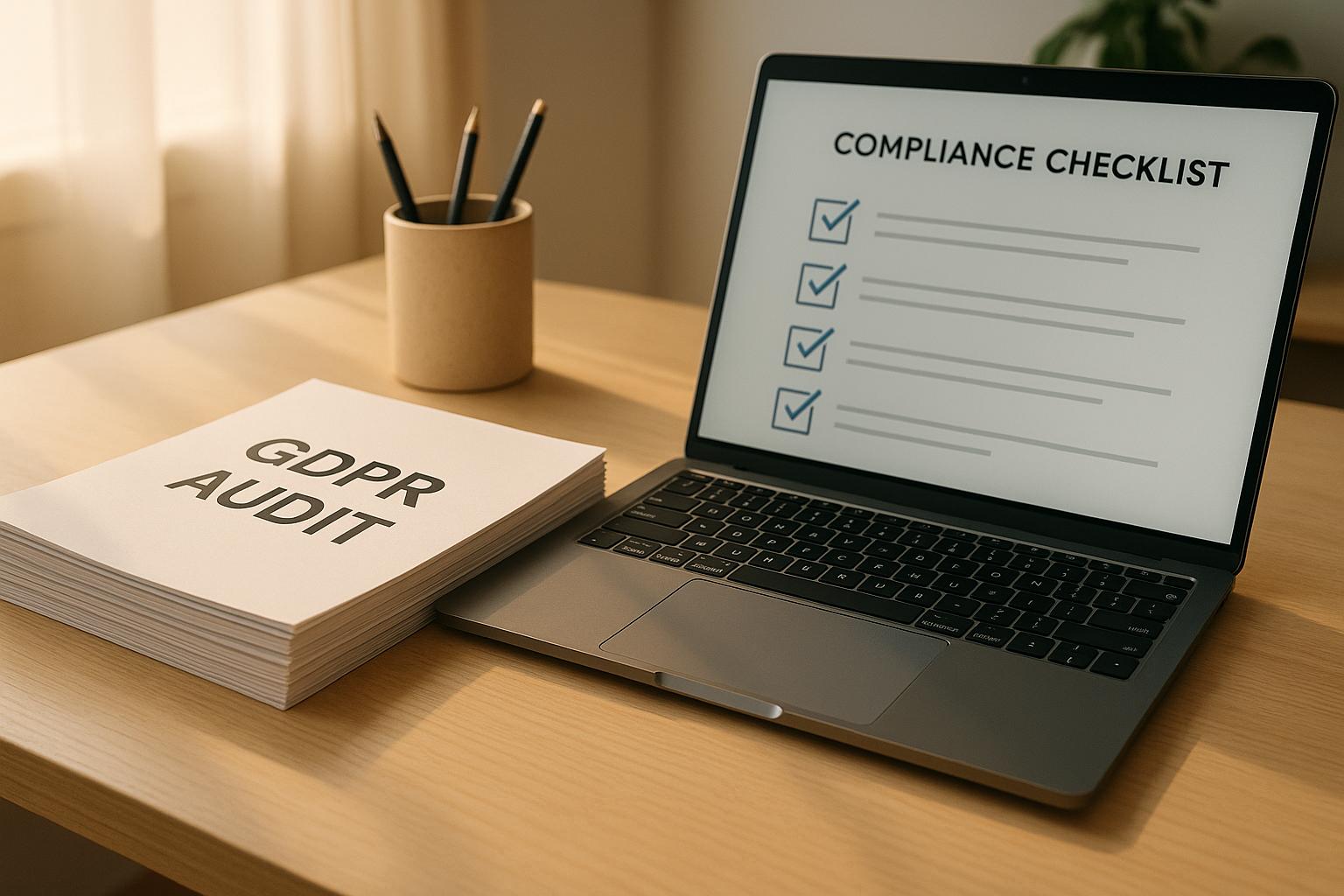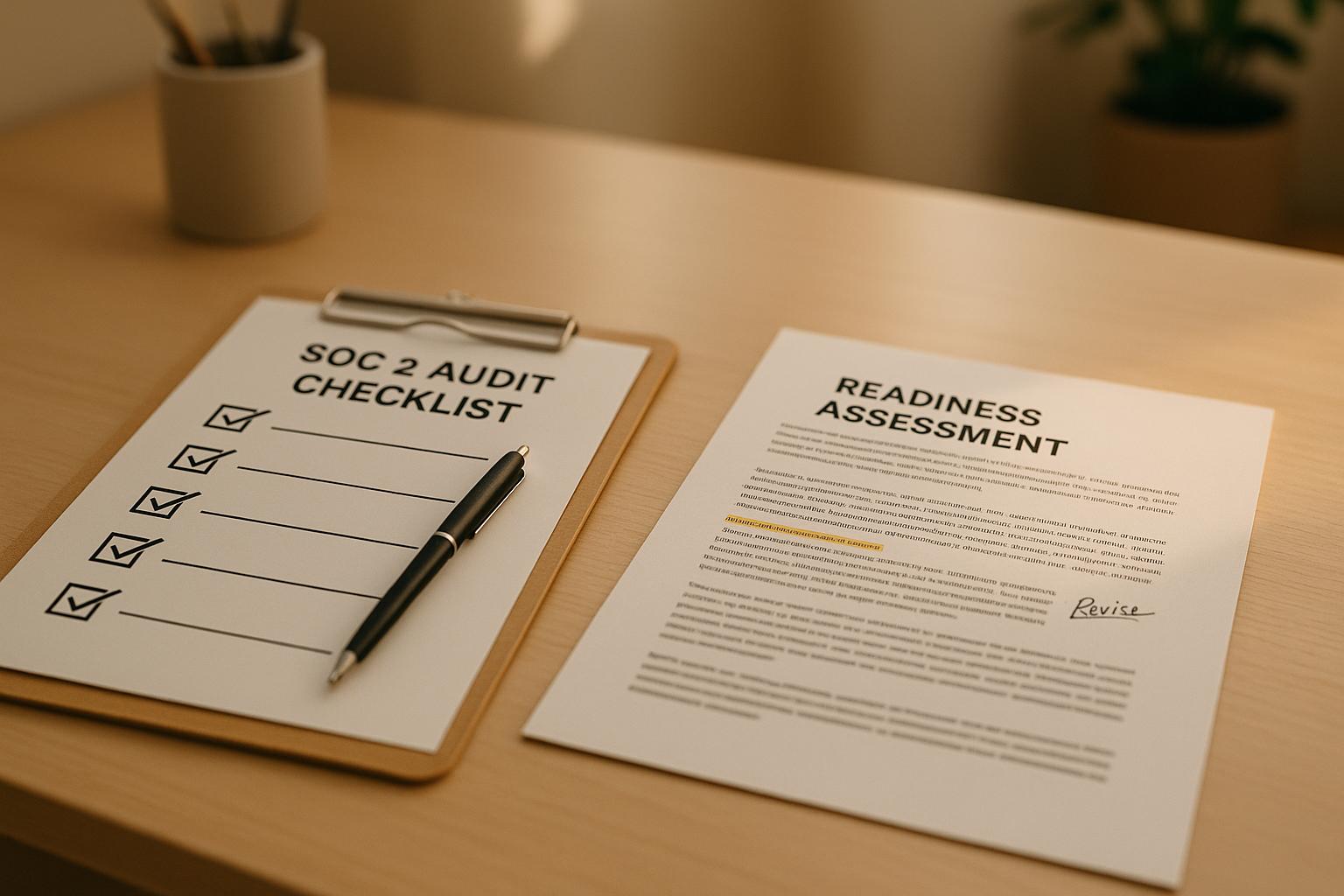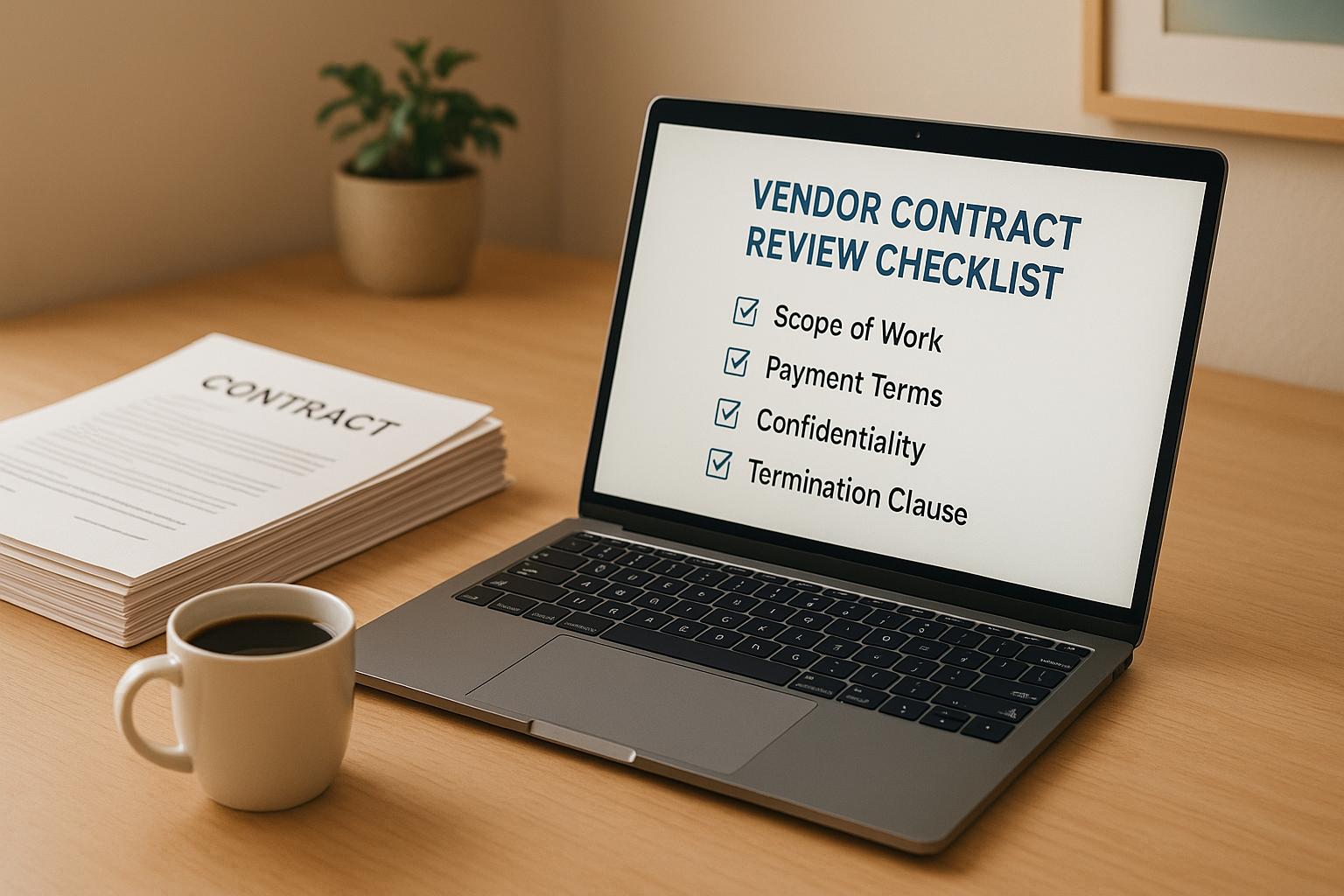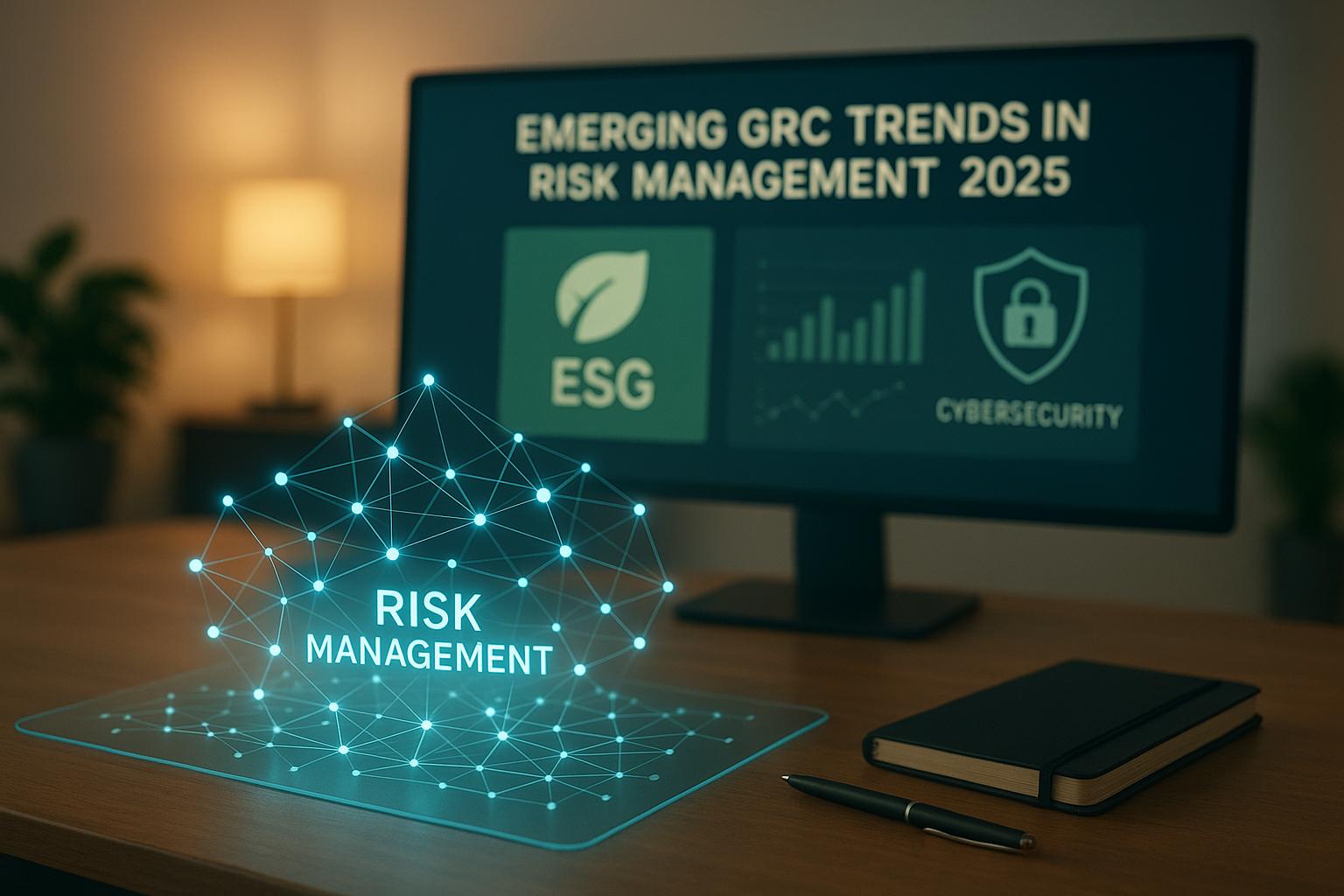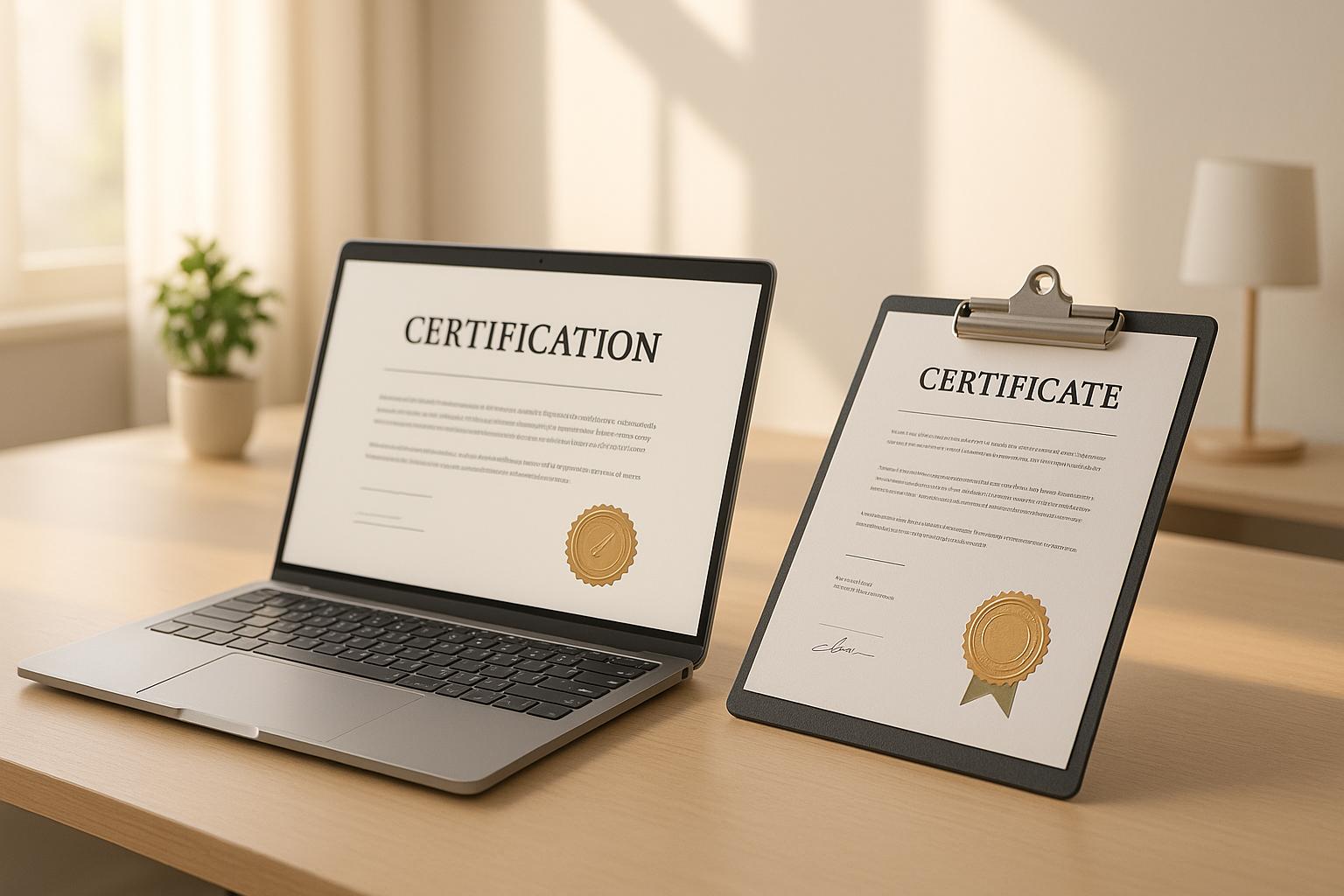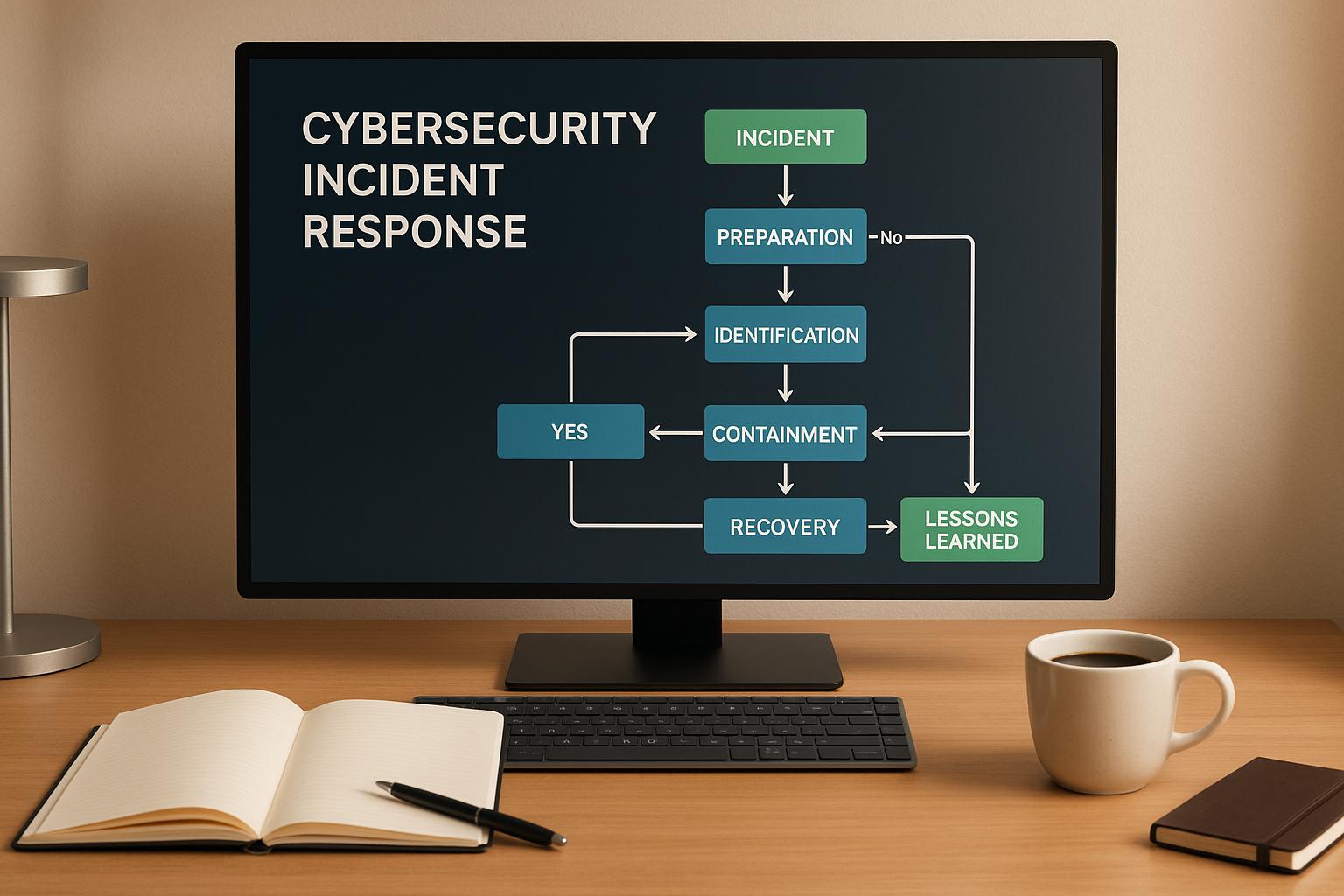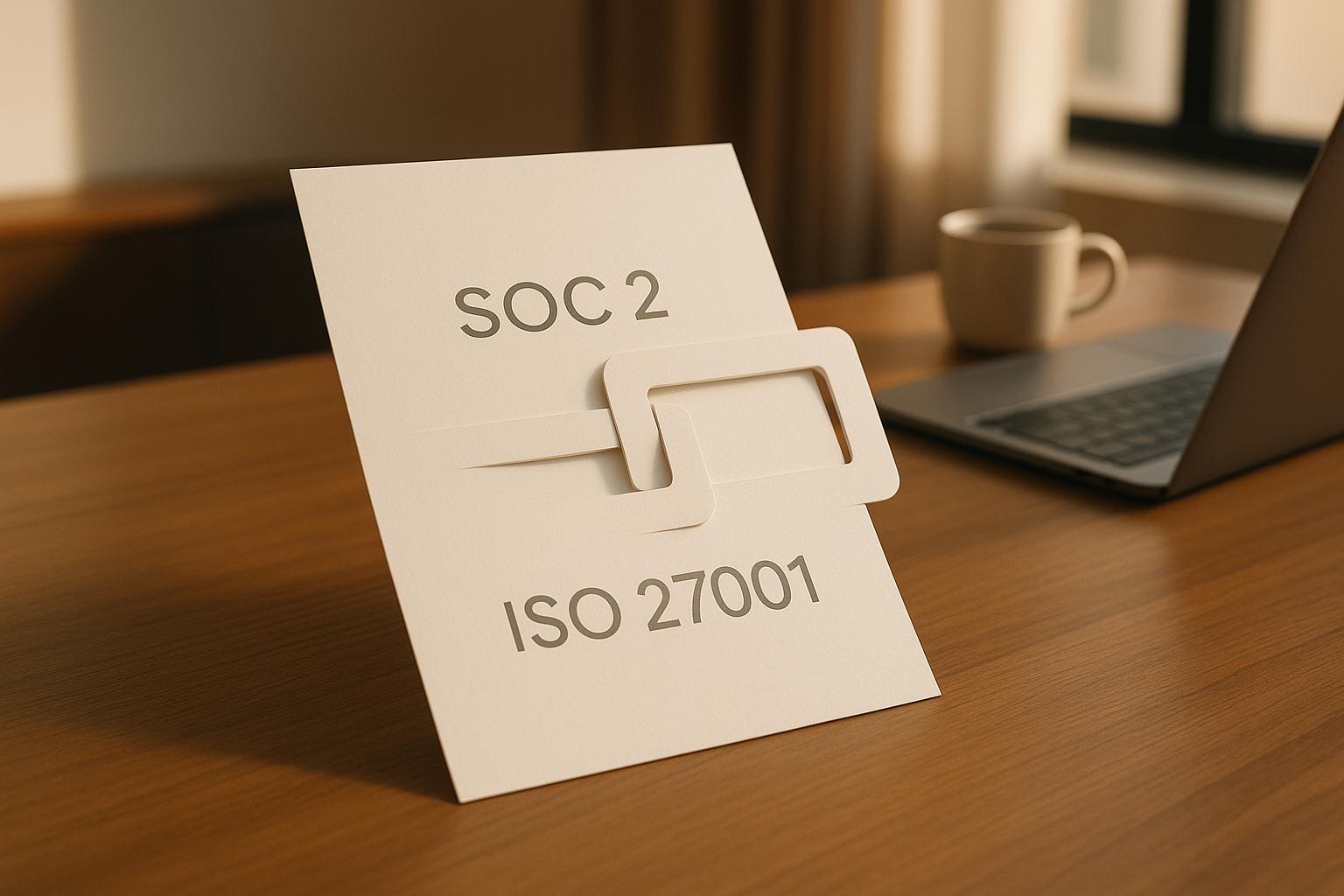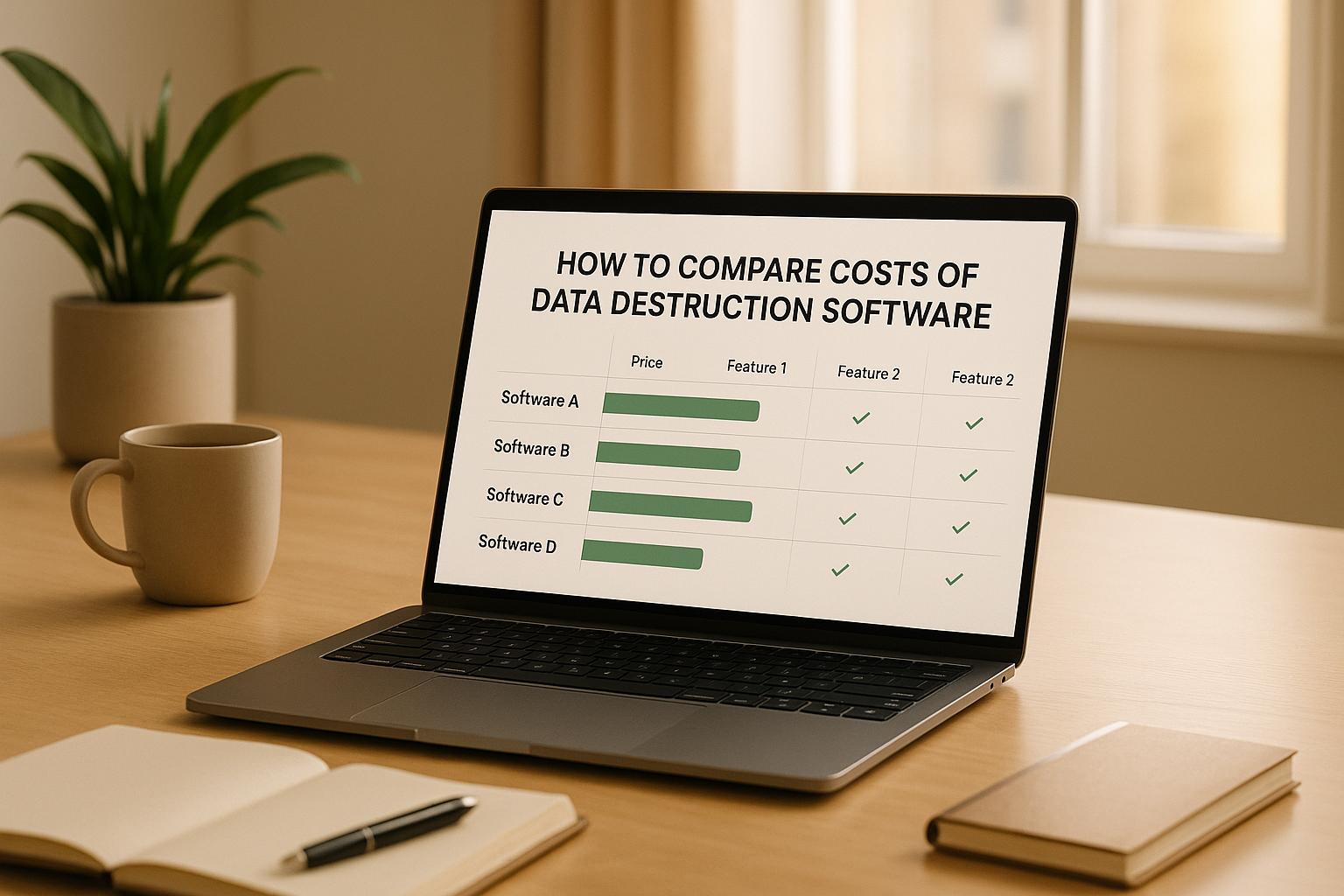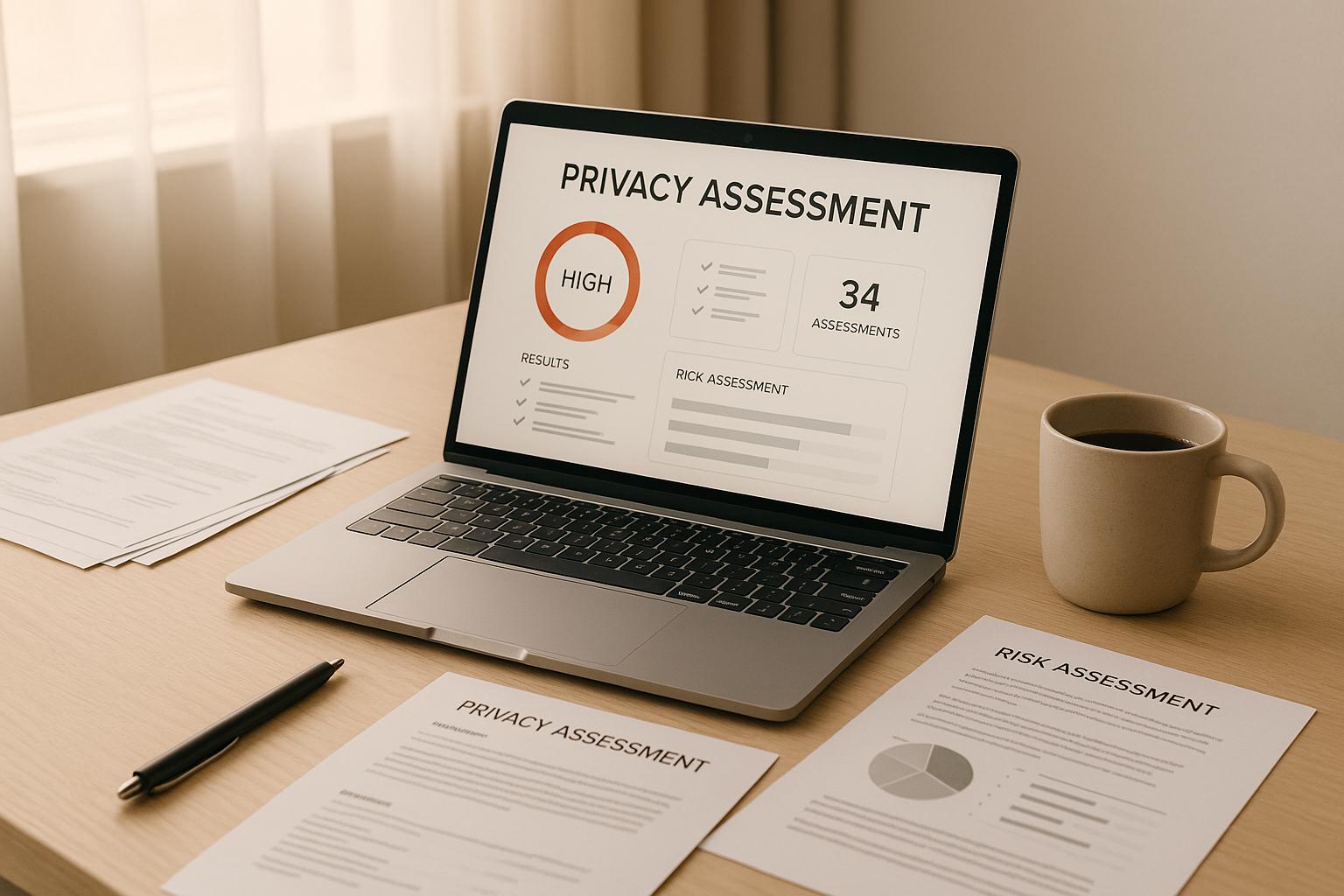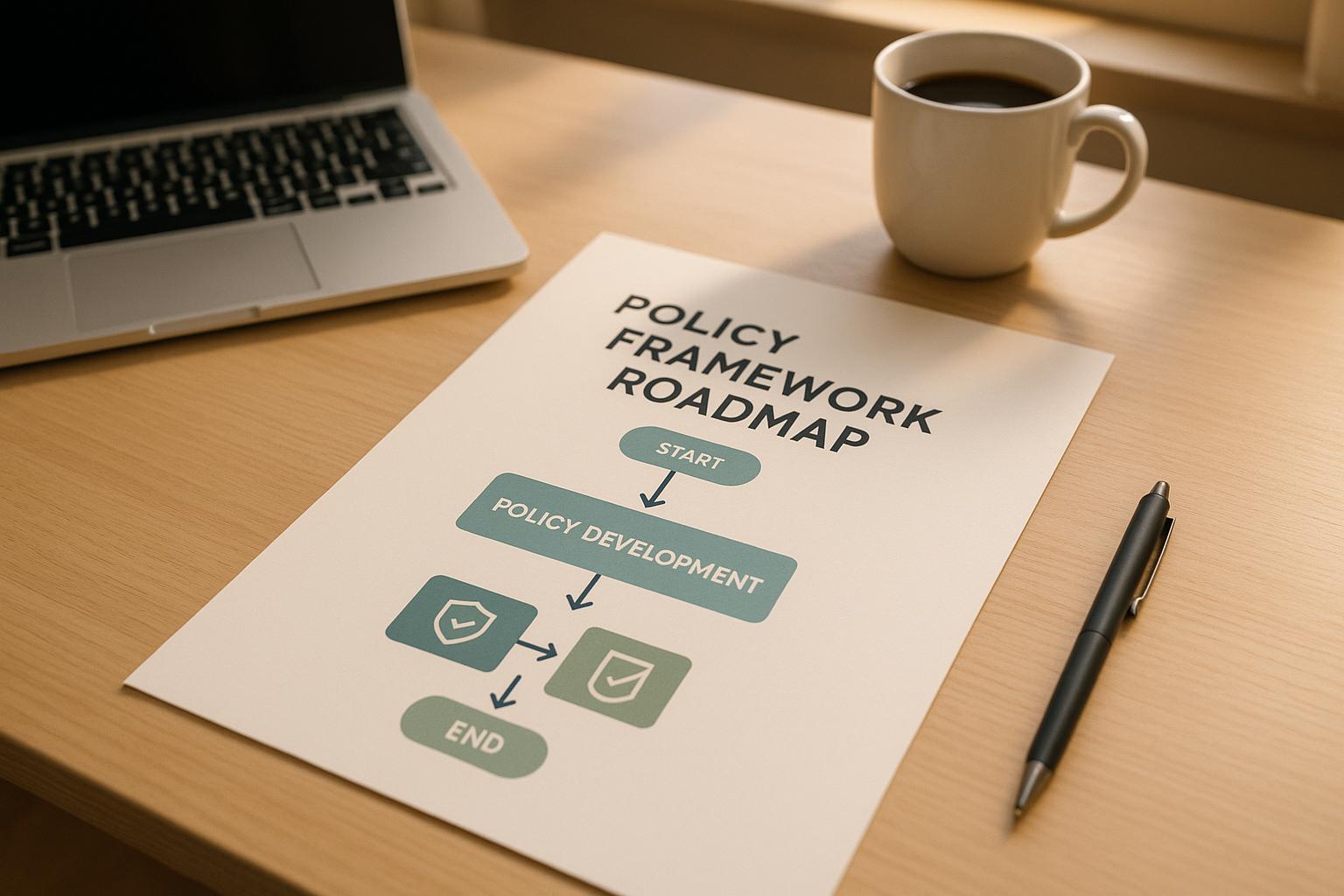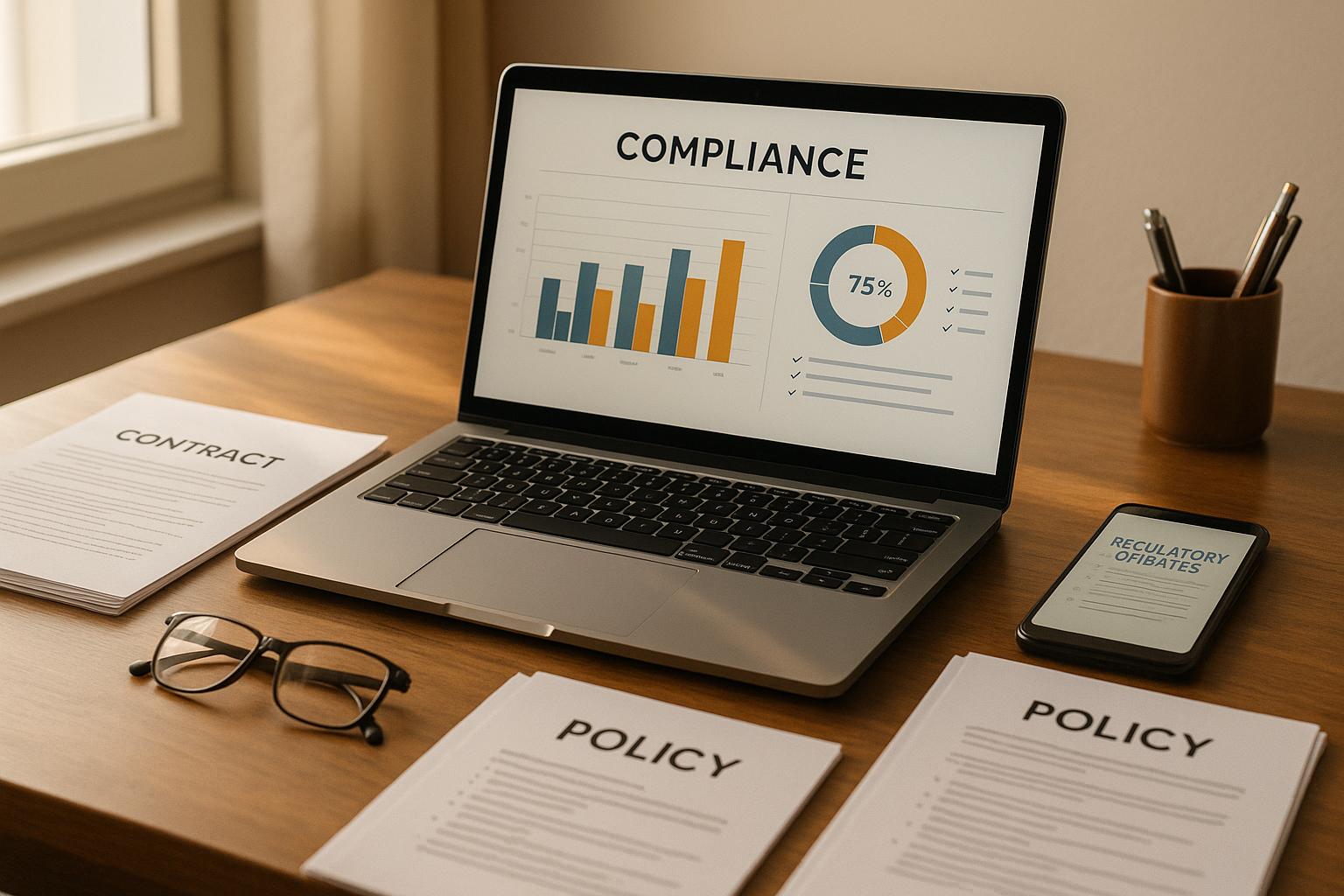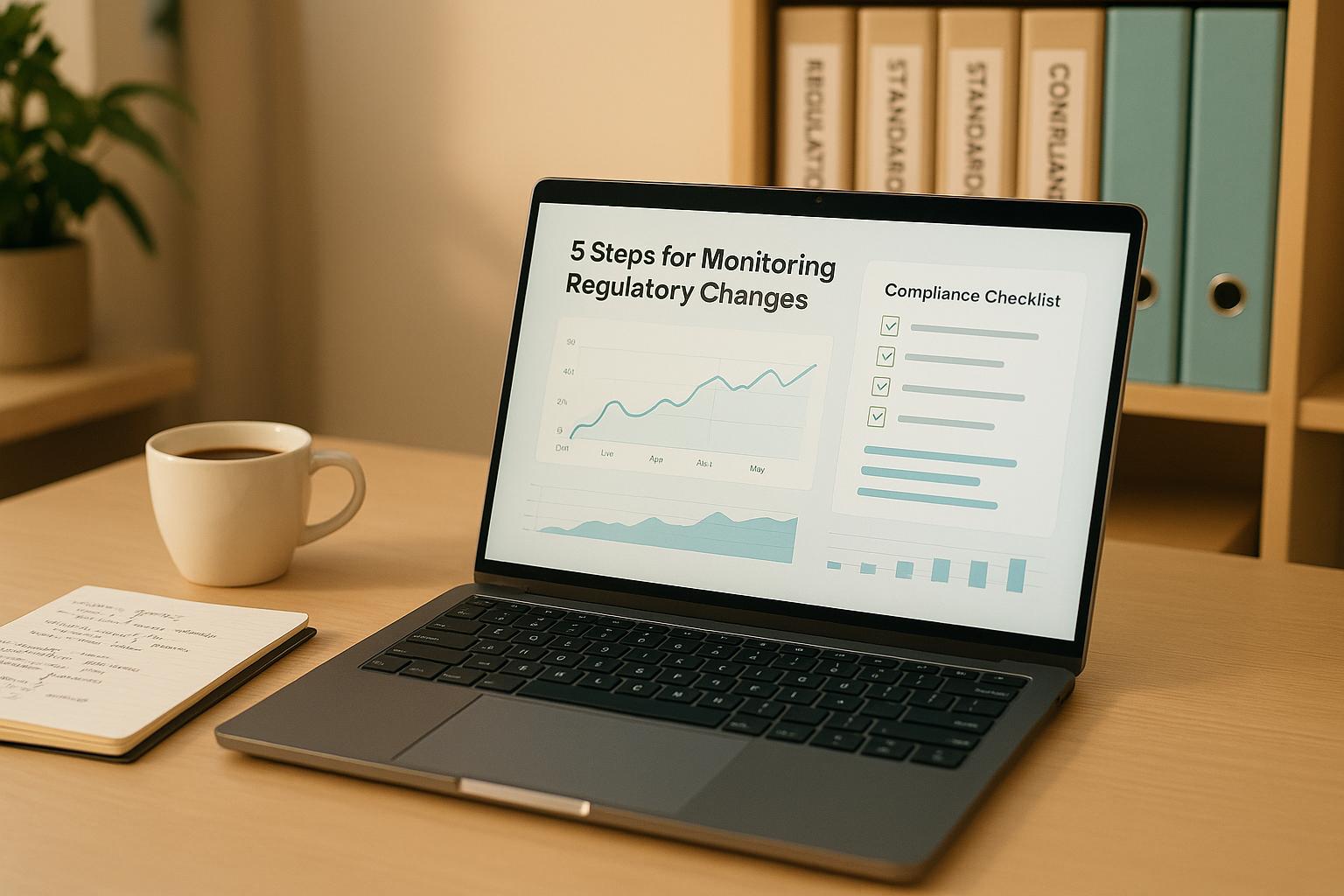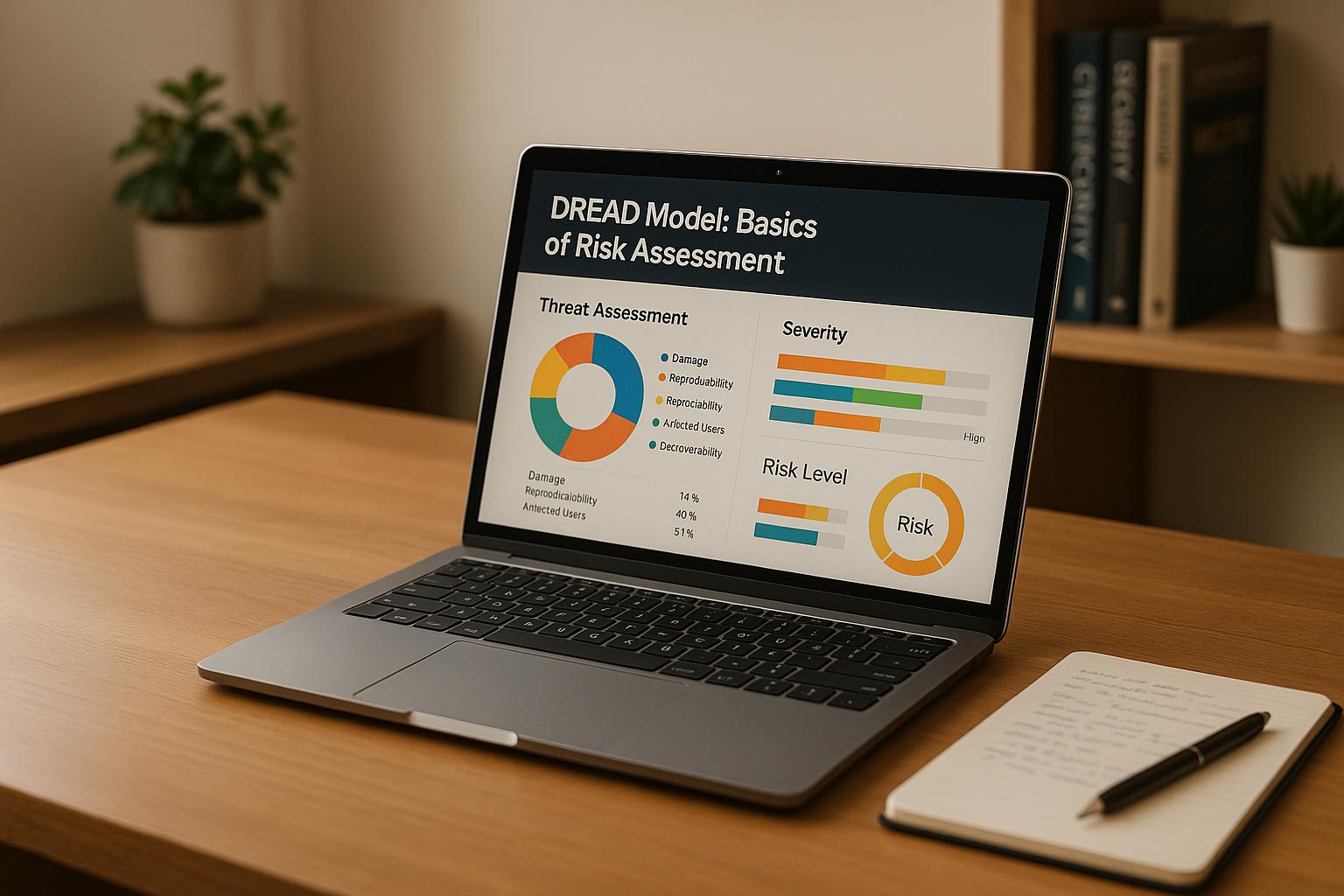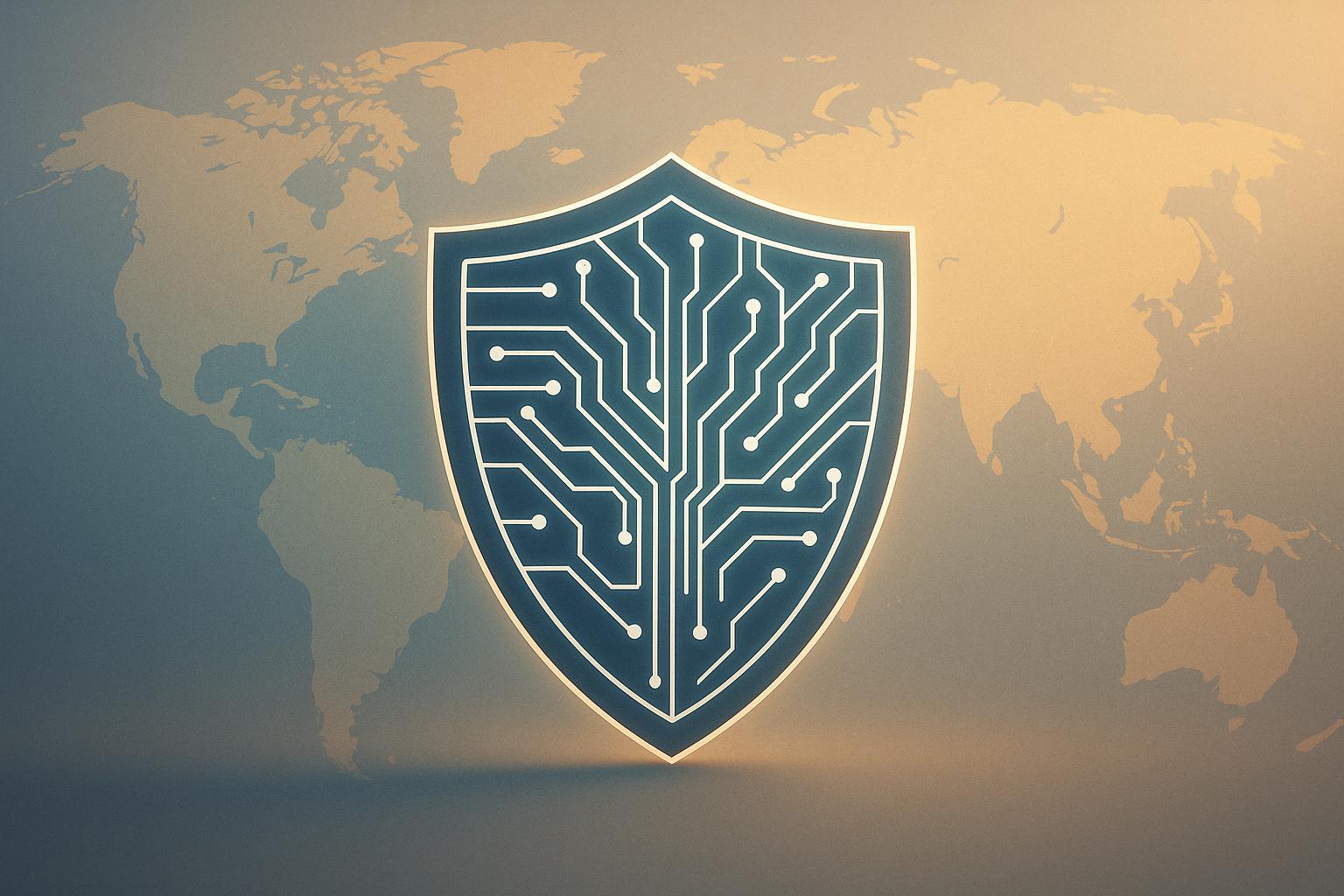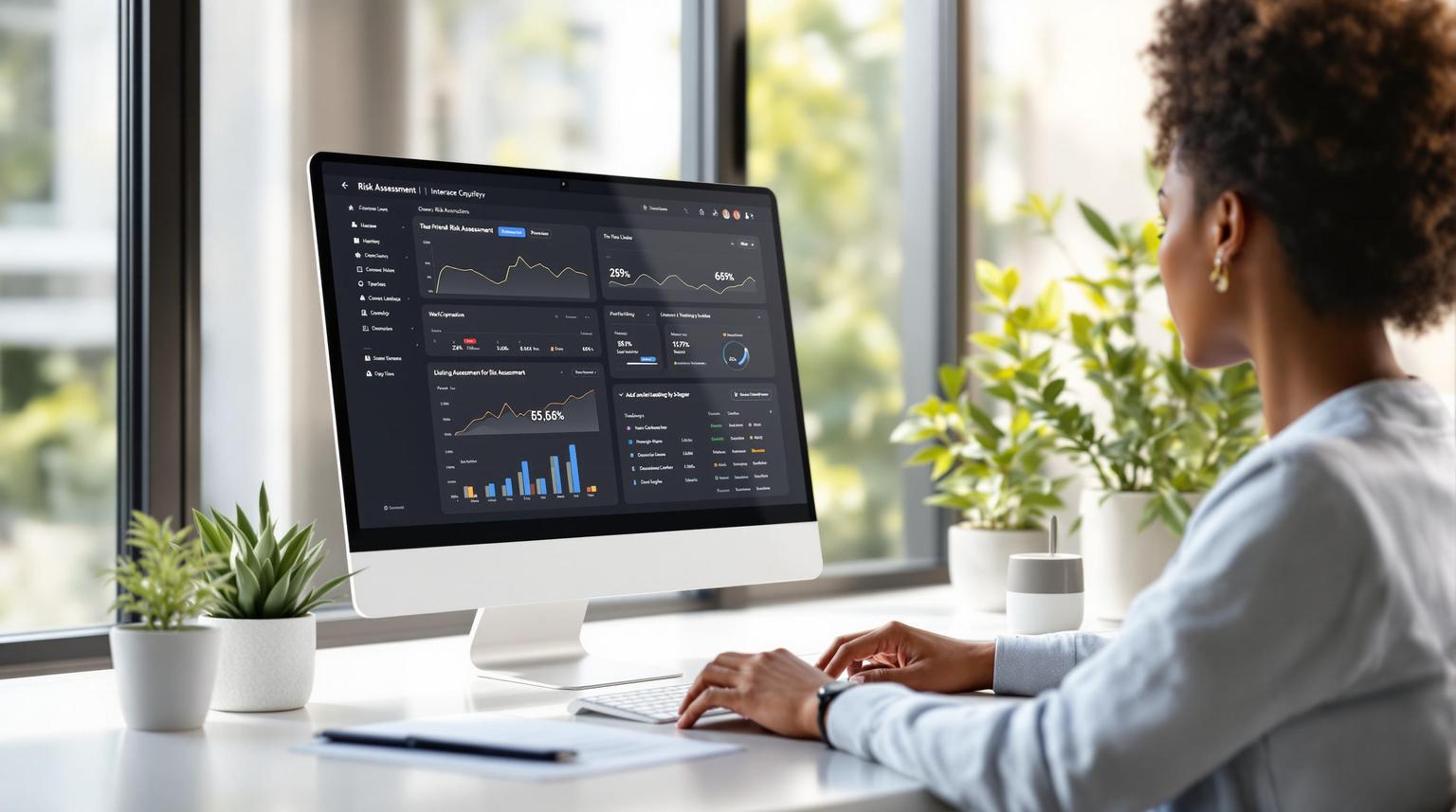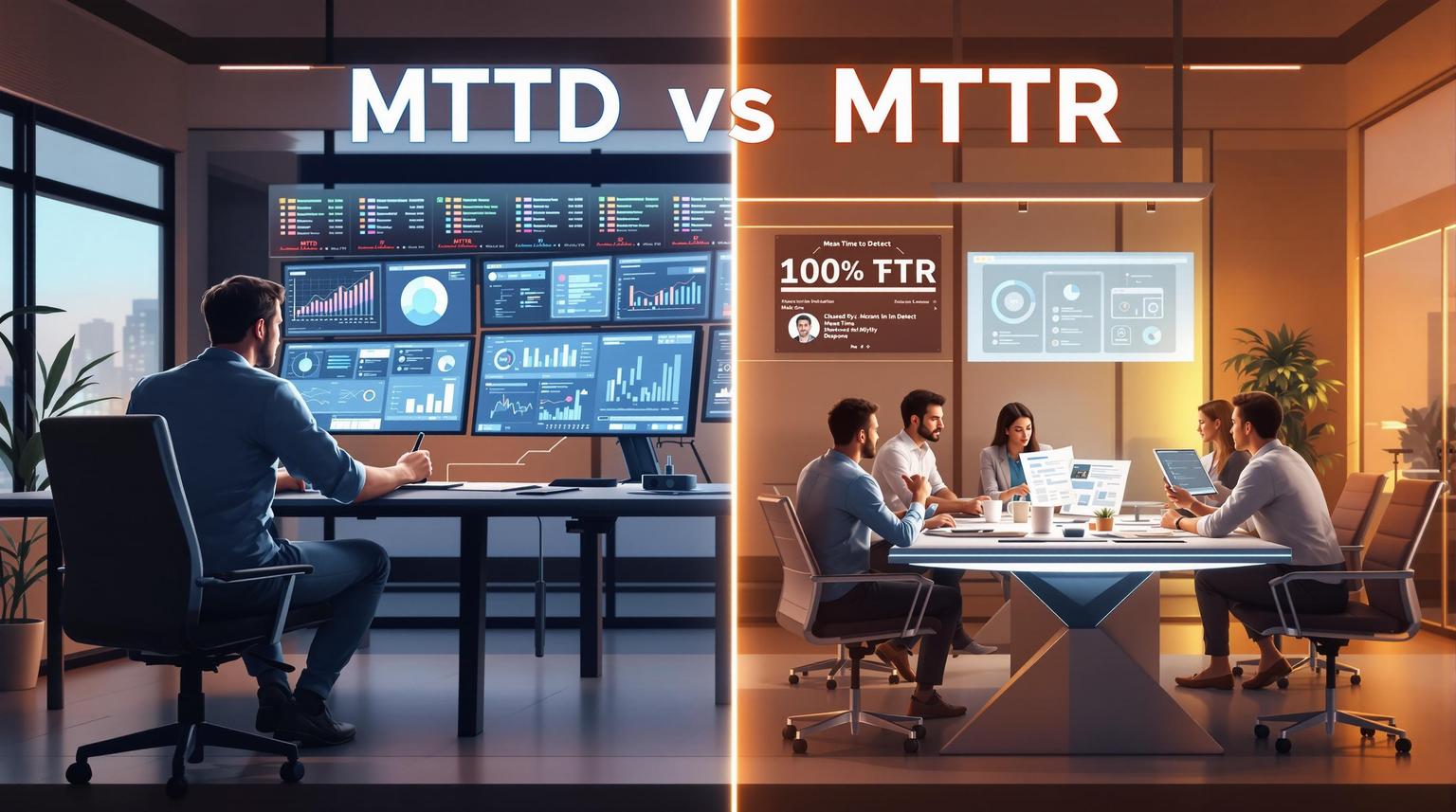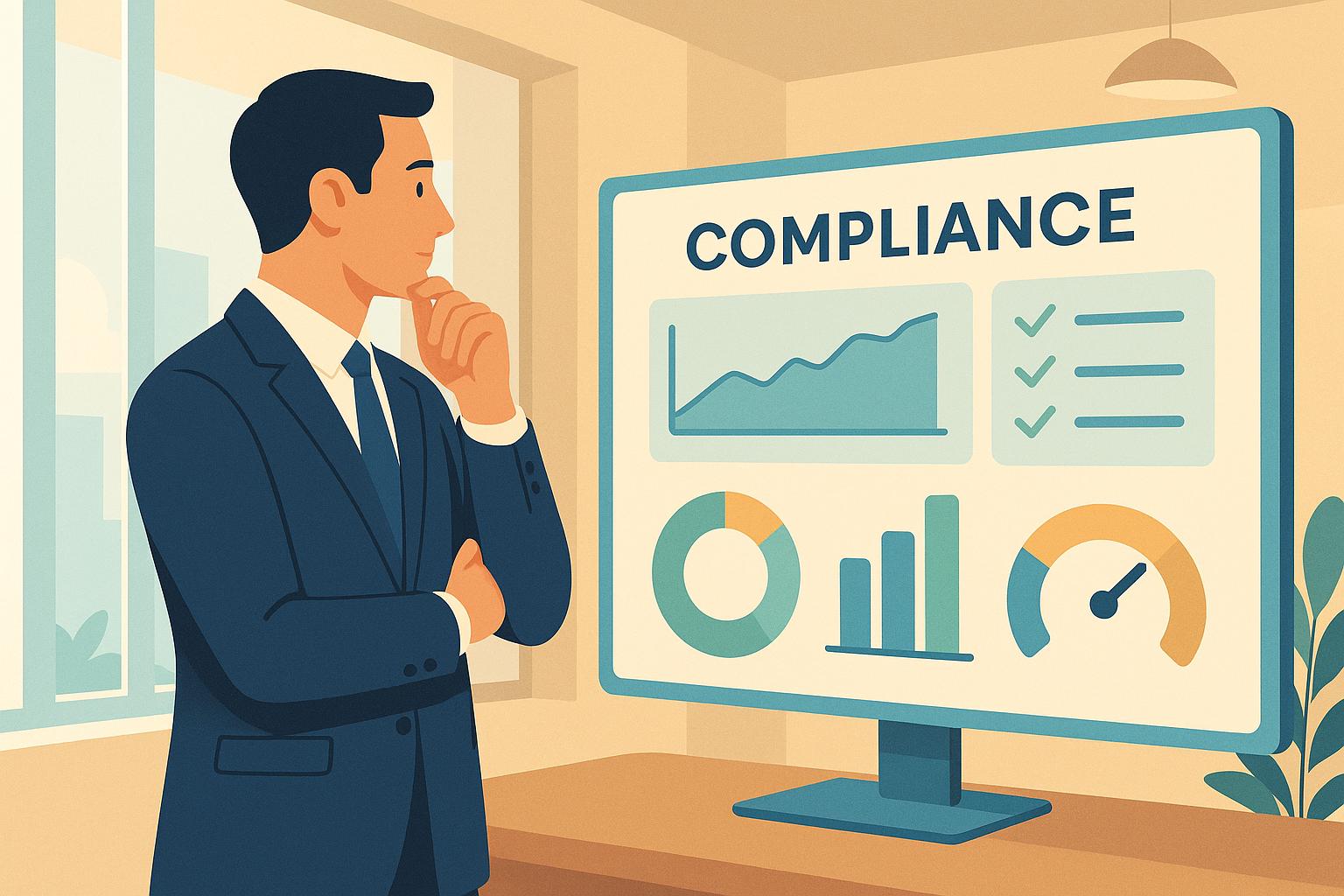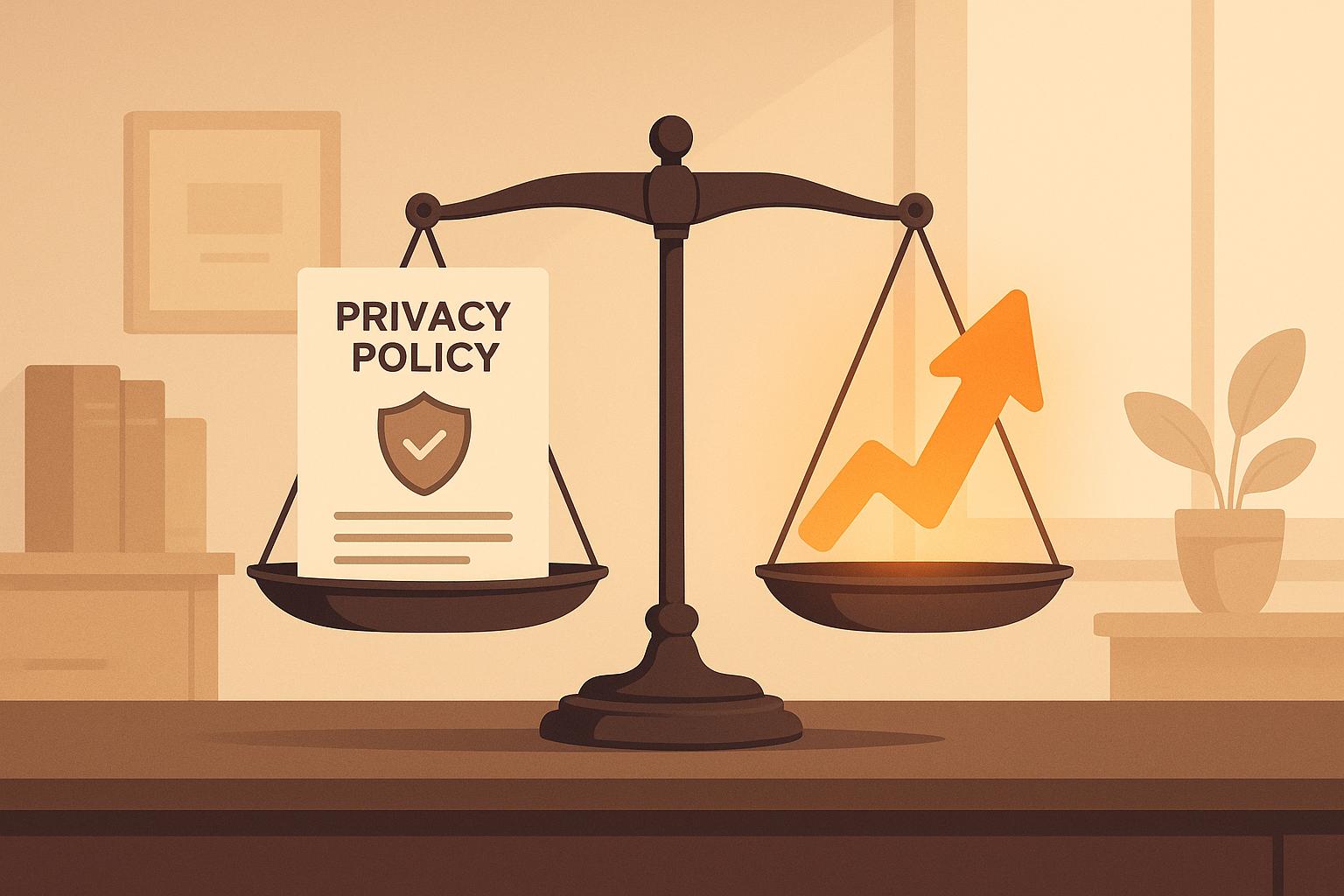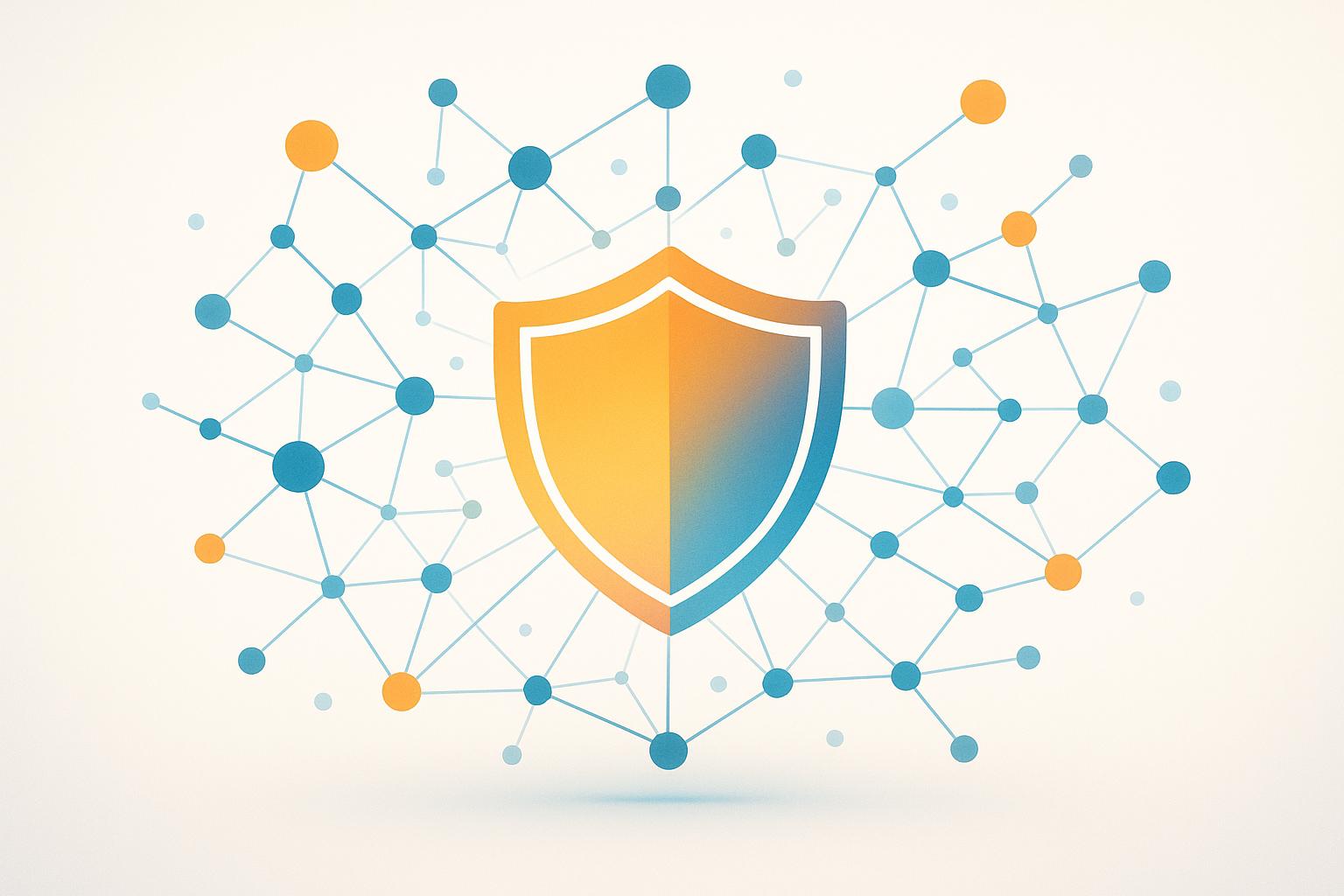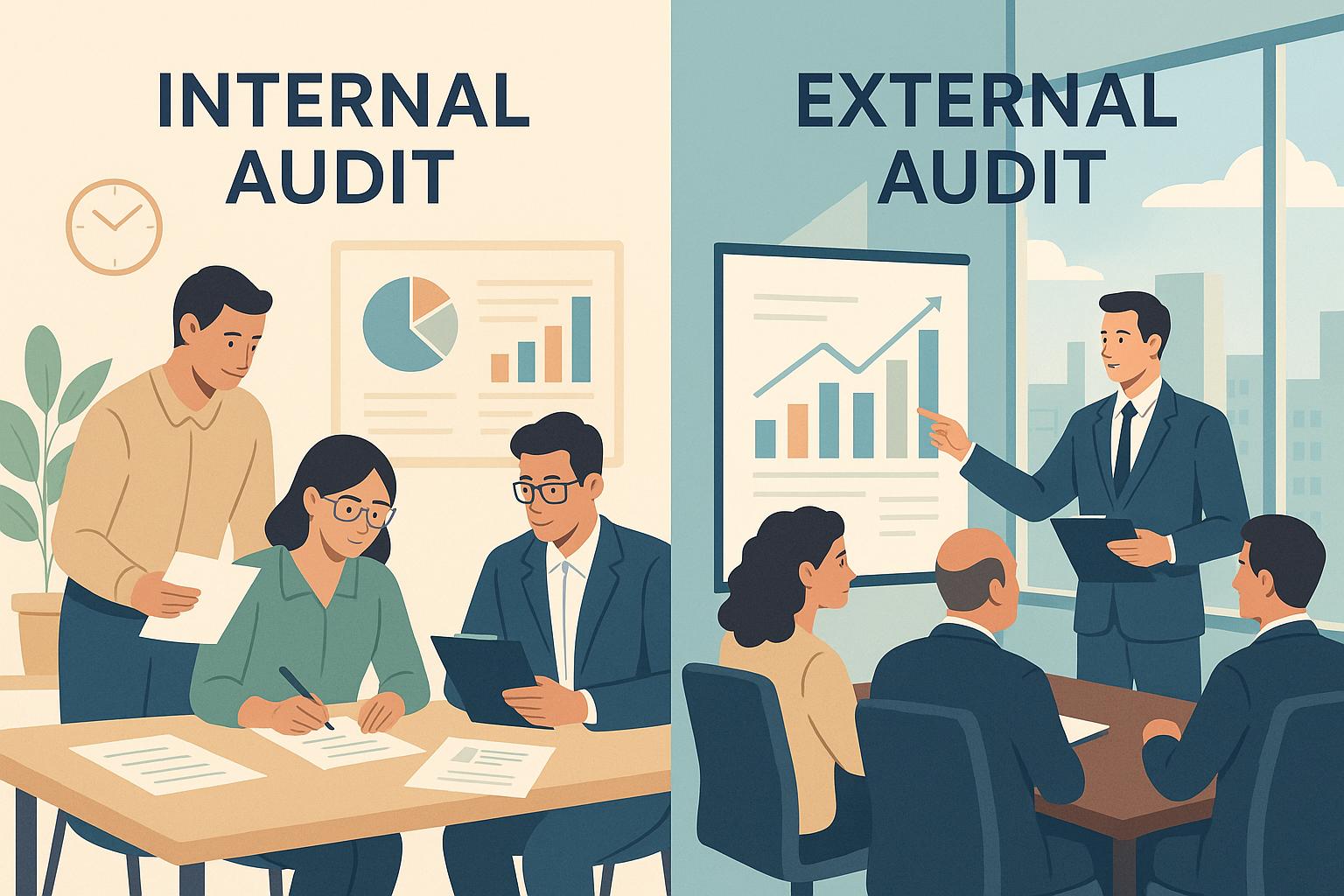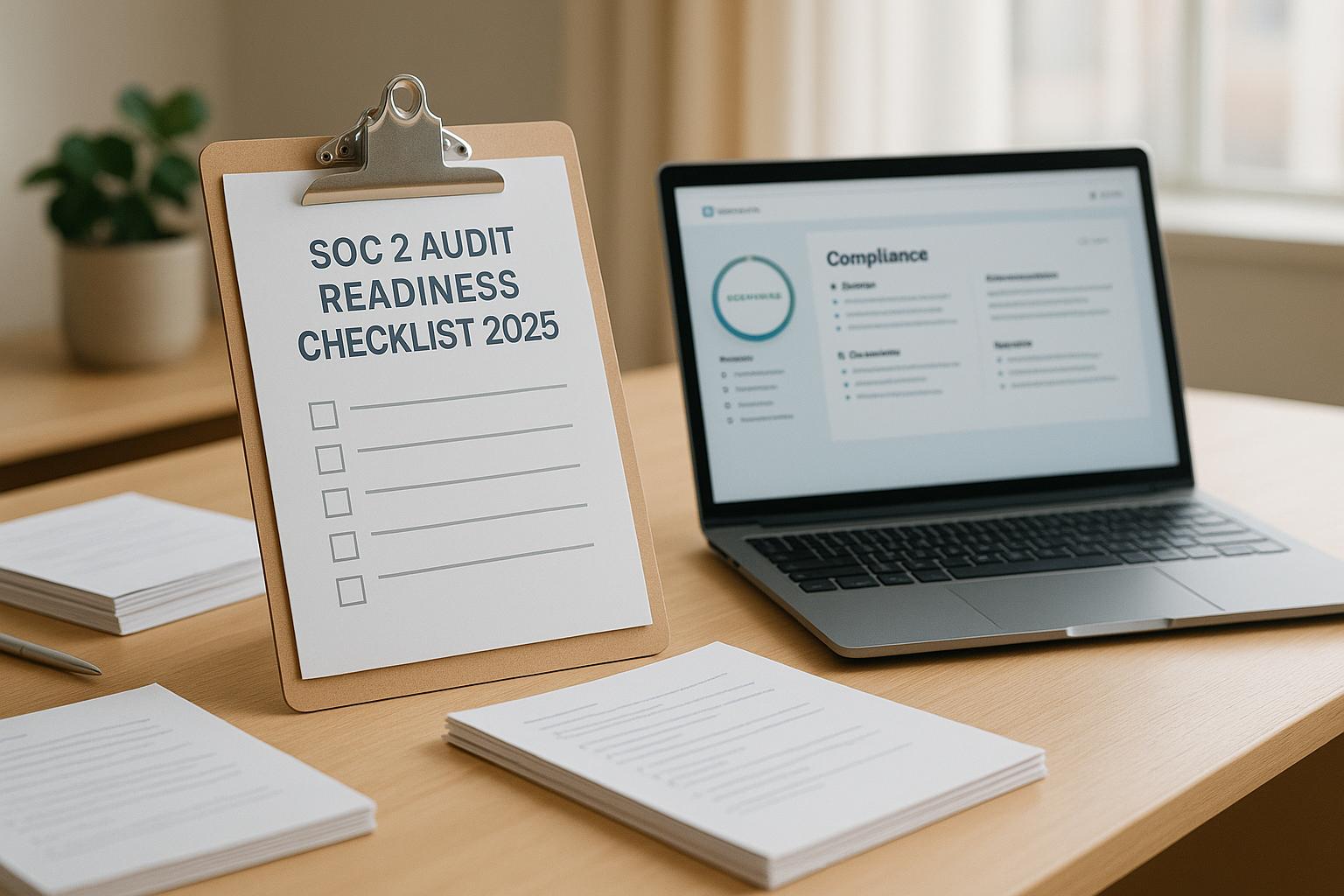
SOC 2 compliance is no longer optional for technology companies in 2025. With 66% of B2B customers checking for SOC 2 compliance before signing contracts and 94% of organizations losing sales due to poor data security, the stakes are high. Businesses with SOC 2 certification not only reduce risks but also speed up sales cycles by 30% and improve client retention rates above 95%.
To prepare for a successful SOC 2 audit, you need to focus on:
- Defining your audit scope to match your business needs.
- Running a readiness assessment to identify and fix gaps.
- Organizing evidence and documentation to meet auditor expectations.
- Using compliance tools and expert services to streamline the process.
Start early, prioritize security controls, and ensure your team is prepared for the audit. SOC 2 compliance isn't just about passing an audit - it's about building trust and protecting your business in a competitive market.
SOC 2 Basics and Setting Your Audit Scope
SOC 2 and Trust Services Criteria Overview
SOC 2 reports focus on evaluating how well service providers implement internal controls to safeguard information and systems. These audits are based on trust services principles established by the American Institute of Certified Public Accountants (AICPA). Essentially, the goal is to ensure that your organization has the right controls in place to protect sensitive data.
At the core of SOC 2 are five Trust Services Criteria, which outline how organizations should manage sensitive information:
| Trust Services Criteria | Description | Required/Optional |
|---|---|---|
| Security | Ensures systems and data are protected from unauthorized access and disclosure. | Required |
| Availability | Ensures systems and information are accessible when needed. | Optional |
| Processing Integrity | Verifies system processing is accurate, valid, complete, and timely. | Optional |
| Confidentiality | Protects confidential information from unauthorized access. | Optional |
| Privacy | Governs the handling of personal information in line with stated policies. | Optional |
Source: American Institute of CPAs
Among these, Security is the only mandatory criterion for every SOC 2 audit, often referred to as the "common criteria." The AICPA defines Security as ensuring:
"Information and systems are protected against unauthorized access, unauthorized disclosure of information, and damage to systems that could compromise the availability, integrity, confidentiality, and privacy of information or systems and affect the entity's ability to meet its objectives."
The other four criteria are optional, allowing organizations to customize their SOC 2 audits based on their specific needs. This flexibility makes it easier to address unique risks without adding unnecessary complexity.
Each criterion includes detailed points of focus, which provide guidance on how to effectively implement the controls. With this framework in mind, the next step is defining the scope of your audit.
Setting the Scope of Your SOC 2 Audit
Defining the scope of your SOC 2 audit is a critical step in preparing for the process. The scope outlines which systems, processes, and controls will be reviewed, directly influencing the audit's cost, timeline, and overall effectiveness.
"One of the most crucial aspects of preparing for your SOC 2 audit is defining scope."
A poorly defined scope can lead to wasted resources or overlooked risks, ultimately increasing costs and leaving vulnerabilities unaddressed.
Start by identifying the services and commitments your organization provides. Determine which systems or services will be covered in your SOC 2 report, and decide which Trust Services Criteria apply based on your business model and customer expectations.
Several factors should guide your decisions, including industry standards, customer requirements, business goals, legal obligations, and potential risks. For example, a healthcare organization might need to include electronic medical records and related systems to comply with health data protection regulations.
Adopt a risk-based approach to focus on the controls that are most critical to the audit criteria. Prioritize key systems and services - especially those impacting security and confidentiality. Consider whether to include multiple environments, such as both on-premises and cloud systems, or services managed by third parties.
Your scope should also align with stakeholder expectations. It should reflect your business operations, meet customer needs, and adhere to regulatory requirements, providing assurance to clients, investors, and partners.
Evaluate your available resources, including time, budget, and personnel, to set a realistic scope. Many organizations start with a narrower audit and expand their scope in future assessments, demonstrating steady progress over time. This approach helps ensure efficiency during the readiness phase.
Don’t overlook third-party services that play a role in your internal controls. Including them in your scope is essential for a comprehensive review.
Ultimately, the goal is to strike a balance between thoroughness and focus. Management takes the lead in defining the initial scope, often working with auditors during the readiness assessment. They also determine the audit period, which should align with operational cycles, contractual obligations, or regulatory deadlines.
Consulting a licensed CPA can provide valuable insights into your operations, helping you select the right criteria and ensure your scope addresses real risks without unnecessary complications.
Running a Readiness Assessment and Fixing Gaps
Running a Readiness Assessment
A SOC 2 readiness assessment is a critical step in identifying and addressing security weaknesses before your actual audit begins. This process involves evaluating your organization's current processes, controls, and policies against the Trust Services Criteria to pinpoint areas needing improvement.
The assessment should focus on six core areas: physical infrastructure, digital infrastructure, third-party vendors, internal operations, people, and leadership. Each of these plays a key role in shaping your security posture and overall readiness for compliance.
Start by conducting a detailed risk assessment to uncover vulnerabilities within your systems and processes. This involves mapping your existing controls to the relevant Trust Services Criteria. While security is a mandatory criterion, others are optional and depend on your business needs.
Pay close attention to how your current policies and procedures align with SOC 2 principles. Look for gaps in documentation and evaluate whether your technical and operational controls work effectively in practice - not just on paper.
Another crucial aspect is reviewing your evidence collection process. During the audit, you'll need to prove that your controls are functioning as intended. Ensure your evidence is well-organized and easily accessible, ideally with the help of automated tools.
To simplify this process, consider using SOC 2 compliance software. These tools can automate the review of your security controls and generate detailed reports highlighting areas of non-compliance. Combining automation with expert advice often delivers the best results, helping you focus on the most critical priorities. This readiness assessment lays the foundation for targeted remediation, which we’ll explore in the next section.
Recording and Prioritizing Fix Plans
Once the readiness assessment is complete, the next step is to systematically address the gaps you’ve identified. Prioritize these gaps based on factors like risk level, complexity, dependencies, and overall impact.
Start by categorizing the gaps using a simple high, medium, and low priority framework. High-priority issues often involve missing or inadequate security controls, while medium-priority gaps might relate to updating documentation or refining processes.
"When a client has clearly mapped their controls to the Trust Services Criteria and addressed gaps methodically, it transforms the audit from a stressful examination into an evaluation of well-implemented security practices. This preparation not only streamlines the audit process but often results in more favorable outcomes since remediation happens proactively rather than reactively." - Leith Khanafseh, Audit Managing Partner, Thoropass
For each identified gap, define specific control objectives, outline actionable steps, assign ownership, set realistic deadlines, and establish measurable success criteria. Breaking down complex remediation tasks into smaller, manageable steps ensures progress stays on track.
Assign clear accountability for each task to specific individuals. This prevents anything from being overlooked and ensures a structured approach to remediation. Deadlines should balance urgency with available resources, keeping in mind how these activities might impact daily operations or customer experience.
Tailor your controls to match your organization’s maturity level. Early-stage companies might focus on basic, manual controls that can grow over time. In contrast, scaling organizations often need automated solutions to reduce reliance on individual team members, while larger enterprises benefit from layered control systems with thorough oversight.
Use tools that support workflows, policy reviews, and team collaboration to track your progress. Platforms that integrate with your existing technology stack can streamline evidence collection, monitor controls, and manage policies efficiently.
Implement a continuous improvement process by scheduling regular reviews to identify new or evolving gaps. Build a system to incorporate lessons learned into future control updates, and ensure your policies and procedures remain up-to-date with your current practices.
Finally, consider how different remediation activities depend on one another. Addressing certain gaps may be a prerequisite for tackling others effectively.
Document everything throughout this process. Your remediation efforts will serve as valuable audit evidence, demonstrating to auditors that your organization takes compliance seriously and has a structured approach to addressing security challenges. This not only strengthens your compliance posture but also reinforces trust in your security practices.
SOC 2 Readiness Assessment Checklist for SOC 2 Audits
Creating Documentation and Gathering Evidence
When it comes to SOC 2 audits, detailed documentation and a structured approach to evidence collection can make the entire process smoother. These steps help clarify what's needed, how to organize it, and how to maintain it over time.
Required Documentation for SOC 2 Compliance
The specific documents you'll need depend on the Trust Services Criteria you're addressing, whether you're undergoing a Type 1 or Type 2 audit, and the internal controls you've implemented. However, there are a few key documents that every organization must prepare:
- Management assertion: This is your company's official statement describing how your system is designed, operates, and is managed.
- System description: This document outlines the infrastructure handling customer data. It should include a company overview, system overview, key service commitments, system components, incident disclosure procedures, criteria exceptions, and relevant details about your control environment. For a Type 2 audit, you’ll also need to document any system changes during the audit period.
- Controls matrix: This is a detailed list of your controls, including criteria reference numbers, control activities, risk levels, and who owns each control. It maps your controls to the applicable Trust Services Criteria.
In addition to these core documents, auditors often request supplementary materials such as governance manuals, risk management plans, incident response procedures, and network diagrams. Other useful records include vendor agreements, onboarding and termination documentation, security training logs, device inventories, IT maintenance records, and policies on data privacy and security (e.g., data retention, encryption, log management, access controls, and password requirements). Be sure to also maintain controlled access logs, backup logs, privacy notices, risk assessments, and previous compliance reports or self-assessments.
Well-organized documentation not only simplifies the audit process but also strengthens trust with stakeholders.
Best Practices for Gathering Evidence
Gathering evidence for SOC 2 compliance works best with a structured system that ties each control to its associated risk, action, and measurable result. Using timestamped records, you can create a clear evidence trail that proves your controls are functioning as intended.
"Efficient and precise documentation forms the backbone of your SOC 2 compliance strategy. Maintaining a clear evidence chain is essential to demonstrate that every control is performing as designed - which is exactly what auditors demand." – ISMS.online
Start by cataloging your controls and mapping them directly to the SOC 2 criteria. Use version-controlled logs to track updates and establish regular review cycles to keep your mappings current. Setting KPIs that connect log entries, system metrics, and process checks to measurable outcomes can also help.
Organizations with streamlined documentation processes can cut audit prep time by as much as 40%. To achieve this, use standardized templates and scheduled reviews to record every control update, ensuring a seamless audit trail. Store all documentation in cloud-based repositories with role-based access controls, and maintain complete version histories of updates.
To stay organized, adopt a naming system that includes the policy type, version number, and review date. Combine automated tools - such as those for access reviews, backup logging, and vulnerability scans - with manual checks to ensure your evidence is always current. For quarterly controls, make sure to retain four sets of records per year. Define retention periods for each control, assign clear responsibilities for evidence management, and establish secure disposal methods for outdated records.
This robust evidence collection process lays the groundwork for meeting privacy requirements, which are covered in the next section.
Managing US Privacy Requirements
Building on strong documentation practices, addressing US privacy laws requires a clear understanding of how personal information (PII) flows through your systems. For organizations handling PII under laws like the California Consumer Privacy Act (CCPA) or the Virginia Consumer Data Protection Act (VCDPA), it’s essential to document how data is collected, used, retained, and disposed of - especially if the Privacy criterion is in scope.
Key privacy documentation should include data mapping that tracks PII through your systems and details how it’s protected at every stage. Maintain thorough records of data subject requests (e.g., access, deletion, or portability) and outline the procedures and timelines for handling them. Vendor agreements with third-party processors should address privacy obligations, breach notifications, and audit rights.
Additionally, document your privacy training programs, specifying who receives training, when it occurs, and what topics are covered. Keep records of employee acknowledgments or certifications related to privacy.
Ensure your incident response documentation includes detailed steps for handling privacy breaches, including notification requirements for affected individuals and regulatory bodies. Maintain a log of privacy incidents, noting how they were addressed and what improvements were made to prevent future issues. Regularly reviewing your privacy documentation will help you stay aligned with evolving US privacy laws.
Using Tools and Expert Help to Speed Up Compliance
Getting ready for SOC 2 compliance can feel overwhelming, but specialized tools and expert services can simplify the process. What once took months of manual effort can now be tackled efficiently with automated workflows and expert guidance. The right mix of technology and expertise can turn a complex process into a manageable one.
How Compliance Tools Make SOC 2 Preparation Easier
Once you’ve completed your readiness assessment, compliance tools step in to keep your documented controls up-to-date and continuously monitored. Modern SOC 2 software centralizes all your controls, automates evidence collection, and provides a clear, unified view of your compliance status - something especially helpful when dealing with reports that include more than 150 controls.
When choosing a compliance tool, prioritize platforms that offer continuous control monitoring. These tools can quickly alert you to potential risks, automate routine compliance tasks, and even kick off remediation efforts when issues arise. They also ensure your documentation stays thorough and organized, which is critical for audits.
Advanced tools go beyond basic tasks. For example, instead of just noting that a quarterly access review was completed, they document the approval process, exceptions, and the context behind decisions. This level of detail - capturing the "who, what, and why" - provides auditors with a complete picture.
Integration is another key feature. Truly integrated systems ensure updates are reflected across all compliance evidence in real time, improving accuracy and consistency. Look for tools that support workflows for approvals, policy reviews, and team collaboration to keep everyone on the same page.
Other features to consider include:
- Automated evidence collection that generates real-time, shareable reports
- Scalability to grow with your organization
- Simplified onboarding and offboarding processes
- Vendor management capabilities
- Auditor-approved security policies
Finally, tools that streamline communication between auditors and your team can make the audit process much smoother.
Benefits of Outsourcing Compliance Management
While tools can handle much of the heavy lifting, expert support can take your compliance program to the next level. Experts help you maximize the potential of your compliance tools while ensuring your security strategy aligns with your business goals. The demand for such expertise is clear, with the compliance market projected to hit $97 billion by 2028.
Companies like Cycore specialize in guiding organizations through complex compliance frameworks such as SOC 2, HIPAA, ISO27001, and GDPR. Their services cover everything from initial assessments to certification, offering tailored advice for your specific business needs.
"All it took was 20 days for my team to have a strategy and playbook to execute SOC 2. All thanks to Cycore."
- Rob Ratterman, CEO & Co-Founder, Waites
For organizations that need high-level security leadership without hiring a full-time executive, Virtual CISO (vCISO) services are a cost-effective solution. These services help develop and implement security strategies that fit your business.
Cycore also offers GRC Tool Administration Services to handle the setup, maintenance, and updates of compliance tools like Drata, Vanta, Secureframe, and Thoropass. This ensures your tools run smoothly without requiring your team to become experts in each platform. For instance, ReadMe saved 1,656 hours annually by leveraging Cycore’s GRC admin services.
Key benefits of outsourcing include:
- Gap analysis through initial assessments
- Control implementation
- Detailed documentation
- System and process setup
- Ongoing audit support
This approach ensures your compliance controls align with your actual business processes, avoiding unnecessary complications.
"Cycore provided exemplary service in managing our compliance needs. Their team's experience is evident with how quickly they were able to solve our challenges."
- David Kim, Co-Founder, Monterra
Flexible pricing options make these services accessible to organizations of all sizes. Startups can opt for basic vCISO services focused on a single framework, while larger enterprises can access a full suite of vCISO and vDPO services for multiple frameworks. This flexibility allows you to scale support as your needs grow.
sbb-itb-ec1727d
Final Pre-Audit Checklist for 2025
With your compliance tools ready and expert guidance in place, it’s time to tackle the final pre-audit checklist. This step ensures you address any remaining gaps, giving you confidence as you approach your SOC 2 audit for 2025. Building on your earlier assessments and remediation work, these steps will help confirm your readiness.
Key Steps to Confirm SOC 2 Readiness
Conduct a Mock Audit
Run a mock audit internally or with a third-party advisor to test your controls and identify missing evidence.
During this process, review controls from an auditor’s perspective. Can you prove that quarterly access reviews are conducted? Is there documentation showing who approved key decisions? Are your incident response procedures both documented and tested? These are just a few of the questions auditors may ask, so be ready with clear, well-supported answers.
Organize Your Evidence Repository
Centralize your documentation in a well-structured repository. Include labeled folders, versioned policies, time-stamped logs, vendor reports, and training records.
Arrange evidence by Trust Services Criteria - Security, Availability, Processing Integrity, Confidentiality, and Privacy - and further categorize by specific controls. Using timestamps and maintaining version control will show your commitment to accuracy and make the audit process smoother.
Resolve Outstanding Gaps
Address any incomplete or outdated controls immediately. Make sure all documentation reflects your current practices.
Prioritize critical areas. For instance, if your risk assessment hasn’t been updated recently, revise it. Similarly, if backup procedures have changed, ensure the documentation aligns with the new process.
Assign Control Ownership
Assign responsibility for each control to a specific individual who can explain and demonstrate its function.
These control owners should understand their roles thoroughly, be able to locate relevant evidence, and confidently walk auditors through their processes. This approach ensures no control is overlooked and helps streamline the audit.
Conduct Your Gap Analysis
Review all SOC 2 controls to confirm they’re operational and address any unresolved issues.
Test Your Controls
Test key areas like backups, access controls, and incident response procedures to confirm they work as intended. Document the results to provide additional evidence for the auditor. Testing helps ensure your controls are not just in place but are also functioning effectively.
Establish Continuous Monitoring
Set up ongoing monitoring systems to detect control failures or unusual activity quickly. This proactive approach supports both pre-audit readiness and long-term compliance.
Coordinate with Your Auditor
Reach out to your auditor to confirm timelines, logistics, and specific requirements.
Some auditors may have preferences for evidence format or focus areas, so understanding these details early can save you time. Align your evidence repository with their expectations and clarify whether remote system access or specific communication methods will be needed.
Prepare Your Team
Make sure everyone involved in the audit knows their role and is ready for potential questions. Brief your team and designate a single point of contact to liaise with the auditor.
Remember, the audit is a collaborative process. A well-prepared team demonstrates your organization’s commitment to maintaining strong security practices.
For example, companies like PreSkale have reported completing their SOC 2 audits in under 30 days by using compliance automation platforms.
Final Documentation Review
Check all documentation for accuracy, consistency, and completeness. Ensure policy dates are current and that procedures match actual practices.
Verify that any changes are reflected across related documents and that all affected team members have been informed and trained.
Conclusion: Building Confidence for SOC 2 Success
Getting through your SOC 2 audit in 2025 boils down to three key steps: preparing thoroughly, leveraging smart tools, and seeking expert guidance. By taking a well-rounded approach, you not only secure a successful audit but also position your business as a leader in a market that prioritizes security. This checklist lays the groundwork for every step we've discussed.
The effort you put into SOC 2 readiness delivers benefits that go beyond just meeting compliance standards. Companies that automate their compliance processes often see a 40-60% reduction in manual work, while also speeding up sales cycles as customers recognize the value of their SOC 2 certification. In this way, compliance becomes a strategic advantage.
Automation and expert support are game-changers here. Tools that handle up to 80% of evidence collection allow your team to focus on addressing higher-risk areas, while consultants with expertise in SOC 2 help you sidestep common mistakes.
By taking a proactive approach, SOC 2 evolves from being just a checklist task into a long-term strategy for improving security and driving growth.
Keep in mind, completing the audit is just the beginning. The controls and processes you implement now become the backbone of your company’s ongoing security efforts and pave the way for future success.
Starting early, embracing automation, and fostering a security-first culture will give your business a real edge in 2025. When you're well-prepared, what might seem like a daunting audit turns into an opportunity to showcase your dedication to protecting customer data.
FAQs
What are the main benefits of becoming SOC 2 compliant in 2025?
Achieving SOC 2 compliance in 2025 offers a range of benefits that can elevate your business. For starters, it builds customer confidence by showing your dedication to protecting sensitive data with robust security measures. This is particularly important for SaaS companies and any organization dealing with confidential information.
Beyond trust, SOC 2 compliance can simplify your sales and vendor approval processes, allowing you to close deals more efficiently. It also helps reduce legal and compliance risks by keeping your business aligned with regulatory standards. Earning this certification signals that your organization is dependable and ready to meet enterprise-level demands, giving you an edge in securing contracts and partnerships.
How do I determine the right scope for my SOC 2 audit to meet my business and industry requirements?
How to Determine the Right Scope for Your SOC 2 Audit
Start by pinpointing the key elements that directly impact your services - this includes your products, systems, data, and any third-party vendors you rely on. From there, decide which Trust Service Criteria (TSC) best align with your business needs. Common options include Security, Availability, or Confidentiality. Finally, determine whether a Type 1 or Type 2 audit suits your goals. A clear and focused scope ensures the audit zeroes in on the most critical areas, adheres to industry standards, and highlights your dedication to safeguarding customer data.
Be cautious, though: a scope that's too narrow might leave important areas unchecked, while one that's too broad could waste valuable resources. Finding the right balance will not only simplify the audit process but also help you achieve both compliance and your broader business goals.
How do compliance tools and expert services simplify SOC 2 audit preparation?
The Role of Compliance Tools and Expert Services
Compliance tools and expert services are game-changers when it comes to preparing for a SOC 2 audit. These tools take the hassle out of the process by automating essential tasks like gathering documentation, collecting evidence, and maintaining continuous monitoring. This not only cuts down on manual errors but also saves a significant amount of time.
By simplifying workflows and ensuring everything aligns with SOC 2 standards, these tools help organizations stay ready for audits without pulling focus away from their main business operations. On top of that, expert services offer personalized guidance, making it easier for teams to tackle complicated compliance requirements with confidence.


